- Worldschooling Topics
- Family Travel Resources
- Destinations
- Travel Tips
- Responsible Travel
- Family Gap Year Guide
- Places and Destinations


Best Travel WiFi Router (And 7 Tips for How To Use A Portable Router)
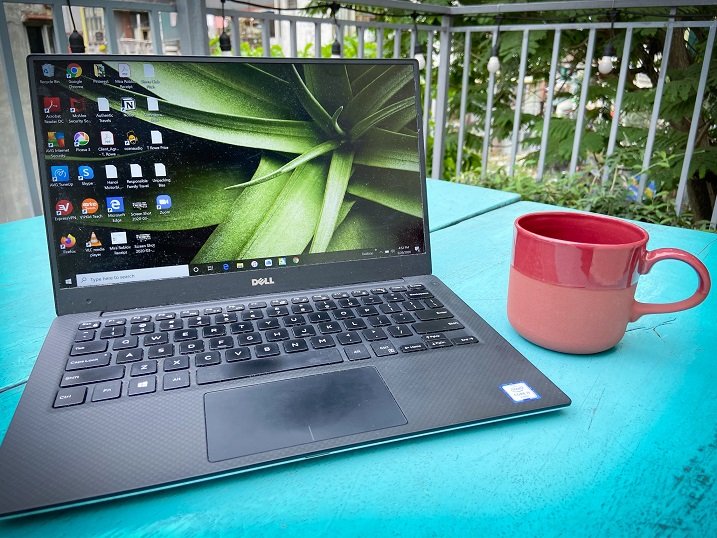
As a digital nomad family, one of the most useful tools for staying connected is a travel WiFi router. In this guest post, my husband, Clint Bush (who works full time as a software engineer), shares his reasons why you need a portable router for travel.
We’ve been working remotely since 2018. As a remote worker, it’s important to have consistent internet connection. Nothing is worse than being on a Zoom call (or leading a meeting, for that matter) and dropping out because of an unstable connection.

Even though we always get a local data SIM card, so we can use a WiFi mobile hotspot from our phone if the internet goes down, our travel WiFi router is by far one of the key tools in our digital nomad toolbox. Read this post to learn which travel WiFi router brands we prefer, and why you’ll want to travel with a portable WiFi router.
This post was written by Clint Bush and originally published on November 18, 2018.
This post may contain affiliate links. That means I may receive a small commission if you click on the link and purchase something. But don't worry, this will not result in any extra costs to you.
Table of Contents
Our top picks for a travel WiFi router
Want some quick tips for which travel WiFi router to choose? Here’s our top pick for a portable WiFi router, along with our pick for a mesh network and WiFi extender.
- Travel wifi router: GL. iNet Slate AX (GL-AXT1800)
- Mesh network: Amazon eero 6+ mesh Wi-Fi system (up to 4,500 sq. ft.)
- WiFi extender: TP-Link WiFi Extender (up to 1,200 sq. ft.)
What is a travel WiFi router?
For those who might not know the function of a travel WiFi router, here's a quick IT lesson. Internet connection gets sent in analog form through a cable from the cable company into your hotel or home. The cable connects to a modem that converts it from an analog signal to a digital signal.

A router then connects to the modem (or is built into the modem) via a cable. That router turns the internet signal into radio frequencies that are broadcast out. This is WiFi (short for wireless fidelity) - the radio broadcasting of internet signals.
Since the WiFi signal is a radio frequency, it is subject to interference that can be caused by other radio signals in the air, microwaves, concrete walls, etc. The point is if you only have a single router outputting a signal on one end of the house or hotel, and you are on the other end, how strong is the signal going to be?
For travelers, and especially digital nomads who rely on reliable internet for work, one quick fix is to carry a portable wireless router.
Travel WiFi router brands to buy
In terms of a good travel WiFi router, as well as a WiFi extender or a mesh network, there are several major brands out there. If you’re planning on using a virtual private network (VPN) such as ExpressVPN , they have a list of routers (such as the Netgear Nighthawk ) they directly work with, but I find them too bulky and expensive especially for travel.
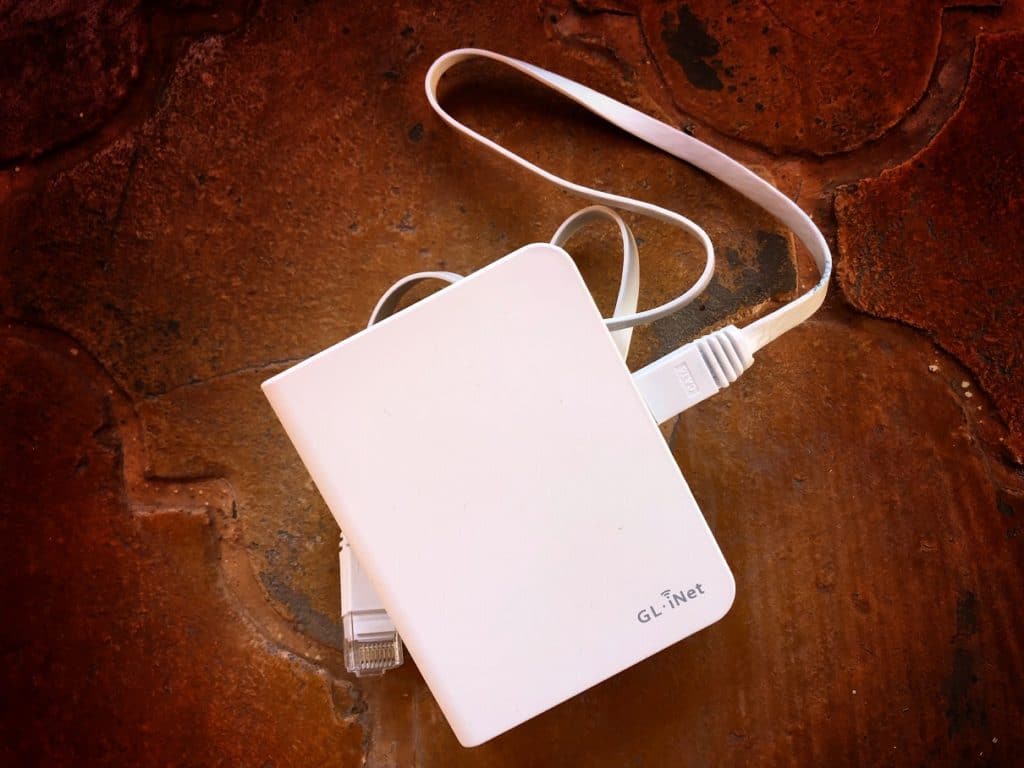
I prefer a more compact travel router that can run OpenVPN directly. While this involves additional setup and requires some network knowledge (Express VPN has a good walkthrough ), the small size of the travel WiFi router makes it convenient for travel.
If you want to try out Express VPN, snag my referral code to get 30 days free !
One major advantage of the bulkier Express VPN-approved travel WiFi routers compared to a mini wireless router for travel is speed. This is especially important when using a VPN. Our small travel WiFi router does a great job, but if we need to stream video the travel router WiFi can’t always handle that. VPN speeds can throttle quite a bit. Getting one of the bigger approved routers can increase your connection speeds and handle larger bandwidth loads better.

Ready for a change? Take the first step to living a life of full time travel.
However, if you’re traveling, you’ll want to focus on compactness, rather than bulk. Besides a travel WiFi router, you can also consider traveling with a mesh network (multiple travel routers that connect to the original router to act as a single network) or a WiFi range extender (that extends your WiFi signal). Here are the top brands of wireless travel routers that we recommend.
We like GL.iNet because their products perform consistently well. We traveled with the GL.iNet GL-AR750 (Creta) travel WiFi router in the past, as well as an older version of the GL.iNet GL-MT3000 (Beryl) wireless travel router. However, there are plenty of other travel WiFi routers from GL.iNet that you can bring for your travels.
The GL.iNet travel routers we recommend have a USB port and an ethernet port (or multiple ports) so you can plug into the device directly. Click the buttons below to look at these travel WiFi routers from GL.iNet.
Amazon eero
If you’re planning on staying somewhere that will give you direct access to the original router, then bringing along a mesh network might be more useful than a single travel WiFi router. Essentially, a mesh network is a set of routers that link to the main router to create a blanket network throughout the space, sending consistent wireless signals. This is ideal if you’re planning on housesitting or staying at someone’s house, as you’ll likely be able to directly connect with the main internet router.
One drawback of traveling with a mesh network is that you’re bringing multiple devices instead of just one item (the mesh network usually comes in sets of 3). Additionally, mesh networks tend to have a higher price point (because they’re multiple devices), so you’ll need to be careful when traveling with these expensive devices.
Check out these mesh networks from Amazon eero.
We have not personally used TP Link, but have read positive reviews of their devices. Like GL.iNet, they offer a travel WiFi router that travelers can use. And like the Amazon eero, they also have a mesh network option.
TP Link also offers a dual band WiFi extender, which can help extend the range of WiFi signals from your Airbnb or hotel WiFi router, using both 2.4 GHz and 5 GHz frequencies. This extender requires a United States outlet for its power supply, but you can carry a power adapter if you’re traveling overseas.
One thing to note about using a WiFi extender, the strength of the signal will be weak at its farthest point of the extender range.
Learn more about the amazing family travel resources we use for worldschooling!
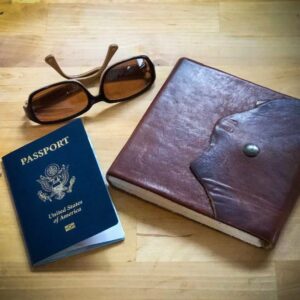
Benefits and tips for how to use a portable router
There are many benefits to carrying a travel WiFi router with you whenever you travel. Primarily, a travel WiFi router helps repeat the WiFi signal and minimizes the instances of spotty WiFi. Additionally a travel WiFi router allows for multiple devices to connect to the WiFi network, and allows for use of a VPN.

Once you know the benefits of having a travel WiFi router, it’s also helpful to know how to use a portable router. Here are some details of why a travel WiFi router is beneficial for travel, and how to use a portable router (and VPN) for travel.
1. WiFi repeating
This is the first benefit of your own travel wifi router: repeating the signal. Many routers these days have the ability to pick up an existing WiFi signal and extend or repeat that signal.
By placing an additional portable router closer to the WiFi signal, you can extend the distance of that WiFi signal. This increases your coverage across the house or hotel room. You will lose a bit of speed when you do this. Keep that in mind if you are trying to stream a video or play a game online.
2. Optional hard-wiring to skip spotty public WiFi
This tip will only help you if you are in a hotel that has an ethernet cable available to you. This is usually the case in business hotels, or if the home or AirBnB you are staying at has the router directly in the unit.
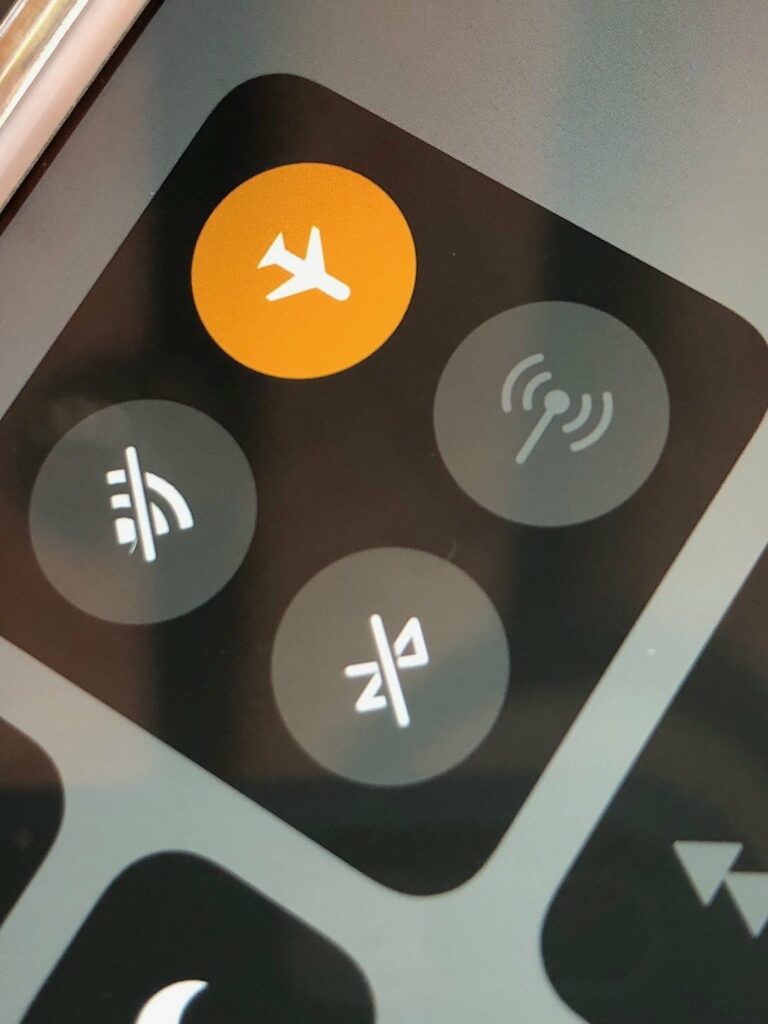
If either of these are the case, and you have the option to plugin an ethernet cable, then having a portable router can allow you to create your own WiFi network off of that wired connection. That means all of your devices can connect to a single WiFi source. This is way more reliable than the public WiFi available to you.
3. Easy connecting for multiple devices
One of my favorite reasons to use a portable router is the ease of connection setup when I get to a new location for all of our devices. Between our family we have multiple laptops, tablets, phones, and a Roku. Setting up each of these with new WiFi would be a pain in the neck.
My solution is to connect them to the WiFi network I created on the portable router. That way, I just set up the portable router at the new connection. Voilà one device setup and all devices are connected.
We’ve done this while we were slow traveling in cities like Jakarta , Indonesia and Guanajuato , Mexico.

Get weekly worldschooling tips sent to your inbox with my Worldschooling Wednesday email series.
4. Running VPN directly through a router
If you are using a VPN (and you absolutely should be using a VPN when you're connecting to WiFi outside your home!), you usually run it through each device through an application or VPN configuration. This works perfectly fine for my wife and me, since we remember to turn it on before using the public WiFi.

My kids, on the other hand, they never remember. So if they jump on a device, they are accessing the internet without protection. Of course, they are not logging into bank accounts or sharing sensitive information so it’s not that big of a deal. However, for ease of mind, I still want to make sure they are keeping our information secure.
Read up on the other useful travel gear and tools we travel with around the world.
5. Using a VPN Connection with your travel WiFi router
When it comes to choosing between using VPN vs travel router, there actually isn’t a choice. You should be doing both to ensure that your personal and confidential information remains secure.
Having a travel WiFi router that allows for VPN connection directly through the router is the way to go.
By running the VPN directly through the router, I now know that my kids are automatically connected to the VPN as soon as they start using their device.
6. Advantages of running a VPN through a router
There are several other advantages of running VPN this way too:
- ExpressVPN and other VPN services usually limit your devices you can connect to the VPN at a single moment. ExpressVPN for example limits you to three devices at a time. Have two phone and two laptops between my wife and I alone, we already exceed that. By running the VPN through the router, it only counts as one device rather than four.
- My work laptop can’t run a VPN application on it for a number of reasons, so using it through the router is the only option I have.
- Roku and other similar devices usually don’t have a way to connect to VPN, so running them through the router that has VPN is the only way to go.
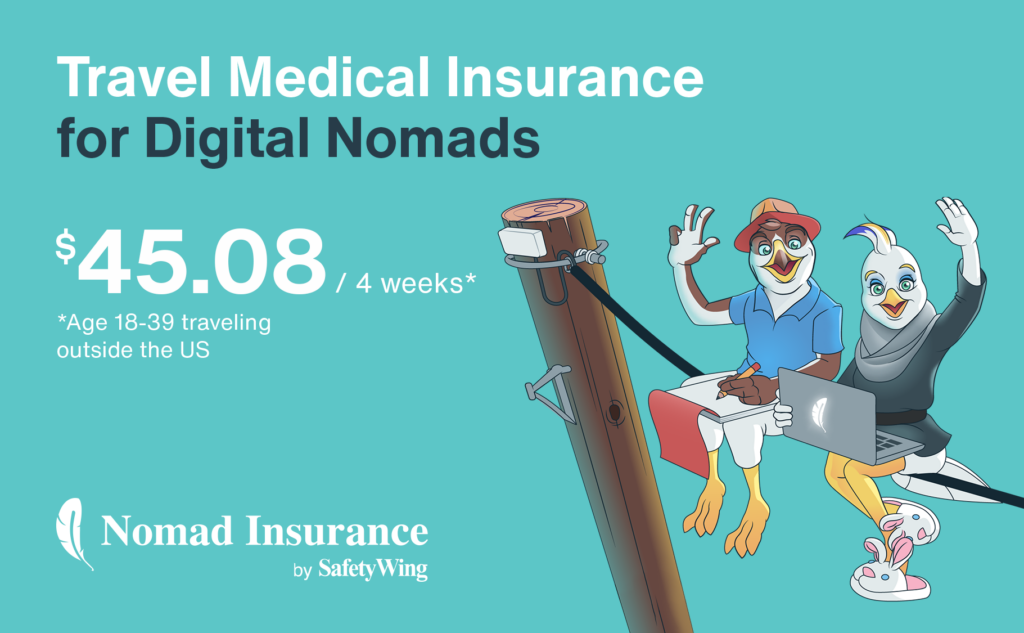
Get prepared for any emergency with the insurance made for digital nomads!
7. Setting up your travel WiFi router
The actual steps on setting up a portable router will vary from router to router, but here are some tips that helped me:
- Find a spot that is centrally located if possible and sit the router mid-level or higher for best broadcasting.
- Plug the router directly into the modem or existing router if possible using an ethernet cable. This will give you the best signal strength.
- When repeating the existing WiFi signal, do some speed tests on the existing network to find the fasted available network to connect to. Sometimes that is only 1 network, so you won’t have any options there. If there are 5GHz vs 2.4GHz options, experiment with both to see which of the connections your router works best with. There’s a whole side discussion about 5GHz and 2.4GHz that I am going to skip for now, but hit me up if you have any questions regarding that.
- Plug the router into a surge protector if possible. Since it will always be plugged in, there is a high risk of power surge. Protect your investment by unplugging at night or plugging into a surge protector.
- Use a WPA-2 password key when creating your WiFi network on the router. This will give you the best protection.
- Remember when using your portable router, your data is not encrypted unless you are using a VPN. Sometimes there’s a false sense of security because you are using your own router and not the existing Public WiFi. Always use a VPN.
Learn about our digital nomad worldschooling lifestyle .
Travel WiFi router: a must have for digital nomads
For those of you living a nomadic lifestyle, and even if you aren't, having a reliable internet connection while you travel is important. There’s no need to be standing by a window all day hoping that your cell phone gets a strong enough signal to hotspot! Those days are over!

With a travel WiFi router (or a mesh network or WiFi extender), you can ensure that you stay connected to the internet. And that’s an important tool to have to help you live the digital nomad travel life of your dreams!
Do you have recommendations for your favorite travel WiFi router? Send me a message and let me know which travel WiFi router you prefer.
Are you wondering what other tools you need to lead a full-time travel lifestyle with your kids? Get a copy of my ebook, Hey Kids, Let’s Go Travel! to get started on planning a family gap year.
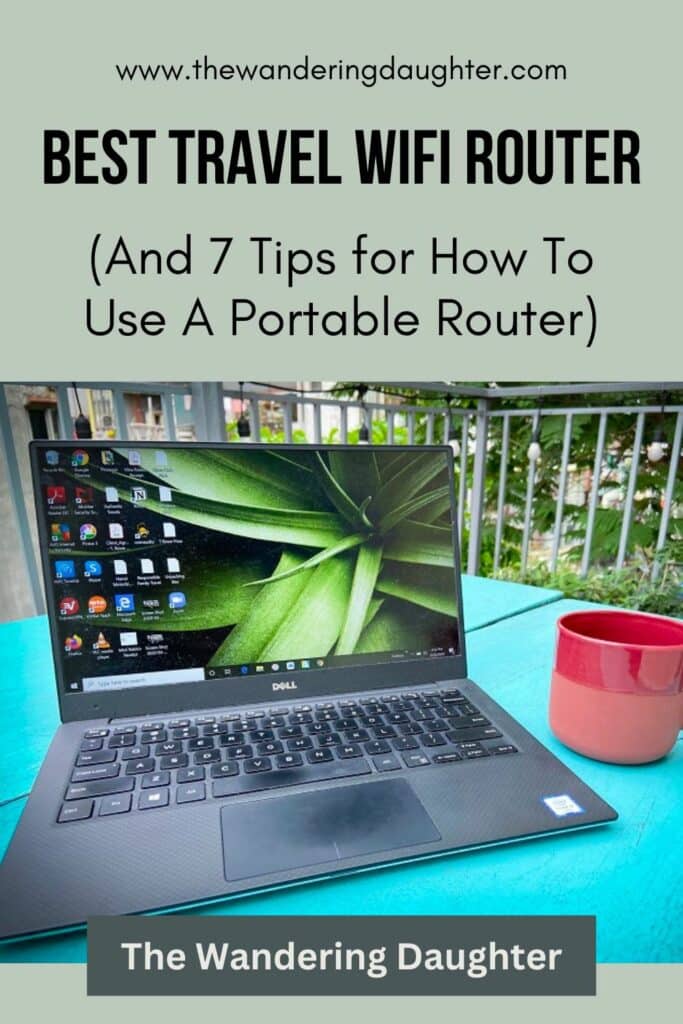
Need help thinking through how to budget for a family trip? My Travel Budget Worksheet is just the tool you need! Click here to receive your free copy by signing up for my newsletter.

Want to connect with me on social media? Find me on Facebook , Instagram , Pinterest , and Twitter. And for those of you who are dedicated to traveling more responsibly, sustainably, and ethically, join over 200 like-minded families on my Facebook group, Responsible Family Travel .
Sharing is caring!
Related Posts

Sign up to get travel tips in your inbox!
Best travel routers 2022
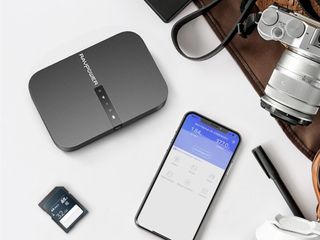
Travel routers have a clear job. They need to link up to a hotel or mobile 4G or 5G connection and supply that signal to your devices. But the best travel routers let you do more than connect to the internet. Some routers allow you to add a VPN to your connection, store files via a MicroSD card or hard drive, and let you charge your devices up. Here are the best picks for portable routers that will do a little more and keep your trip fuss-free.
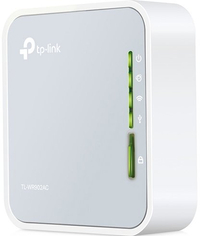
TP-Link TL-WR902AC Wireless Nano Travel Router
Compact and reliable
The TP-Link TL-WR902AC is a compact travel router that can handle a strong connection on the go with an assortment of options. Not only is it reliable for Wi-Fi, but it also has the ability to charge your devices. Its easy setup and small size make it the best choice for a travel router when you want to keep your bags light.
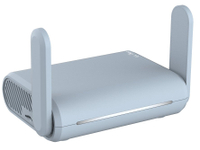
GL.iNet GL-MT1300 Beryl Gigabit Wireless Router
Powerful and secure
The GL.iNet GL-MT1300 travel router is a pricier option for people who want more LAN ports than the competition and a high-speed internet connection. It also supports a 512GB MicroSD card for local storage, which can be useful while traveling. It's not as tiny as the competition, but people looking to trade that for a more powerful router should consider this option.
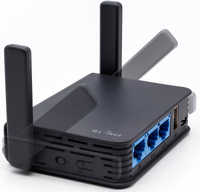
GL.iNet GL-AR750S-Ext Slate Travel Router
Small and fast
A pricey but capable option for anyone looking for a travel router with a fair amount of LAN ports and the ability to maintain a fairly fast connection. This router also has support for VPNs and a 128GB MicroSD card for storage. It doesn't come in a small form factor, but it makes up for that in general throughput.

GL.iNet GL-MT300N-V2 Portable Travel Router
GL.iNet's GL-MT300N-V2 travel router is a cheaper alternative that maintains the features of the company's more expensive offerings. On top of that, it has a bit more RAM if you need to use several devices at once. The compact size and simplicity make it a great choice for a few people trying to get a solid connection while away from home.
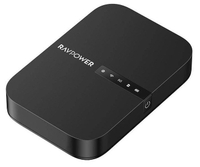
RAVPower FileHub Travel Router
The RAVPower FileHub Travel Router is a solid option for anyone looking for a portable router that can also charge your devices. It also offers competitive internet speeds and the ability to connect to a hard drive for local storage. It's a multi-use device that might not excel at any one thing, but it will satisfy many needs without having to pack more things on your trip.
The best travel router
Why you can trust Windows Central Our expert reviewers spend hours testing and comparing products and services so you can choose the best for you. Find out more about how we test .
The best travel routers do more of the heavy lifting during a trip, so you don't have to. A fast connection on the go is hard to find, especially if you want to add things like a VPN or local storage. Anyone who has gone on trips with lots of photos and video will know the struggles of trying to deal with hotel Wi-Fi. Typically, you need a way to power the travel router via USB, but picking up a strong power brick could make the process easier.
That's why the TP-Link TL-WR902AC travel router is a stellar pick for something that's both compact and useful when you're away from home. It has a solid chipset and a good amount of RAM for most people with a few devices that need to do simple tasks. It can also charge your devices! This extremely affordable travel router is the best pick if you're on a budget and don't need anything beyond your average connection.
For those who want to spend a bit more and can handle dropping the charging benefits of our top pick, the GL.iNet GL-MT1300 Beryl is a fantastic choice. It not only has more LAN ports for wired devices, but it also supports OpenWRT for anyone looking to add things like a VPN to their connection. It may be pricey, but it comes with generally strong hardware to keep up with several devices putting stress on the connection.
The RAVPower FileHub travel router is a niche choice, but a unique one for people looking for a lot out of their router, but it runs behind in usability compared to the competition.
Get the Windows Central Newsletter
All the latest news, reviews, and guides for Windows and Xbox diehards.

Tyler Colp is a freelance writer for Windows Central. He's written about tech, games, and the culture around them across the internet. Ask him anything about Dark Souls or just follow him on Twitter .
- 2 From new Xbox games to AR glasses, here are my favorite things I saw at my very first GDC
- 3 How to turn down brightness on Windows 11
- 4 Microsoft News Roundup: Xbox takes over PlayStation Store, Fallout tops charts, and Microsoft's project Stargate
- 5 Lenovo's latest budget gaming laptop isn't able to beat the value of a cheaper alternative within its own brand
Best Travel Router in 2023 (Portable WiFi On The Go)
Travel routers are designed to be light and portable and convert a Wifi or ethernet connection into your own Wifi. You’ll be able to connect all your devices and your friends and families too, to a private and secure connection no matter what is available in the airport or hotel.
In this review, we have chosen some of the best travel routers around, and there are a lot to choose from. We compared these portable wifi routers against each other and have highlighted their features, pros, and cons so you can make an informed decision and find the best travel router for you.
At A Glance: Our Top Travel Routers
- The Best Overall NETGEAR Nighthawk M1 Jump To Review
- Lightest GL.iNet GL-MT300N-V2 (Mango) Portable Travel Router Jump To Review
- Best Travel Router for Hotels TP Link AC750 Travel Wifi Router Jump To Review
- Best On A Budget GL.iNET GL-AR150 Mini Travel Wireless Router Jump To Review
Top Product Overview
Best travel router, netgear nighthawk m1.

If you’re into Wifi then you’ll have heard of Netgear. They make some of the best wireless travel routers on the market and have added a load of features to the NETGEAR Nighthawk M1 travel router. It is the largest and most expensive router in the review but it does do everything.
The M1 will turn an ethernet connection, modem, wireless network, and your SIM card into a super-fast personal Wifi network anywhere in the world. This is the first router in the review that can create a Wifi internet connection from a 3G or 4G SIM Card.
This means that no matter where in the world you are, you can slot in a local SIM card have Wifi where ever you are. From the beach to the jungle, if there is a 3/4G network available, you’ll be online.
The speed this travel router can deliver is also impressive and it will compete with your home broadband. They have put a four-band Carrier Aggregation and LTE in this router which is what helps it get speeds of up to 1Gbps.
Built into this travel router is a battery that holds up to 20 devices for 24 hours before you need to charge it.
That’s some incredible battery life and it does make the M1 very portable. There is a handy LCD display that shows you the number of devices connected, and internet connection strength, and keeps you up to date with how much data you’re using.
It’s not just a router, however, and it shouldn’t be at $690. It’s also a power bank, provides data sharing and media streaming. It’s also highly configurable to give you exactly the Wifi set up you want where ever you are in the world.
Overall it’s an amazing portable router, it just very expensive and a little bigger than most, but well worth it if it’s in your budget.
- Provides power
- Fast connection
- Data sharing
- Media streaming
- Dual-Band Wi-Fi
- Highly configurable
- Color display
- Long battery life
- Connect through a SIM card
- Very expensive
Product Information
- Size: 4.15 x 4.15 x 0.8"
- Weight: 8.5 oz
- Devices: Up to 20
GlocalMe G4 Pro 4G LTE Travel Router
The GlocalMe G4 is a different type of travel router. It’s an international 4G LTE mobile hotspot that works in 144 countries . You don’t even need a SIM card for this travel router. It does support SIM cards and you can insert one if you want, but the device doesn’t need one to work.
The best thing about this travel router is that the WiFi plans are flexible . You can choose from different international and local data plans, and pay as you go. Also, when you first start using the GlocalMe G4 mobile hotspot, you get 1GB of global data and 8GB of US data for free.
This travel router lets you share your wireless connection with up to 10 devices, so not only can you connect all your devices to the Internet, but you can also share it with your friends and family without needing to disconnect anything.
This mobile hotspot boasts a touchscreen that’s easy to use, as well as an intuitive user interface. It also doubles as a power bank (3,900 mAh), so you can use it to power other devices. The battery has enough power for some 12 hours of continuous use, but it won’t do much to charge your smartphone.
- SIM card supported but not required
- Works in 140+ countries
- Free global and US data included
- Touchscreen interface
- Battery capacity is quite small
- Customer support is not very helpful
- Big and heavy
- Size: 6.69“ x 4.37“ x 1.73“
- Weight: 13.7 ounces
- Devices: Up to 10
GL.iNet GL-MT300N-V2 (Mango) Portable Travel Router

The GL.iNet GL-MT300N is one of the lightest devices you can get your hands on. At 1.41 ounces, this is the lightest travel router available at the moment, so it’s certainly the best option if you need something ultra-portable. Also, it’s so small that you can easily carry it in your pocket.
The Mango router supports both WiFi and Ethernet, with two dedicated ethernet ports. It also has a USB 2.0 port for tethering and compatible 3G and 4G modems, as well as a micro USB port for charging. You can use any adapter to charge the Mango, and you can charge it with your laptop for ultimate convenience.
Additionally, this travel router boasts download speeds of up to 300 Mbp s! It also allows for advanced security encryption, and it comes with a pre-installed OpenVPN client. Don’t worry if that’s not your preferred virtual private network service because this little router is compatible with 30+ other VPN services.
Finally, you can use this portable router in four different ways. It can work as a standard network router if you plug it into an existing Ethernet network, and it also functions as a WiFi repeater when you connect it to an existing WiFi network.
The other two modes are hotspot and AP – the former requires you to connect the Mango to an existing access point in order to create a private hotspot, and the AP mode transforms a wired into a wireless signal, which is perfect for devices that only support wireless connections.
- Most compact device
- Extremely affordable
- Supports download speeds up to 300Mbps
- Works as a WiFi repeater, router, and hotspot
- Can transform the wired signal into a wireless one
- Two Ethernet ports (WAN and LAN)
- It does not detect 5Ghz networks
- No internal battery
- Size: 2.28” x 2.28” x 0.98”
- Weight: 1.41 ounces
- Devices: Not specified
TP Link AC750 Travel Wifi Router

The TP Link AC750 Wireless Travel Router gives you the highest speed for your money out of any of the travel routers in the review. It can give up to 733Mbps depending on the wired network and it does it for $40.
This TP-Link wireless router is not only fast but it’s also very versatile in terms of Wifi connectivity. It does everything you’d expect like creating a secure Wifi network from a direct ethernet connection, Wifi connection, modem connection, and a WISP hotspot.
The special bit is that it also works as a range extender and you can connect a device to the router using a wired connection. So if your TV, for example, needs a hardline ethernet cable to connect to the internet, you can run one from the Ac750 directly to it.
As well as being great at Wifi, you can also use it as a power bank and for file sharing. It’s pretty light and compact too making it a great all-rounder. The only downside is that the port layouts are quite annoying and the instructions aren’t clear and could get frustrating.
Overall, this is a fast, versatile travel router from TP Link that’s not going to break the bank. Plus it comes with a 2-year warranty. And given its versatility, it would make the perfect wifi travel router for hotels or cruiseships.
- Fast, light & compact
- File sharing
- 2-year warranty
- Bad instructions
- Annoying port layout
- Size: 2.64 x 2.91 x 0.87"
- Weight: 8 oz
- Devices: Quite a few (number not specified)
TP-Link N300 Wireless Travel Router
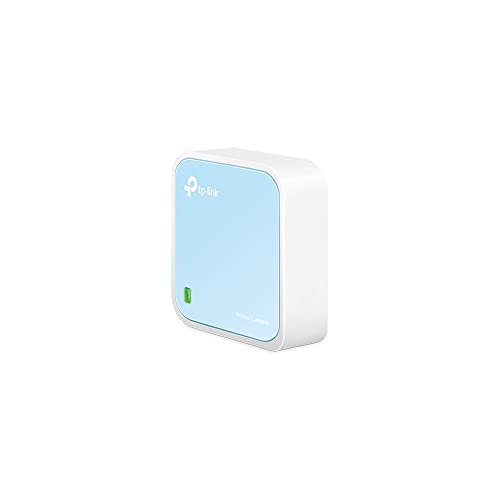
The TP-Link N300 Wireless Travel Router is the simplest travel router in the review. Simply put, it is just a travel router and doesn’t have any extra’s like file-sharing or being able to be used as a power bank.
Removing the extras makes it light, portable, and capable of getting a speed of up to 300Mbps .
The band connection also provides lag-free streaming. The travel router can be connected to a cable to create a wireless network, to a modem as an AP, used as a repeater, a booster, and as a hotspot.
It’s also compatible with Chromecast or Amazon FireStick so you can watch all your favorite movies on the go too. Being so light, it doesn’t have an inbuilt battery and you’ll need to connect it to a power source through the micro USB port.
This means you can charge it from the wall, your lightweight laptop , or a power bank, giving you Wifi internet connection where ever you are.
The setup for this travel router is incredibly easy and takes under a minute. Once set up it can be connected to by as many devices as you like but its performance does decrease noticeably with multiple devices.
Overall a simple, fast, portable, and easy-to-use router that also comes with 24/7 support and a 2-year warranty.
- A few wireless modes
- Simple to use
- No USB ports
- Struggles with multiple devices
- Size: 2.2 x 2.2 x 0.7"
- Weight: 7.2oz
- Devices: As many as you like
GL.iNET GL-AR150 Mini Travel Wireless Router

The GL.iNET GL-AR150 Travel Router is a great choice for anyone who wants a router that’s super-portable, simple, and just a router.
This little guy weighs just over 1 oz and is compact enough to slip into your pocket or purse with ease. It can create a Wifi network from just about anything except a SIM card. You can connect it to a modem, ethernet cable, or existing Wifi internet connection, or tether it to your phone or dongle via USB.
One of the best features of this travel router is its security. Traveling around the world means unsecured networks, but once you plug this baby in, you’re getting a Wifi network with a firewall, instantly.
It comes with Open VPN pre-installed and is compatible with over 20 providers, so where ever you connect, you’ll know you’re secure.
It comes without an internal battery but you can charge it from your laptop’s USB or from a wall socket. It comes with 2 ethernet ports, 64MB of RAM, and 16MB of flash. You can also increase this via USB. It’s also Open Source and programmable so you can have full control over everything.
This is an awesome travel router and for just $27, you can’t go wrong.
- 2x Ethernet port
- Tethers to your mobile phone
- Programmable
- Light & compact
- Tricky to set up
- Only supports 2.4GHz
- Size: 2.28 x 2.28 x 0.98"
- Weight: 1.59 oz
Huawei E5576-320 4G LTE Travel Router

The Huawei E5576-320 Travel Router is a good option if you need a compact but reliable device. It needs a SIM card to work, and then it turns into a mobile hotspot that can be used by up to 16 devices at the same time. With a battery of 1500 mAh, you can use this device for up to six hours at a time, before it needs to be recharged.
The battery life could certainly be improved, but at least you can use this device while it’s charging, so you can just keep it plugged into a power bank. Also, the Huawei router boasts a removable battery. Carrying an additional battery is always an option since it means you can just replace the original one when it runs out of juice, without needing to disconnect from the WiFi.
This travel router supports 3G and 4G mobile bands – it’s compatible with 4G LTE in Europe, Asia, and Africa, but only the 3G will work in the USA, Mexico, and Canada. You get download speeds up to 150Mbps on 4G, and up to 43.2Mbps on the 3G networks. Upload speeds are not that bad either – it’s up to 40Mbps on the 4G network, and up to 5.76Mbps on 3G.
In case you need something for travel in North and South America, you should check out Huawei E5576-508 mobile hotspot, which was made specifically for that market and has better compatibility with mobile phone carriers in the Americas.
- Compact and lightweight
- Great upload and download speeds on 4G LTE
- Not expensive
- Works while charging
- Supports connections to up to 16 devices simultaneously
- Small battery capacity
- Only 3G LTE works in the USA, Mexico, and Canada
- Does not double as a power bank
- Size: 3.94“ x 0.28“ x 2.28“
- Weight: 3.53 ounces
- Devices: Up to 16
GL.iNet GL-AR750S-Ext Gigabit Travel AC Router

If you’re a technical wiz and looking for a travel router that’s versatile and offers you a lot of programmabilities, then the GL.iNet GL-AR750S-Ext Gigabit Travel AC Router is a great choice.
This wireless router will create a highly secure Wifi network from a modem, ethernet connection, wifi connection, dongle, and from your phone. It works over a dual-band and it’s pretty fast offering speeds up to 733Mbps.
It comes with 3 ethernet ports to give wired devices internet access. It has a USB port to open up local fire sharing. There is also an SD card slot to provide you with built-in storage space.
It’s programmable and comes pre-installed with OpenVPN and WireGuard to act as a VPN client and server out of the box.
This means your connection will be very secure no matter where you are. It also arrives configured to use Cloudflare’s encrypted DNS servers for additional security. You will have to update it to the latest firmware when you get it though.
Overall a fast, secure, and technical, wireless travel router that’s got a lot of bang for its buck.
- 3 Gigabit Ethernet Ports
- Great VPN support
- Awesome security
- Programable
- SD card slot
- Can be tricky to set up
- Size: 3.90 x 2.70 x 0.90"
- Weight: 3.03 oz
What To Look For In A Travel Router
Here are some key factors to consider when buying a great travel router.
Size & Weight
When it comes to portability both the size and weight of a router are important considerations. You’ll want it to slip easily into your carry-on luggage and not take any valuable weight or space. All the travel routers in this review are light and portable but some are much lighter and compact than others.
Another thing to consider is your travel router power source. Some travel routers come without an inbuilt battery making them very light but they will need to be plugged in to use them.
This means having a power bank ready or plugging them into your laptop’s USB port. Wifi travel routers with an inbuilt battery will be easy to carry around but you’ll need to make sure to pack the right charging cables and plug for your trip.
Travel Router Connection Options
Every router in the review will turn an ethernet, modem, or Wifi connection into your own Wifi connection but not all of them connect to a dongle, phone, or SIM card. There are a few in the review that do connect to all of these, like the ETGEAR Nighthawk M1 or the GL.iNET GL-AR150 Mini Travel Router , so if you’re wanting to use your phone or a Sim card to give you Wifi anywhere, be sure to pick s router that can do it.
Security and Encryption
In order to keep your connection secure, you want a wireless router that offers WPA2 encryption or has a built-in VPN. All the portable routers in the review provide some security but if you want the maximum, go for one of the ones with a built-in VPN.
Overall Speed & Range
Faster portable routers usually mean spending a little more. Think about the speed and the range you’re likely to need on your travels. If you’re going to need to stream HD across 5 devices or have multiple conference calls across multiple devices, you’ll need a wireless router with some solid bandwidth.
If it’s just for you to do some work on, watch a movie, and call home, then you’ll be fine with a lower speed.
Consider Extra’s
Some of the routers in the review are plain routers while others are more multi-tools. Some can also be used as a power source, for file sharing, can have in-built storage, and connect to media streaming. If you want these added benefits, be sure to choose one with them.
Our Favourite Wifi Travel Routers
Here are our top choices from the review.
The lightest travel router of them all is the GL.iNet Mango at just 1.4 ounces. It’s so small and compact that you can carry it in your pocket, but it still does everything a good router should. With download speeds of up to 300Mbps and a price of just some $30, it’s hard to find flaws in this travel router!
- 【WIRELESS MOBILE MINI TRAVEL ROUTER】 Convert a public network (wired or wireless) to a private Wi-Fi for secure surfing. Tethering. Powered by any laptop USB, power banks or 5V/2A DC adapters (sold separately). 39g (1.41 Oz) only, portable and pocket friendly. 2.4GHz ONLY
- 【OPEN SOURCE & PROGRAMMABLE】 OpenWrt pre-installed, USB disk extendable.
The best travel router is the NETGEAR Nighthawk M1 . This is one of the fastest and best multi-use travel routers on the market. It can turn anything into a fast, secure network, even a SIM card. It’s also a power bank, data sharer, and media streamer. You can have up to 20 devices all working from the same router, sharing data, anywhere, even at the beach.
- Share WiFi internet access with up to 20 devices
- Connect to your existing home router using the Gigabit Ethernet port for fast, reliable primary or backup Internet connection. Ideal for homes with poor internet service or coverage
The best travel router on a budget is the GL.iNET GL-AR150 Travel Router . This router is tiny, light, compact, and very secure. It can turn anything into a secured VPN, even your phone’s 4G signal and it’s just $27.
- 【WIRELESS MOBILE MINI TRAVEL ROUTER】 Convert a public network(wired/wireless) to a private Wi-Fi for secure surfing. Create a secure Wi-Fi hotspot quickly. Tethering, 3G/4G USB Modem Compatible. Powered by any laptop USB, power banks or 5V DC adapters (sold separately). 39g (1.41 Oz) only, portable and pocket friendly.
- 【OPEN SOURCE & PROGRAMMABLE】 OpenWrt/LEDE pre-installed, backed by software repository. DDWrt supported. USB disk extendable.
- Overview Guide
- 1 Week Itinerary
- Train Journeys
- Epic Drives
- Stunning Lakes
- Historic Castles
- Lauterbrunnen
- Grindelwald
- Chocolate Tours
- Swiss National Park
- Majestic Mountains
- Spectacular Waterfalls
- Famous Things
- Tasty Fondue
- 10 Day Itinerary
- Cherry Blossoms
- Tokyo Shrines
- Dos and Don’ts
- Osaka Guide
- Osaka Itinerary
- Osaka or Kyoto
- Kyoto Day Trips
- Matsumoto Castle
- Tokyo Luxury Hotels
- Island Hopping
- Best Campsites
- Driving Tips
- Beaune, France
- Barcelona Itinerary
- Spain Itinerary
- Greece Itinerary
- Italy Road Trips
- Berlin Day Trips
- Norway Northern Lights
- Netherlands National Parks
- Mostar, Bosnia
- Best Airlines
- Midwest Ski Resorts
- Florida RV Parks
- Washington RV Parks
- Oregon RV Parks
- Utah Camping
- Texas Camping
- Chicago National Parks
- East Coast National Parks
- Colorado National Parks
- Joshua Tree
- Yellowstone
- Alberta Hikes
- Flashlights
- Water Filters
- Sleeping Pads
- Solar Lanterns
- Tent Brands
- 4-Person Tents
- 4 Seasons Tents
- Backpacking Tents
- Beach Tents
- Cabin Tents
- Multi-room Tents
- Pop-up Tents
- Truck Bed Tents
- Underwear (Men)
- Backpacks Under $100
- Microspikes
- Boonie Hats
- In The World
- New Zealand
- Hardisde Luggage
- Lightweight Luggage
- Luggage Sets
- Spinner Luggage
- Durable Suitcases
- Duffel Bags
- Kids Luggage
- Teen Luggage
- Space Saving Luggage
- Business Carry-Ons
- Garment Carry-Ons
- Suitcases Under $50
- Travel Briefcase
- Zipperless Suitcases
- Rolling Briefcase
- Luggage Straps
- Luxury Brands
- American Tourister
- AmazonBasics
- Delsey Chatelet
- Anti-Theft Backpacks
- Backpacks Under $50
- Baby Carrier Backpacks
- Cooler Backpacks
- Backpacking Backpacks
- Climbing Backpacks
- Backpacks for Back Pain
- Beach Backpacks
- Hiking Backpacks
- Business Travel Backpacks
- Laptop Backpacks
- Backpacks for Tablets
- Commuter Backpacks
- Travel Backpacks (Men)
- Travel Backpacks (Women)
- Waterproof Backpacks
- Wheeled Backpacks
- Down Jackets
- Down Parkas
- Fleece Jackets
- Hardshell Jackets
- Rain Jackets
- Softshell Jackets
- Eco Friendly Jackets
- Gore Tex Alternatives
- Heated Jackets
- Lightweight Jackets
- 3-in-1 Waterproof Jackets
- Parajumper Jackets
- Rain Poncho
- Ski Jackets
- Travel Hoodies
- Travel Jackets
- Winter Coats
- Helly Hansen
- Mammut Jackets
- Patagonia Nanopuff
- Survival Jackets
- Flower Captions
- Waterfall Captions
- Tree Captions
- Sunset Captions
- Sunflower Captions
- Rainbow Captions
- Paddle Boarding Captions
- Hot Air Balloon Captions
- Kayaking Captions
- Airplane Captions For Instagram
- Forest Captions

Savvy Travel Advice
Best Travel Routers for Internet while Traveling
Last updated: April 14, 2024 - Written by Jessica Norah 224 Comments
These days most travelers want to be able to get online regularly while traveling to check email, get directions, check hotel and restaurant reviews, upload photos, update social media, and stay in touch with those back home. Travel routers can help with this.
It is definitely easier to stay connected as wireless Internet is now widely available in most parts of the world but there are still a number of situations when it can be tricky (or expensive) to connect.
As travel bloggers who regularly have to manage our business on the go, it is often really important for us to be able to get online on a regular basis while traveling and it can be very frustrating when we are in a hotel with weak Wi-Fi, we are being restricted from using multiple devices on one Internet connection, or we would like more security when using an unsecured public hotspot.
A travel router is a compact little device which solves these common Internet issues and offers a number of features to the on-the-go traveler who wants to stay connected. In this post we’re going to go through some of the best travel router options available on the market today based on real-world testing and personal experiences, so you can pick the right option for you.
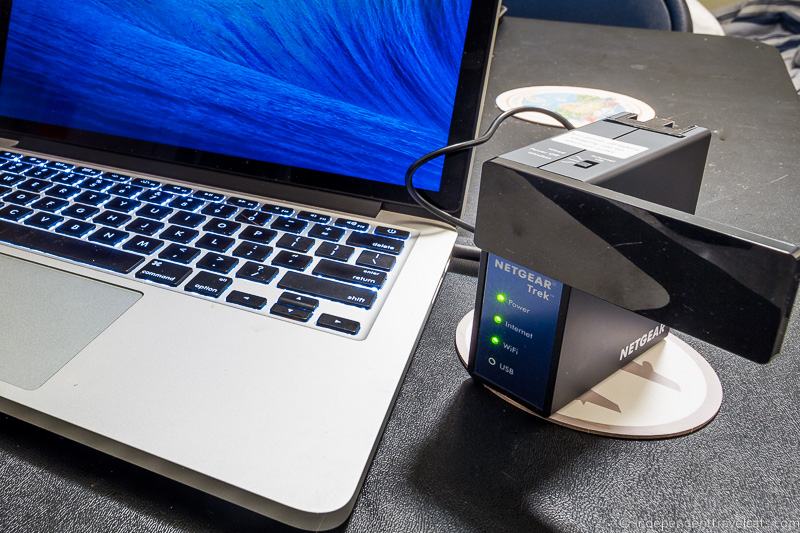
Table of Contents:
Basic Information on what a Travel Router Does
If you are new to travel routers, also known as portable WIFI routers, this section will help you understand what they do and whether they might be a good fit for your travels or not.
We understand that a lot of the terminology can be somewhat opaque, so Laurence has put his years of experience as a software engineer to use to help explain everything you need to know.
What is a Travel Router?
A travel router is a wireless range extender designed for people who are on the go and need to connect to the Internet when they are away from home. It also performs the functions of a wireless access point.
Just like you would use a home WiFi router to connect your devices to the Internet at home, you may also want to consider having a portable router to use when traveling.
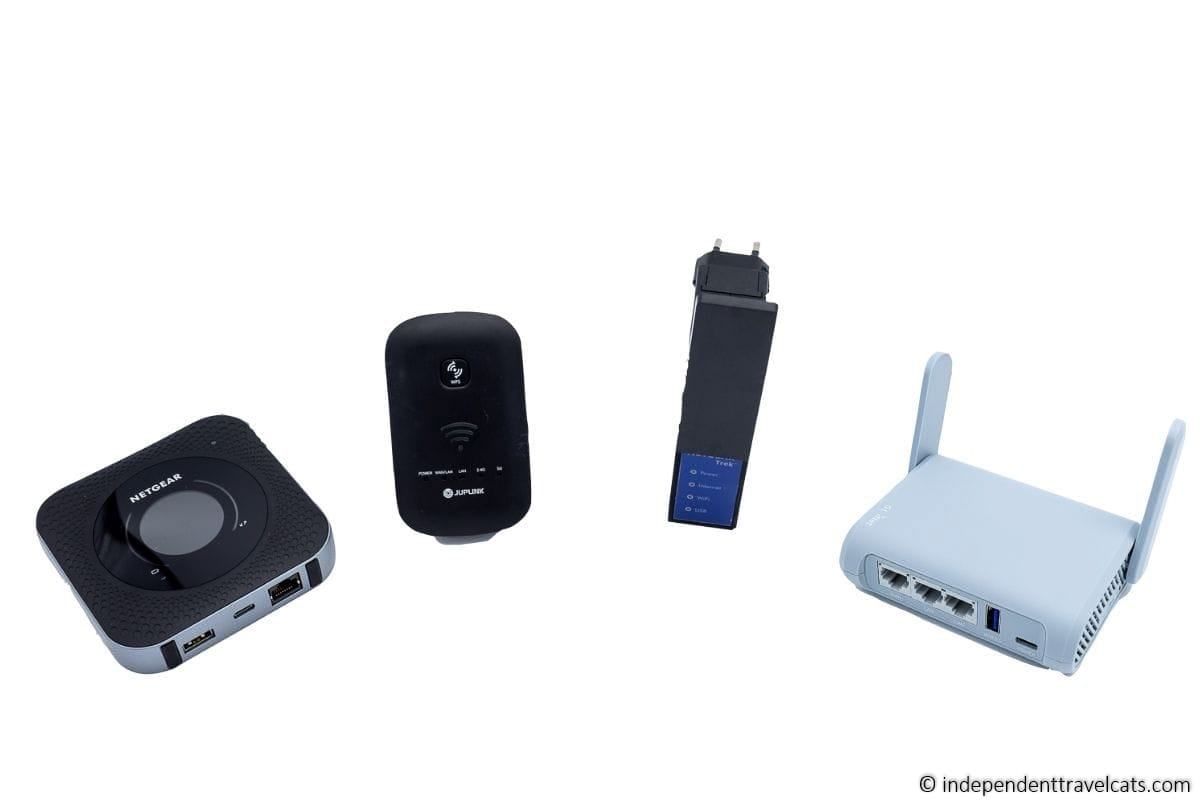
What does a Travel Router do?
Different wireless travel routers have different features, but the main feature is that they increase the range of existing wireless Internet networks. So for example, if you are in a hotel with a weak wireless signal that you are having difficulty connecting to with your laptop or phone, the travel router will amplify the signal so you can connect more easily.
Here is an overview of the main features of a travel router:
- A travel router can extend the range of wireless networks , meaning you can connect to a network somewhere that you might not have been able to connect to with your device because the signal is too weak. The powerful antenna of a travel router can pick up this weak signal and amplify it so your devices can connect to it.
- The travel router also creates a secure wireless network at a public hotspot to better protect your devices . Often when traveling the networks we connect to are unsecured and unencrypted, which means anyone could in theory grab hold of passwords or other data that we send to and from the internet. Travel routers feature a firewall which protects your personal devices from known DoS attacks and port scans from the Internet, giving you a more secure internet connection. However, it is still not recommended that you share sensitive information over a public connection.
- A travel router allows you to connect multiple devices to a network , even with a single login. The travel router is seen by networks as a single device, so if you are only given one login, you can still use multiple devices. You just login once from the travel router via a web browser (or in some cases a provided smartphone app), and then all your devices can be connected to the network created by the travel router.
- Some travel routers can also be used as a WiFi bridge . These have Ethernet ports so you can connect Ethernet-enabled devices wirelessly to an existing WiFi network. These can include Internet-ready TVs, Blu-ray players, and gaming consoles.
- Other features of travel routers may include the ability to connect to a wired network and turn that into a wireless network, to provide USB charging power to devices such as phones. to work without power, and even to act as an SD Card reader or media hub.
- Some travel routers (including one on our list) can also act as mobile hotspots, but this is not common. See our guide to mobile hotspots for more options in this area.
How much do travel routers cost?
Travel routers range in price from about $20 to $130, although more expensive models with more features are available. We’d recommend that most people look at ones in the $30 to $70 range, as these will work for most users.
If you have a small budget, you can get a decent travel router for around $30. See our recommended travel router list later in the article; they are listed in order by retail price. But beware of ones that are really cheap as they may not work well as advertised.
If you need a travel router that also acts as a mobile hotspot or has other specialized features, then you will pay extra. Some of these can be upwards of $200.

The Best Travel Routers 2024
There are a number of travel routers on the market today, which range in price and features. All the below models would make for a good choice, and the model you choose will depend on your budget and required features.
We currently use a GL.iNet GL-MT1300 which replaces our previous and now discontinued Netgear Trek N300 (PR2000).
We also use the Netgear Nighthawk M1 on some trips when we need access to the Internet as this functions primarily as a mobile hotspot, but it can also be used as a travel router.
Below are our current favorite recommendations:
1. GL.iNET GL-MT300N-V2 (Mango) Mini Travel Router
This is the first of a few GL.iNet routers that we recommend in this post. We like them for a number of reasons. First, they’re based on the OpenWRT software, which is a Linux based operating system that receives regular updates. GL.iNet keep on top of regular firmware updates, so the routers stay secure and get new features. This is unfortunately not as common as you might think, but it is super important to keep your devices safe.
As an example, the GL.iNet routers we list have all been upgraded to include support for WPA3, the latest wireless security standard. Regular updates and support for new features is definitely a benefit when it comes to a travel router, and means it will likely be more future proof.
Whilst this may all sound quite technical, the good news is that you don’t need to really worry about it if you’re not an advanced user. The devices have a simple interface and are easy to setup, and upgrades are just a single click option. If you want to dive into more advanced options you can, but the device works great out of the box, with setup via a simple web interface.
All the GL.iNet routers in our list also all support VPN credentials (see why you need a VPN for travel here ). This means that if you have a VPN account for more secure browsing like NordVPN , all your devices will connect through that when using this device.

The MT300N-V2 model, also known as Mango, is one of the more entry level options in terms of price and features, but if you’re looking for a small device that will do pretty much everything you are likely to need from a travel router, it’s a great option.
You get 300Mbps 2.4Ghz WiFi support, WPA2 and WPA3 support, and two 100 Mbps Ethernet ports for sharing a wired network. It’s also very privacy-focused. As well as the aforementioned VPN support, it also comes with built-in support for Cloudflare’s DNS over TLS. This basically means your internet connection is going to be pretty secure and hard for anyone to snoop on.
Another great feature is that if you have a smartphone with tethering support, or a 3G/4G data dongle, you can plug this smartphone into the USB 2 port on this router, and share the phone’s data over the router’s WiFi network.
The device is powered by USB, so any USB power source can power it, including a power bank or smartphone charger.
The reviews are positive and it’s available at a great price for a travel router that supports 300Mbps and only weighs 1.41oz. It is not as fully featured as some of the other options, in particular it only operates on the 2.4GHz band and the ethernet ports are 100Mbit rather than gigabit. However for most users this likely won’t make a significant difference.
If you are after a lightweight great value travel router with VPN support, this is a solid option.
Price: Check latest price on Amazon here
2. TP-Link TL-WR902AC Router
The TP-Link TL-WR902AC wireless travel router is another small, value option that is worth considering.

This weighs just 2oz, is powered by USB and supports the 802.11ac standard, which offers speeds up to 433Mbps. We’re not sure this speed will make much difference in the real world, as you’re always limited by the speed of the network you connect to, it is good to have.
It also has a USB port that you can connect a USB drive to for file sharing, or to charge a smartphone or other USB powered device. There’s also a 100Mbps ethernet port. It doesn’t have a built-in battery, so it does need to be powered from either a USB battery pack or a wall adaptor.
This is definitely an option if you’re looking for a small travel router at a good price, but be aware the software is not updated as regularly as the GL-iNet and it doesn’t have as many features such as VPN support.
Price: Check the latest price on Amazon here
3. NewQ Filehub AC 750
If you’re after a travel router with a few more features and great functionality, then the NeqQ Filehub AC750 is a good choice. It may also allow you to replace some of the other devices you typically travel with to pack less.

As well as offering a fast 433Mbps network with support for both 2.4GHz and 5GHz networks, this device features a 6700mah battery so it works without needing power, and can also be used to charge your devices.
It also features an SD Card reader and a USB port, so you can transfer files from memory cards to your hard drives or computer. It also has DLNA compatible media serving capabilities, although it is missing built in VPN support.
The latter means you can plug in a hard drive or memory card with your movies on, and stream them directly to your TV, laptop, or mobile phone. There’s a lot of functionality for the price and it weighs under 7 ounces!
Price: Check the latest price on Amazon here .
4. GL.iNet GL-A1300 (Slate Plus) Travel Router
The GL-A1300 from Gl.iNet is the latest version of the travel router we currently use. The GL-A1300 supports 400Mbps on the 2.4Ghz channel, and up to 867Mbps on the 5Ghz channel. It also supports up to 40 devices simultaneously, thanks to a relatively fast processor and lots of RAM.
Like the other GL.iNet routers it also gets regular updates and includes support for features like IPv6 and WPA3, as well as lots of other advanced features that make this perfect for both travel and at home use.

Now, to be honest, most WiFi networks you connect to aren’t going to offer internet speeds which this router can take advantage of. However, if you happen to connect to one that is that fast, this device will let you take full advantage of it! It also means when you’re not travelling you can use it at home as a fast network option to extend an existing network.
You also get three gigabit ethernet ports, a faster USB 3.0 port with media server capabilities, a micro SD slot for storage, and a USB-C port for power. As with the other GL.iNet devices in this list, If you have a smartphone that supports tethering, you can plug it into the USB port and share your smartphone data as well. Or, if you have a USB 3G/4G modem, you can plug that into the USB slot and share that data.
This router is also specifically designed to provide good support for a wide range of VPN services as well as support for IPv6, making this one of the most future proof travel routers we’re aware of on the market. It weighs 6.3oz, so it’s not the smallest option, but it’s still very compact and offers a lot of functionality for the price.
5. GL.iNet GL-MT3000 (Beryl AX)
Launched in December 2022, this travel router takes the speed crown from our previous fastest travel router, the GL.iNet GL-MT1300 (Beryl) , and as the name suggests, is an upgrade over the 1300 Beryl model.

If you want one of the fastest and most future proof travel routers on the market, this is the model to go for. It’s one of the few travel routers we know of currently that supports the latest WiFi 6 standard, with speeds of up to 574Mbps on the 2.4GHz channel and a blazing fast 2402Mbps on the 5Ghz channel.
It also has an incredibly fast dual-core CPU and double the RAM of the previous Beryl model, meaning it can support up to 70 connected devices simultaneously.
You also get a USB 3 port for tethering support and 2 LAN ports. One of those LAN ports offers gigabit speeds whilst the other is 2.5 gigabits, which is about as fast as you can get, and ideal if you also want to use this at home with a fibre connection.
It otherwise has the same features as the other GL.iNet products, so you get regular updates and support for VPN connectivity if you have a VPN account. If you do have a VPN, this router offers WireGuard speeds of up to 300Mbps, which is incredibly fast compared to other travel routers on the market.
To be honest, this router is probably a bit much for most general travel needs. However, If you have a lot of devices to connect, or just want the fastest option with all the features, and support for USB 3, this is the one to go for. At 7oz, it’s not the lightest option out there but you do get incredible performance.
Price : Check latest price on Amazon here .
6. Netgear Nighthawk M1
If you are looking for a product that is both a mobile hotspot and a travel router, the Netgear Nighthawk M1 (MR1100) is an option to consider. This is for people who know they are going to be traveling in places without Internet access.

As well as offering travel router capabilities like extending an ethernet or wireless network, this device also lets you put a 4G LTE SIM card into it, and use it as a mobile hotspot when you are away from wireless or ethernet.
It has a 5040mAH built in battery which you can use to charge your phone, media streaming support, can connect up to 20 devices, and supports both 2.4GHz and 5GHz 802.11ac wireless networks.
Note that this can work on multiple bands around the world, but it doesn’t support all bands around the world. Check to make sure it will work where you need it to work before purchasing. The device should come unlocked and be able to work with any compatible SIM card.
This is definitely a more premium product, but may be a good option for more frequent travelers, those who work remotely, and those who need to get online in more remote locations like RVs or rural settings. For more convenient travel, there are cases you can purchase for it to keep the router and cords, such as this one .
If you are looking for an even faster mobile hotspot that also doubles as a travel router, then you might consider the newer versions which support 5G, including the Netgear Nighthawk M5 (MR5200) and the Nighthawk M6 (MR6150 & MR6500).
These offer 5G compatibility, a touchscreen interface, and can support up to 32 devices. They are significantly more expensive than the M1, but worth considering if you have a larger budget and want a more future-proof router that supports 5G. The M6 series additionally supports WiFi 6.
Note that there is also a M2 version of the router available in certain markets like the United Kingdom and Europe. This one also offers more features like a touchscreen interface but it doesn’t include 5G support.
Price: Check latest price here
You can see and compare most of the travel routers above in one place on Amazon here .
What We Like about Travel Routers
Our primary use for our travel router has been to extend existing Wi-Fi connections. We have often encountered the situation when we are happy to learn that a wireless Internet connection exists in a hotel, bus, cafe, or airport but are then disappointed that the connection is too weak to connect to or is very slow.
Our travel router can then be pulled out to help strengthen the signal so that we can get online using our phone, tablet, and/or laptops. Although not always possible, it is also great in those situations where you can extend a Wi-Fi range from a hotel lobby to your room or from an indoor space to a patio.
The device also partially helps with the security issue of using public Wi-Fi hotspots by providing a firewall and some protection from common Internet threats; however, you should still be cautious about providing sensitive personal information over a public connection.
Travel Routers are also great in other traveling situations beyond just extending an existing wireless connection. There are situations where you might only be given a password to connect one device at a time on a wireless network or may have to pay for additional devices. Obviously, since we are traveling as a couple with two cell phones, two laptops, and two Wi-Fi enabled cameras between us, one Internet connection is not enough and we hate to pay for Internet!
So by whipping out this device, it will allow you to connect multiple devices to a wireless network using a single login. You just login once from the travel router via a web browser or the provided smartphone app, and then all your devices can be connected to the travel routers network, where they should all work simultaneously.
Also, if you are in a hotel or other location that only offers wired Internet access in your room, you can plug the Ethernet cable into the travel router and create a wireless connection that can be used for all of your WiFi-enabled devices.
Interestingly we have ended up using our travel router as much, if not more, at our apartment verses while traveling. When we lived in California, we had a good wireless Internet connection in our apartment but it became weaker when trying to use a laptop or phone outside on the deck.
We’ve set up the travel router to extend the range of our home wireless network to be able to blog more efficiently on the deck which was one of my favorite spots to blog . We have also used the USB ports on our router to charge cell phones and other devices and to plug in our USB hard drive for use as a network attached storage device to be shared on our home network.
We also like that most of these travel routers are powered through a micro-USB port, so you can actually power them from a laptop or USB power bank if you don’t have easy access to a power point.
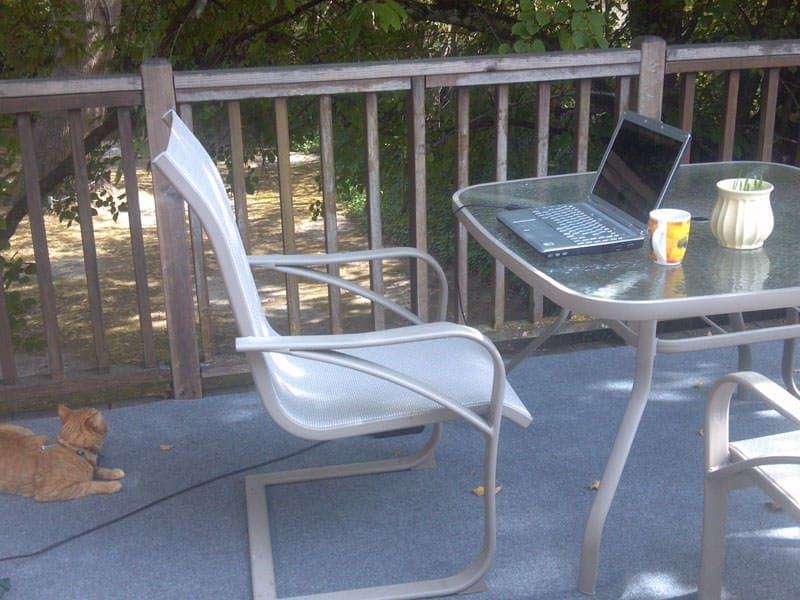
Limitations of Travel Routers
Travel routers are not a mobile hotspot, so they cannot create an Internet connection if one does not already exist. So if you are wanting to actually use the Internet in place where there is no or very poor Internet, you’ll probably want to consider something like a mobile hotspot rather than a router or range extender product.
The Netgear Nighthawk M1 is a combo router and mobile hotspot, and so this could be an option as well if you need a hotspot.
For those wondering how to get online or how to find an Internet connection while traveling, see our travel guide to getting online when traveling . It also covers things like mobile hotspots, SIM cards, international data plans, VPNs, etc.
Sometimes despite the power of a travel router’s antenna, the signal will still be too weak to connect. In a few situations we have spent too much time trying to get a connection to work when the signal is simply just too weak. Some routers can also take a few minutes to connect to a network which can leave you wondering if it is just taking awhile or if it isn’t working.
Be sure to check before you buy to make sure the travel router is compatible with your devices! This should not be an issue for most newer devices but some may not work as well with older devices or those using older operating systems.
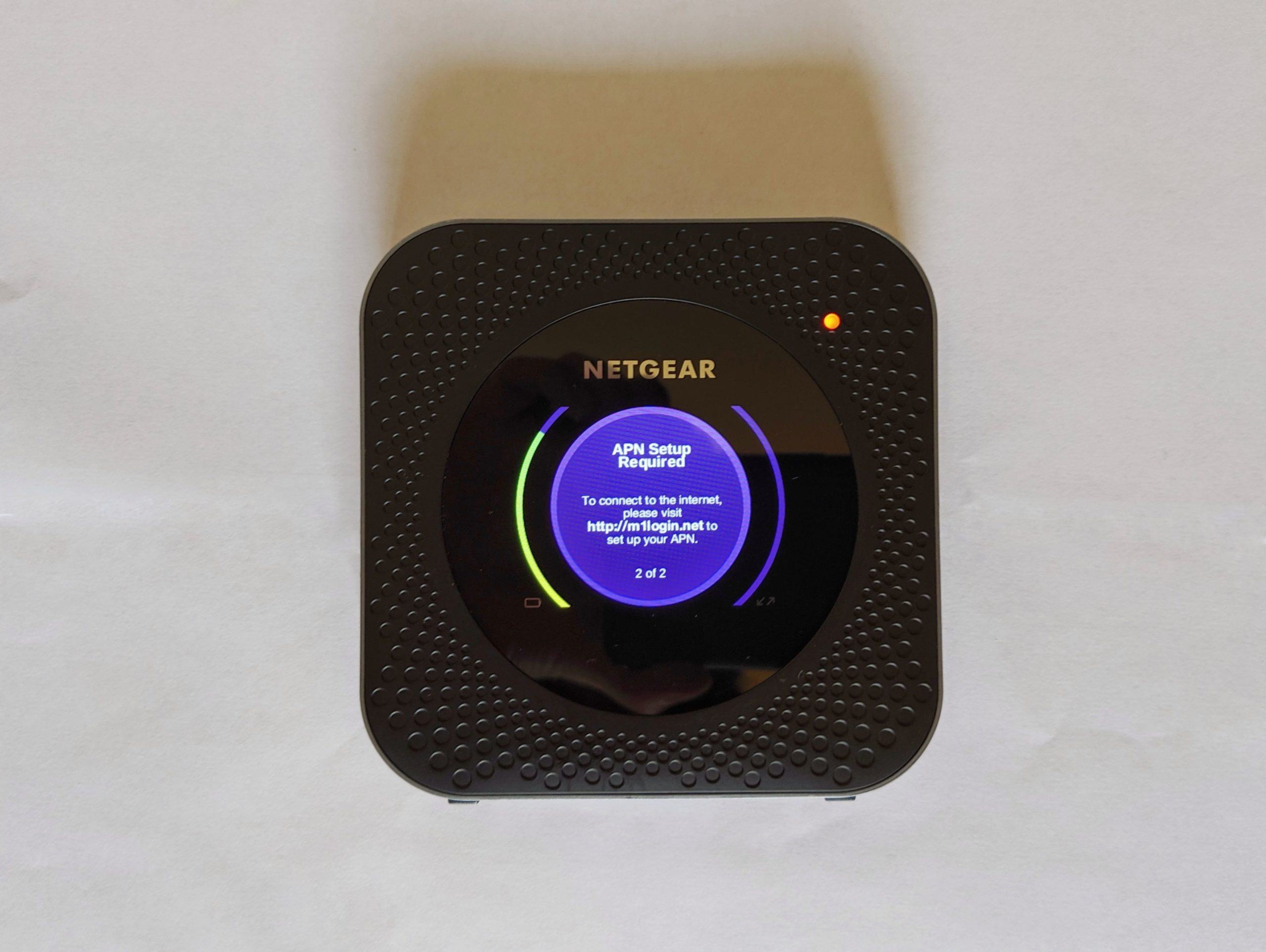
Do you Need a Travel Router?
Overall, we have found travel routers to be a benefit to our travels. They are generally easy to use once configured, and are compact and easy to travel with.
Given that many hotels only allow you to join a network using one device at a time (or charge extra for multiple devices), having a travel router makes it possible for us to use all our WiFi enabled devices at once without extra fees.
We currently use ours both at home to extend the range of our own home Internet and while traveling to extend wireless Internet connections, to login multiple devices using one password, and to add a little security while using public WiFi hotspots.

What issues do you have related to using the Internet while traveling? Have you used or would you consider using a travel router? As always, we’d love to hear any advice, tips, or questions you may have!
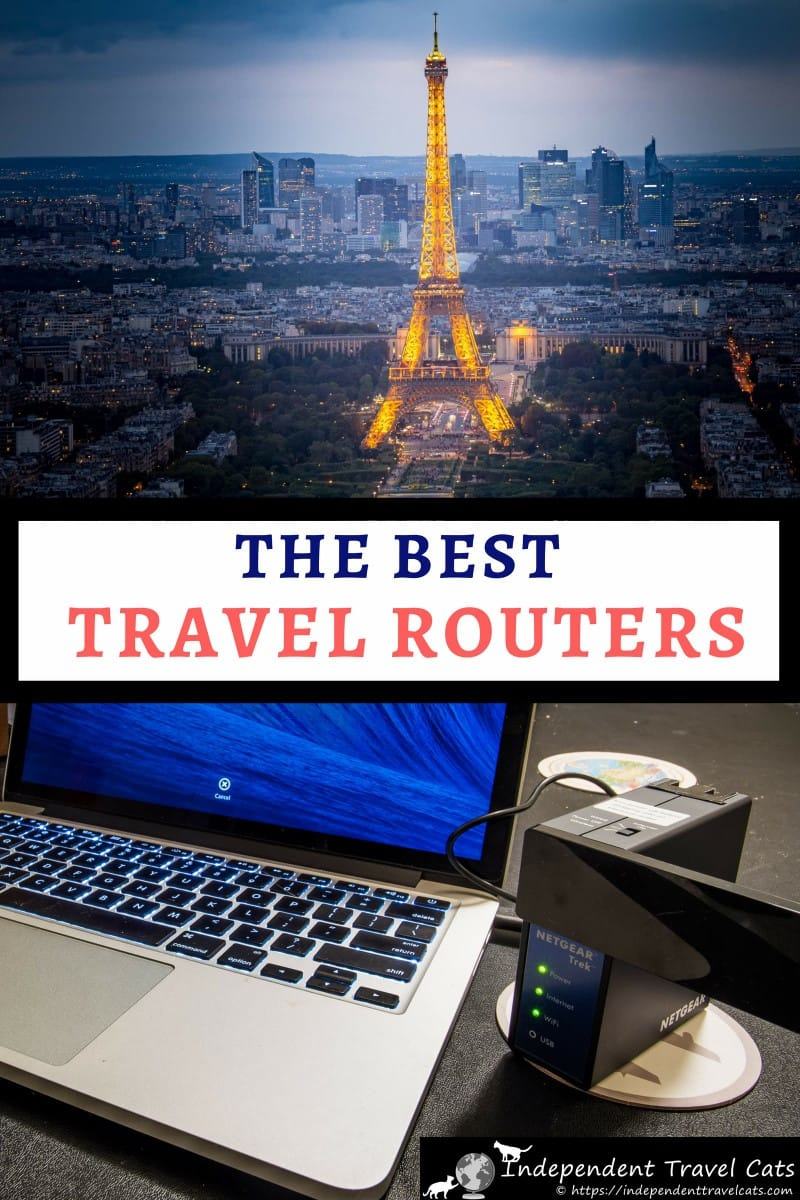
Share this Post!
There are 224 comments on this post.
Please scroll to the end to leave a comment
Andrew Scott Post author
April 13, 2024 at 6:37 am
I’m so overloaded with reviews and information that I decided I’m going to get something you use or recommend. Best review is one where someone recommends something they actually use. Now, you use the GL.iNet GL-MT1300 but Amazon says it’s no longer available. I think it said “try this instead” but I’m wondering if you’d recommend its apparent replace, whose model I can’t remember, or if you’d switch up/to one of the others you recommend/reviewed. Thanks in advance.
Jessica & Laurence Norah Post author
April 14, 2024 at 1:44 am
Yes, it looks like our Beryl router (MT1300) is showing as unavailable, so it looks like it is either out of stock or has been recently discontinued. GL.iNet has been updating and making new routers pretty regularly over the past several years. So based on that one, we would recommned the GL.iNet GL-A1300 (Slate Plus) router . It’s offers pretty much the same feature set as the MT1300, but with improved VPN support. It’s also at roughly the same price point as the one we bought.
If you want support for more recent network technology, then the MT3000 (Beryl AX) would be the option to go for. The Beryl AX (MT3000) is the same model as we have with more advanced technology but at a higher price point. For most travel needs though, the A1300 should work fine.
Either of the above models should work fine for you. We have had good luck with our GL.iNet travel routers and they offer free customer support as well as free returns on Amazon. I would say they are the most reliable brand out on the market right now for regular travel routers. You can, of course, also ask us any questions you may have about routers and we are happy to try to help.
Hope this helps and wishing you happy travels!
Best, Jessica
March 24, 2024 at 1:16 pm
This is a follow-up to my first comment but unable to reply to unapproved comments hence this one.
Just realised that since they are invariably powered via USB, rather than buying one with a built-in battery, you could just use a power bank to power them. The trick would be knowing what size of power bank you’d need for a given travel router.
March 25, 2024 at 4:25 am
Yes, Internet on cruises can be challenging. I think it will depend on the Wifi signal (if it is only available in the cruise cabins) if it will reach to other public areas or not.
The majority of the travel routers we recommend accept a USB input for power so many can be charged/powered by battery. The main thing is to check that the battery bank puts out an output that matches the input of the travel router. Most travel routers accept a 5V 2amp, 3amp or 4amp input, which should work with most battery banks. However, some higher powered routers require a higher voltage, so just check the specifications to be sure.
In terms of size, a 15,000 to 25,000 mah battery bank such as this one by INIU should provide many hours of operation.
Hope that helps and hope you have a wonderful cruise!
Best, Jessica & Laurence
March 24, 2024 at 1:06 pm
We’re looking at one for use on cruises since we learned we can’t hot-spot the WiFi each of phones will have access to. Thought we’d only be able to use it in our room until I read about the one that is battery powered. That would allow us to use it beside the pool or in some other public area. THAT would be extroflexible.
March 25, 2024 at 4:16 am
See our response to both of your comments above to your second comment.
Kelly Post author
December 28, 2023 at 9:24 am
Hi – we sure appreciate the great info!
I was hoping to learn if you thought a travel router would be a good choice to replace our router in Mexico so that we are able to access US streaming through our VPN? It would become our new permanent router there. And/or would we able to use 2 routers with the same VPN, one for other travel and one for our Mexico residence?
December 28, 2023 at 1:54 pm
Happy to try to help with your travel router and VPN questions. So it sounds like a permanent router would be best for your Mexico home and most home routers by GLiNet, Netgear, and many other brands will support a VPN. So for example, this one by GL.iNet should work find as a home router with a VPN service. A home router is going to be larger (so not ideal for travel) but is going to generally perform better overall than a small travel router and have more features, so best to stick to that for home use.
It sounds like you also want a more portable travel router for when you travel internationally to other locations outside of Mexico and the USA? And in that case, most of the midrange and above travel routers support VPN services. You just want to avoid the really cheap ones. Any of the GLiNet travel router options we recommend above such as the Slate or Beryl models should work fine with most VPN services and they are really good travel routers as well. Just see our recommended list above.
And yes, you should be able to use the same VPN service across your home and travel routers. If you stick to the same brand across your routers, it might be a bit easier with configuration but it probably doesn’t make too much difference.
It sounds like you probably already have a VPN service for traveling, but if not, Laurence made a guide and a list of VPNs for traveling here that might be useful.
Hope that helps but just let us know if you have any further questions!
December 28, 2023 at 4:49 pm
Big thanks, Jessica – all VERY helpful information to make my learning curve more bearable.
I will look further into supporting your sites.
Much appreciation,
December 29, 2023 at 6:32 pm
You’re very welcome, and just let us know if you have further questions as you do any further research on routers and VPNs!
Patricia Post author
September 18, 2023 at 9:00 am
Do I need any cabling to use these travel routers with an iPad Pro. Looking at the photos they seem to have Lan connectors and usb sockets , but at the moment at least iPads don’t have either of these. Please advise. I need the router to connect to Wi-Fi when the signal is weak but I would also like it to be as secure as possible thank you. Great reviews
September 18, 2023 at 9:55 pm
Hi Patricia,
No, you don’t need any cables to be able to use any of the recommended travel routers with your iPad Pro, they all can be used with WiFi with your devices. However, most also allow for LAN Ethernet connectivity if you need a wired connection and many also have USB ports. But most people just use their devices over WiFi so you would be fine with any travel router if you are just needing to mainly connect your devices for security, easier connectivity, and extending existing WiFi.
Bob Simmons Post author
July 2, 2023 at 10:05 am
Thanks for the great article. My issue is with WiFi that requires payment after entering password. Also each device requires payment. On a cell phone, after logging in, it pops up a window (browser?) where you enter the credit card info. Do any of these travel routers have that capability, to enter payment information? Reading the user manuals it appears the answer is no. In your travels maybe you have encountered this issue.
Laurence Post author
July 4, 2023 at 9:34 am
It’s our pleasure, and we will do our best to try to help you.
So the window that pops up to take payment is called a captive portal, and it’s the same thing you often encounter even with free Wifi where it might ask you to enter your name or e-mail address to access the internet. All the travel routers on our list support this, so you can log in and pay if necessary for internet access. A window will pop up on the first device you connect with where you can pay. A pop-up blocker or ad blocker might stop it from happening but in our experience a browser window normally just appears to log in with.
Let us know if you have any more questions!
Laurence & Jessica
Luke Post author
May 25, 2023 at 5:08 am
Just want to say thanks for the sharing informative article, very helpful in choosing the best travel router for our next trip!
June 2, 2023 at 4:39 am
You’re very welcome and glad to hear you found the best travel router for your upcoming travels! And thanks for taking the time to comment.
B.Balakrishnan Post author
May 19, 2023 at 4:04 am
This blog post on the best travel routers for the internet while traveling in 2023 is a lifesaver! Staying connected on the go is crucial, and these router recommendations are just what I needed. Thank you for the helpful insights!
May 21, 2023 at 9:50 am
Hi there, So glad you found our travel router review helpful. Just let us know if you have any questions!
Arnold Machel Post author
April 23, 2023 at 9:08 am
Thanks for the great article. I’ve used a travel router for years and found them super helpful, especially in situations where I want to use a portable Chromecast, but the hotel WiFi security settings won’t it allow to connect directly to the hotel WiFi.
I am now using a laptop that needs a high wattage charger (ideally 65 watts) and would love to finde a travel router with that kind of charging capability, but I can’t seem to find the technical stats on most of them. Any thoughts?
April 24, 2023 at 1:28 am
Glad to hear you have found a travel router useful on your travels. So it sounds like you are looking for a travel router that doubles up as a powerbank that you can use to charge your laptop? Unfortunately, we aren’t aware of any travel routers on the market which offer that level of output, most travel routers which have the facility to charge devices have fairly small batteries and don’t offer high wattage outputs. The ones that offer the ability to charge a device, are more designed to top up a smartphone rather than to power a laptop.
So if you want a portable device to help charge your laptop on the go, I would look at powerbanks like this one that are speciically designed to charge laptops.
Hope that helps! Jessica
April 24, 2023 at 6:34 am
Thanks Jessica. Too bad. Was just hoping to get one device to do both. Good luck with the blog.
April 26, 2023 at 2:19 am
You’re very welcome. Yes, unfortunately I don’t think there is a device that would be able to do both those things well. Feel free to come back and let us know what travel router and charging device you decide to use on your next trip as it may be helpul to furture readers wanting to do the same thing.
Sherry Duvall Post author
March 6, 2023 at 6:46 am
Thanks for this great article! I have just discovered travel routers and am intrigued as to whether this would be something that would work for my family. I would like to know if any of these would work on a cruise ship? We have to pay for each device, or log off and login on them which is such a pain. Cruise ships are huge so will it work when you are far away from your room, and if so, which one would you recommend? Thank you for any help!
March 6, 2023 at 8:44 am
Our pleasure! So to the first part of your question, yes, this should work to allow you to use multiple devices with a single login. The travel router will appear as one device to the cruise ship network, and then you would be able to connect your devices to the travel router’s network without needing to keep logging in and out.
For the second part of the question, travel routers have a variable range but it won’t cover a whole cruise ship unfortunately. It would work in your room and then nearby, but all the walls etc would reduce the range. So it wouldn’t cover the whole ship sadly. But any of the travel routers on the list work in a very similar way in terms of login and would cover your room.
Hope this helps!
March 6, 2023 at 9:41 am
Thank you very much…guess I will save my money!
QBM Post author
March 1, 2023 at 9:21 pm
This article from Independent Travel Cats’ blog is a comparison and review of the top portable WiFi routers for travellers. This post does a good job of researching and comparing the features, benefits, and cons of each router. Personal anecdotes and experiences from the bloggers’ travels are also included in the article. In sum, if you are a frequent traveller in need of a dependable and transportable router, you will find this article to be a gold mine of information.
March 2, 2023 at 4:14 am
Thanks so much for the very kind summary and recommendation of our travel router review article!! If you have any questions about portable routers, feel free to ask!
Daniel W Post author
February 24, 2023 at 8:33 pm
I appreciate what you did with this blog post, especially the way you keep it updated. It is the best online resource for people looking for information on travel routers, thanks!
February 27, 2023 at 7:12 am
Thanks for the kind words and glad you found our travel routers review article useful! If you have any questions about choosing the best travel router for you, just let us know. Happy to try to help!
Karen Arnauld-Bakelaar Post author
January 20, 2023 at 10:21 pm
This i8s so incredibly useful – thank you! Can you help me sort out which might be the best option for me? I mainly work in South Africa, which means we have long spells without power, so anything that runs on battery would be nice to have. I’m in a rural area, so even while working from home I often have trouble getting a wifi signal, especially in bad weather.
I need the signal to be strong enough for Zoom meetings, etc – and often it’s not.
I also need a portable option for when I travel, but I don’t know if I need something to boost a signal or to hotspot – can you help me with this?
All internet here is wifi – I have a home plug-in router with a SIM card in it, and a small portable router as well, but they don’t always do the job!
January 23, 2023 at 7:22 am
It’s our pleasure. So it sounds like you need a mobile hotspot rather than a travel router. A travel router can only extend an existing WiFi signal.
A mobile hotspot works over cellular networks (like a mobile phone). However this can be affected by bad weather, so would basically be the same situation as you are in as your plug-in router likely works the same way. The only difference is that a mobile hotspot has a built-in battery.
So in bad weather situations, there may not be anything more you can do as strong weather can affect the overall signal which could affect the signal for any kind of devices using WiFi or mobile signals. But you might try a hotspot to see if that helps as it works with a different type of signal (cellular signal versus WiFi).
Monte Post author
December 23, 2022 at 3:10 pm
Is there a travel router best suited for offline multiplayer gaming? My wife and I often wind up in areas with no internet. A normal home router constantly nags us with the “you aren’t connected” screen. We know! That’s why we’re playing Minecraft!
December 24, 2022 at 6:48 am
Happy to try to help. So I am guessing the home routers you are referring to are ones that are not your own but ones you stay in while traveling?
So none of the travel router models we recommend are specifically designed for offline gaming. However, we think any of the Gl.iNet routers on the list would work in this scenario, allowing you to create a local WiFi network that your devices can connect to without needing to connect to another WiFi network. However, we have not tried this specific scenario so it is hard to say if one or another router on this list would be better suited to the task. But the more advanced ones offer more features and more future proofing.
Another option to try might be to see if one of your computers (or smartphones if playing on them) allows you to set up a WiFi hotspot. Some Windows 10 and Windows 11 laptops for example have the option to allow you to set up a local WiFi network, which you could then connect your other device too. This may be another possible solutation you could check out.
Anyway, hope that helps and we’d love to know what solution you come up with that solves your issue as it may be useful to future readers.
Virag Post author
November 28, 2022 at 8:22 am
Hi, Thank you for this amazing article. I travel quite a lot and work at the same time and I would need something that I can use to boost the available public wifi (like in hotels or coffee shops). Which one would you recommend in this case?
Thank you in advance, Virag
November 28, 2022 at 9:38 am
Glad you found our travel routers guide useful. So any of the routers listed in our guide would work for that purpose but the GL.iNet routers with the antennas, such as the Slate, Beryl, or the Slate AX models, would have the best performance. We personally use the Beryl model . So I’d recommend any of those three models or a similar travel router to those.
I believe Amazon has been offering discounts on most of the routers for the past week so I would definitely compare prices as you can sometimes get one of the newer models for a good price when they are running discounts.
Hope that helps, and just let us know if you have further questions.
Steve Brown Post author
October 31, 2022 at 11:45 pm
Thank you for sharing the list. I really needed one. I have dead wifi zones with which the travel routers could help.
November 1, 2022 at 9:19 am
It’s our pleasure, glad you found our list useful. So whilst a travel router can work to resolve dead zones, you might prefer to purchase a WiFi extender instead, especially if you plan to use this at home. They tend to be a little bit cheaper because they don’t need as much functionality.
Another option to solve dead zones would be to upgrade to a mesh WiFi network – see our guide to the best home WiFi routers for ideas in that area. The mesh system can help make it so that the WiFi is able to extend throughout your home.
Hope that helps and just let us know if you have any questions!
AJ Post author
October 21, 2022 at 5:01 pm
I purchased two of these items ( #1 and #3) but since I am not tech savvy at all, they were impossible to use. I tried reading and rereading the instructions. I tried the company websites. I tried many youtube videos. I sat between Carls Jr and Walmart, who both have free wifi. I was able to scan each one with a success response. BUT NO WIFI.
This sucks. When someone in an actual store can hook me up and show me how to use it, and provide an actual phone number I can call when I am on the road (which I always am), then I’ll buy one. But reading reviews and going to amazon, and returning said items to amazon, is not my cup of tea.
October 21, 2022 at 5:09 pm
Sorry to hear that you are having issues with using your travel router while traveling. So most travel routers require a little bit of setup.
Have you tried using them inside where you know the WiFi was a good strength and working properly? If you were sitting outside the stores, the public signal might not have been strong enough for instance to really work.
If you have already gotten the manufacturer’s instructions (GL.iNet has some really detailed ones online you can get), you can also try contacting their customer support. If you want in-person support, you could also try going to a local tech store near you (or a chain like Best Buy) that sells travel routers and might be able to troubleshoot with you and help you.
Hope you are able to get it to work!
David Post author
October 1, 2022 at 10:31 pm
For travelers who need access to the internet while traveling, this device sounds very useful. In our everyday life we cannot think of going a day without internet. Thanks for sharing for your valueable information.
October 3, 2022 at 6:55 am
Yes, travel routers can be very useful for those who need to be connected while traveling. If you have any questions about travel routers, just ask!
Chris Post author
September 7, 2022 at 1:54 am
I’m having trouble backup my extender settings, it takes saying that backup is done but can’t find the file??!!
September 7, 2022 at 5:08 am
Many travel routers do allow you to back up their settings, and save the settings to a file. But you will want to check the manual for your specific travel router model to see if it has that functionality and how to do that.
When you backup something as you did, it should give you the option to choose the file location when you do so. So if you check your browser downloads folder it should be there where you set it to save. Or check your manual for the default location.
Hope that helps, Jessica
Jason Post author
August 1, 2022 at 7:32 pm
Hello. Thanks for all the great info. I have been researching travel router setup, but am not sure if it’s possible to do what I’m attempting. I hope you can help me out.
I have an “older” ASUS Dual-Band router that was replaced when we upgraded our home to Eero Mesh router. What I’d like to do is set up the old ASUS router with the same SSID & password as my current home router (the Eero), so that I can take the ASUS on family vacations, connect it to the hotel/condo/house/etc. WiFi, and then all of our devices will automatically connect to it (since they have the same SSID/pswd already saved from our Eero router), without having to sign in all of our devices to the hotel/condo/house/etc. WiFi.
I’ve found some articles that explain how to set up 2 routers with the same SSID & pswd, but they all require connecting the router to a laptop for the initial setup/configuration. So, the real question/problem is: I don’t want to take my laptop on vacation, just to connect my old ASUS router to the vacation home’s WiFi. So, is it possible to set up my old ASUS router at home, and then plug it directly into the vacation hotel/condo/home router via ethernet cable, or will I need to bring my laptop to open a web browser and complete the setup?
August 2, 2022 at 12:10 am
It’s hard to really give specifics without knowing the type of router and equipment. But if the main step that is required is to connect to the Asus router via a web browser over the WiFi connection, then you shouldn’t need a laptop specifically to do that as you can just use the web browser on your smartphone to achieve the same thing. So that part of it should work.
I would definitely test this setup at home first to see if you can extend your existing network with your old Asus router to see if it works as you intend. If you can’t get it to work at home, I would not recommend taking it on vacation. If you can’t get it to work, I would just recommend getting a new travel router that will do what you need it to do for your trip.
Best, Laurence
David Paker Post author
July 4, 2022 at 1:34 pm
Wow! You guys are doing an amazing job. Following your tutorials, I learned so much !!
July 5, 2022 at 2:38 am
So glad you found our articles helpful. If you have any questions about travel routers, just ask!
May 12, 2022 at 10:42 pm
Thanks for the review. I’ll definitely look into it. It really is frustrating if the signal is slow. . I’ll be willing to carry extra weight if it would boost connection,.
May 13, 2022 at 2:07 am
Yes, a travel router may definitely be able to help with that. It does require packing something extra but travel routers are designed for travel and many of the models are pretty small and lightweight these days so won’t add a lot of extra weight! But I would recommend keeping the dimensions and weights of each model in mind when choosing the best travel router for you.
Ryan J Post author
May 11, 2022 at 6:19 am
Thank you for such a thorough and informative writeup! I also read your Best Mobile Hotpots review and was inspired to purchase the Nighthawk M1100, especially considering it’s added ability to be a travel router and boost a current wifi signal. Will be travelling to Europe and staying at many AirBnb’s. Just in case any of them have a weak wifi signal, I’ll be prepared! Now that I have the device, I can’t seem to find instructions on how to use it as a travel router specifically. I’ve searched everywhere online, and there seems to be different wording out there “turn the m1100 into a modem, use it with a modem, etc. Saw one video on how to use the nighthawk with another router (boosting that router’s signal), but it requires connecting an ethernet cable from the router to the Nighthawk. Is that the process of using it as a travel router? Ideally, I’d like to be able to avoid using the ethernet cable, especially if on a public network (i.e. train) that I need to connect to but is weak. Or staying somwhere that I don’t have access to the broadcasting router. Any specific instructions on using the Nighthawk M1100 as a travel router without using an ethernet cable? Thanks in advance.
May 11, 2022 at 9:28 am
So yes, the Nighthawk M1100 is mainly used as a mobile hotspot, but it can also be used as a travel router. So it is definitely possible to set up the MR1100 as a travel router to share a WiFi network, but the manual is not super helpful. We remember this ourselves when we set it up.
The section you are looking for calls it called WiFi data offloading. If you load the MR1100 manual on this page ( https://www.downloads.netgear.com/files/GDC/MR1100/MR1100_UM_EN.pdf ) – you are looking for the instructions on page 30, titled “offload your mobile internet connection”. There are sections here on setting this up for either Wifi offloading or ethernet offloading. You are looking for the instructions on Wifi offloading.
Hope that helps, but just let us know if you have any further questions. We have used both the Nighthawk M1 and M2 and have set them up to work as a travel router ourselves so happy to help!
May 12, 2022 at 6:34 pm
Amazing. Would have never found that out on my own. Thank you! Will let you know how it goes. My wife and I are being “digital nomads” for the first time having worked remote in the States for the past 20 years. Will be travelling to Spain, Portugal, France, Italy, Croatia, Switzerland, Germany, UK, and Ireland over the course of 5 1/2 months. Leaving next week and super excited!
May 13, 2022 at 2:06 am
Glad that helped and you should be able to test it out before you leave. Having the ability to use it both as both a travel router and a mobile hotspot (when you don’t have WiFi) is nice for a long trip like that.
Enjoy your time working as digital nomads in Europe!
Paul Post author
April 30, 2022 at 2:16 pm
Hi, we’re staying at a place that requires us to re-log in every 24 hours. Are there travel routers that will automatically take care of that for you?
May 1, 2022 at 5:33 am
So we aren’t aware of any travel routers that would be able to automatically do this out of the box. With a travel router there is the advantage that you only have to do this once, rather than once for each device you connect to the travel router. So you should be able to just do the necessary daily login once and then all the devices connected to your router should not have to do the log-in.
Depending on how technically minded you are, it is worth pointing out that the GL.iNet routers are based on the OpenWRT software, which allows technically-savvy users to install extra packages if they want and run custom code. However, this is beyond the scope of most users (and not necessary or recommended in most cases). However, if that does describe you though, then that’s an option as you may be able to write code (or find code written by someone else) that would be able to do the auto log-in each day.
Pasu Post author
April 28, 2022 at 9:24 pm
“A travel router allows you to connect multiple devices to a network, even with a single login. The travel router is seen by networks as a single device, so if you are only given one login, you can still use multiple devices. You just login once from the travel router via a web browser (or in some cases a provided smartphone app), and then all your devices can be connected to the network created by the travel router.”.
That’s exactly what I need. Connecting to a WiFi and giving the signal to other devices.
But sorry, which if the mentioned models can do this?
Thank you for your help
April 29, 2022 at 3:51 am
All of the travel routers we mention in our article can do this as this is one of the main features of most travel routers. The one we are personally currently using is the GL.iNet Beryl model above, but as noted, any of the above models can do this.
For instance, we often use it with the WiFi in a hotel to connect all our devices at once without having to log in each one. It can also help get around device limits imposed by some hotels as you just need to connect the travel router.
Travel routers can also make your connection more private and secure, and you can also use most of them in conjunction with most VPNs.
Hope that helps and just let us know if you have any further questions.
April 20, 2022 at 8:43 am
Thanks for this article, but it wasn’t clear to me if any of these support what I want to do: I want to be able to connect a baby monitor to a hotel network (for instance, so a babysitter can keep an eye on the kids from a living room), but my baby cams don’t support connections to captive networks. I’ve gathered that this is where the travel router comes in, allowing me to create my own network after connecting to the hotel’s wifi. What I am hoping to find though, is a travel router that does NOT require an Ethernet connection to make that initial connection to the hotel’s wifi, as not all hotel rooms come with Ethernet ports. It looks like the HooToo TM-02 does this, but I also note that that model is getting a bit long in the tooth at this point. Do any of your recommendations support what I am trying to do? Thanks!
April 20, 2022 at 10:03 am
So none of the travel routers on our list require an ethernet connection to make the first connection, they all work over WiFi (although some can work via ethernet as some have ethernet ports as we note). The way it works is that you turn on the travel router and connect your phone or laptop to the travel router’s WiFi network. Then you use a web browser to configure the travel router to connect to the hotel WiFi network, and if necessary login through the captive portal.
In our experience, the GL.iNet products are the currently the more reliable and most regularly updated options. So those would be our top recommendations, but any of these should work. But newer models are more future proof.
Just a note that setting up cameras or using surveillance devices in hotel rooms is illegal in many countries if any person filmed is unaware of their presence (so if the babysitter or other hotel staff were filmed without their knowledge). So just something to be aware of.
Shannon Post author
February 1, 2022 at 12:02 pm
Hello, I’m currently at a campground with about 4mbps Wi-Fi. I need 200 mbps to do my job and i need help finding the right option. I need something that works with any internet provider and will give me a minimum of 200mbps. Can you help?
February 2, 2022 at 2:39 am
Hi Shannon,
So 200 mbps is very very high and you are unlikely to get that unless you are able to access a 5G mobile network AND a very good cellular signal. The average download speed for 4G is 8-10 mbps. Do you possibly mean 20 mbps that you need for work?
A travel router can help increase a connection but it is not going to make it much faster in most cases. The connection speed at the campsite may be 4mbps at its max and if so, there is nothing you can do to increase that. Especially not 5X or 50X!
If the campsite does have a very fast connection but you are too far from the signal then a travel router can help, but it will likely not make a very big difference, it will generally just make the connection more reliable and secure. But if you travel a lot for work then a travel router like the Beryl one we list above is probably one you would want to have. But you still need to be in places that have a decent connection.
So your best option would be to look into mobile hotspots. These connect over a mobile network and can give you either 4G or 5G speeds depending on the type, and you would need a SIM card to go in them as they are similar to phones in that regard. Of course, you still would need a good cellular network reception for them to work. You can see our guide to mobile hotspots here .
So the best advice is to make sure to do some research before you head to a new place to see what its WiFi connection speed and mobile signal is so that you can see if it a place that you would be able to work from or not. If so, then if you have a travel router and/or mobile hotspot, it should help you work remotely when needed.
Looking to the future, a better option might be something like the Starlink satellite internet which can provide fast internet via low orbit satellites anywhere in the world.
Sage Post author
June 19, 2022 at 11:36 am
Hello! To follow up on this reply (and I am not a techie 🙂 ) I was planning on working from France through a hotel’s WiFi but maybe I should use my cellphone, which is verizon 4G LTE and can be a hotspot? In general, are cellular networks faster than a hotel wifi? I guess it depend on their carrier?
Also, do you recommend a VPN whichever way we access the internet – via cellphone hotspot or hotel wifi?
June 20, 2022 at 4:07 am
So the answer as to whether the hotel WiFi is faster than your cellphone 4G is a difficult one to answer. WiFi is definitely capable of being faster than 4G, but this depends on a number of factors, including the speed of the internet connection the hotel has, how far from the router your device is, and how many other people are using it. 4G also has similar issues, depending on factors like how far away the nearest mast is, if your room is near to a window (walls can weaken a signal), and so on.
In most cases, I’d say that hotel wifi is likely to be faster, but this is definitely not always going to be the case. In general, in your situation, I’d probably say to go with the less expensive option. This is likely to be to get a travel router and use the hotel WiFi (the travel router can then be used on future trips as well). But it depends on the cost of your international data plan.
If you decide to get a travel router (and use hotel WiFi), just be sure to read the instructions and test it out locally before your trip so you know how to set it up and use it before you get to France. Any of the routers we list should work for your situation, our favorites are the ones by GL.iNet.
When it comes to a VPN, VPNs can definitely provide more protection. However, if you are going to use a travel router or cellphone hotspot to connect, it is probably not necessary. Cellphone hotspots or a travel router are going to be more secure because it’s just you connecting to your connection, and mobile networks are a lot harder to hack.
The security concerns over public WiFi networks are not as great as they used to be now that the majority of the web has moved to https. That means the data that is sent from your device to the web and back again is encrypted end to end, so it’s a lot harder for people to snoop on it. In the old days of unencrypted websites and public hotspots, it was fairly easy for someone to hack into someone’s connection, but this is much harder today, especially if you stick to secured websites.
There are still advantages to using a VPN though. Obviously, there is the additional peace of mind, but also some websites block users from specific countries and some countries may block access to certain websites. So a VPN can usually get around that for travelers who need to access websites from their home country. One of the advantages to surfing the web with a VPN in France we’ve found is that it keeps all the websites from constantly redirecting you to the French versions.
Note that some jobs require employees doing remote work to use a VPN or only sign into accounts using some sort of secure connection. This is especially the case if you deal with client data or other sensitive information. So be sure to check your job’s remote work policy regarding security.
We have a post that reviews VPNs for travel here , if you decide you want to use a VPN.
Hope that helps, and feel free to follow-up if you have further questions. Wishing you a great trip to France.
Will Pearce Post author
December 17, 2021 at 8:28 am
I’ve had a HooToo HT-TM05 for about 5 years, and was initially very happy with it. Increasingly, though, I’m encountering web logins on hotel wifi–a situation that I’ve not been able to handle with the HooToo.
I’m aware that some travel routers can be configured with the web login credentials so that they’re able to establish the wifi connection, but it’s not clear from your review which of your recommended devices can do that.
Could you clarify that, please. Also, if you know of some way to get the HooToo to handle this situation, I’d be glad to hear it.
December 17, 2021 at 1:15 pm
Sorry you are having issues with your travel router. Hotel log-ins can be tricky. So the HooToo HT-TM05 should be able to handle the situation you describe (and HooToo noted this in their old FAQ section), as that’s a common scenario for using a travel router. You would normally connect to the Hootoo network with your smartphone or laptop, login to the Hootoo and select the hotel network, and then open up a new browser page from your phone or laptop and try to use the web. This should launch the hotel login page.
Sometimes though this might not work, and it’s possibly because the Hootoo is an older device as that model is now several years old. There are various reasons that it could fail, including a custom DNS setup on your device, use of a VPN, or trying to navigate to some https pages. It’s hard to troubleshoot without seeing the error message you are getting. How far into the process are you getting? Are you getting any error messages?
If this occurs in more than one hotel, and you can’t get it working, I’d recommend contacting HooToo for support. They list the following info on their website: Tel: 1-888-456-8468 (Monday-Friday: 9:00 – 17:00 PST) and email [email protected]
It looks like the company has not updated information on HooToo HT-TMO5 for a couple of years now and it may be that the company is no longer supporting the device. We also just saw that it has been removed from Amazon.
If nothing is working, it is probably that you just need to upgrade the device. I’d recommend upgrading to one of the newer GL.inet, TP-Link, or Netgear travel router models. We’ve used both the GL.inet Beryl and Netgear M1 in hotels recently without incident.
Hope that helps and just let us know if you have any further questions!
Pipps Post author
November 18, 2021 at 2:45 am
Thanks for the great guide and clear recommendations👍
November 18, 2021 at 2:13 pm
Thanks Pipps for taking the time to leave a comment. Glad our travel router guide was helpful and just let us know if you have any questions!
November 19, 2021 at 2:18 am
My pleasure, you definitely got the Amazon referral 👍
Nikki Mag Post author
October 14, 2021 at 10:12 pm
Thank you for this wealth of information, greatly appreciate it. I am not tech savvy whatsoever and was hoping you had some information to share.
My employer requires an ethernet connection from a modem/router to the company laptop. We are unable to directly connect to wifi. As of today, is there a recommended travel router that I can connect via ethernet cable? I apologize if youve answered this already and I missed it.
October 15, 2021 at 6:35 am
No problem, and happy to try to help!
All the GL inet travel routers we recommend come with at least two ethernet ports. For instance, the Slate router has three Ethernet ports and a lot of other features. So you can connect to the router via an ethernet cable, and then configure the router to connect to either a WiFi network, or to another network with the other ethernet port on the router. This is fairly plug and play so shouldn’t be too tricky, and the instructions that come with the devices are quite easy to follow as well.
You may also want to talk to your company’s IT department as well about the issue since it sounds like they require a certain level of security to be in place for use. If you, for instance, need to use a VPN to connect to your work data, the Slate router is compatible with over 30+ VPNs but may not be compatible with all VPNs.
Hope that helps, and just let us know if you have any other questions!
jack Post author
October 9, 2021 at 7:48 pm
thanks for the awesome article I am looking for a mobile hotspot and a travel router, I need it very much. I found your article. Very beautiful and will come in handy for me.
October 10, 2021 at 4:53 am
Glad it was helpful and hope you found a travel router that works for you. If you are looking for a device that can be both a travel router or wireless hotspot, then the Netgear Nighthawk router is probably your best bet. If you are looking for two separate devices, then you can also check out this article about choosing a mobile hotspot .
But do let us know if you have any questions about travel routers or mobile hotspots.
Joao Post author
October 6, 2021 at 7:41 am
Thank you for this great article.
I’m looking for a travel router, just with the intention of better capturing public networks.
Which of these routers do you think provides a better increase in signal strength on public wireless networks?
October 7, 2021 at 1:31 am
So we’d recommend either the Gl.iNet AR750S ( https://amzn.to/2Quyhsb ) or the GL.iNet MT1300 would be our suggestions. These both have little external aerials which mean they are able to get improved range compared to other options in the round up.
October 7, 2021 at 3:10 am
Hi Jessica,
Thank you for the reply.
Do you think the gain in signal strength is worth it for the price difference for the GL.iNet GL-AR300M16 for example?
October 8, 2021 at 1:44 pm
The more powerful travel routers should be able to provide a stronger signal, but I think you would also be paying more for extra features (not just signal strength specs) as well on the more expensive routers. Whether it would improve the signal strength over some of the lower priced GL.iNet routers is probably going to depend on the particular situation and place in which you use it. You might consider buying the lower priced and test it out to see if it works as you need it to. If not, you could return it and purchase the more expensive router with the better signal strength.
For more technical questions about signal strength and the differences between models, you might want to reach out to the GL.iNet customer service and let them know how you specifically plan to use it and they can probably give you a more technical answer since we have not tested the two routers at the same time.
Alice Post author
August 9, 2021 at 7:50 am
Great information here on travel routers. Which of the Glinet routers would you recommend for a first time user? Interested in using it for working on laptop at coffee shops and for travel (domestic and international). Not super tech savvy so something that is pretty easy to use and will last.
August 9, 2021 at 8:35 am
Thanks very much! I appreciate we go into a bit of detail with the GL.iNet routers and their advanced features, but the good news is that you don’t need to be technical to use them, they work well out of the box with a simple web interface to set them up. Any of the ones listed should actually meet your needs.
So the MT300N-v2 (Mango) is a good option if size and budget are the key constraints. It is small, lightweight, and the least expensive. Its small size and weight make it perfect for travel.
For a more future-proof solution, then the two higher-priced GL.iNet models (Slate and Beryl) offer a faster WiFi network with support for the 5Ghz band, which tends to be less congested and therefore faster in public situations. The Beryl model (which we have), is the most powerful with the fastest processor inside, but it’s honestly not going to make a huge difference between that and the AR750 (Slate) unless you have a need for the USB 3 port or want to connect to very fast networks (which most public wifi networks in our experience are not!).
Hope that helps, and let us know if you have any further questions!
August 4, 2021 at 1:25 pm
First off, I say thank you for this information. I will say that I used to use the Netgear Trek N300 before I left it in a hotel (doh). So when I saw that you used to use it as well and saw the information on Juplink EC3-750, I was sold.
I haven’t been able to connect to hotels with it since most hotels have a login screen. I can’t seem to get the setup right on the Juplink to actually be able to pull up the screen to login. How do you set yours up to use in hotels so I can get my setup right. Thank you in advance.
August 5, 2021 at 4:59 am
Yes, the Netgear Treks were great and I wish they would have continued to make and update those. The Netgear Nighthawk M1 is good, but expensive if you are not using it for a mobile hotspot as well as a router.
So the interface for the Juplink can be a bit confusing as it has the different modes and functions. You should be able to get it set up as follows.
First, put the router in repeater mode, then plug it in (if you’ve set it up previously, hold down the reset button on the side for five seconds to start over).
Once the router is on, you should be able to connect your device to the Juplink WiFi network, which doesn’t have a password. You will then be able to login to the router via the url router.juplink.com, the default username and password is admin for both.
From the admin page, press the “repeater wizard” option. This should bring up a list of all the WiFi hotspots, and you would choose the hotel network option. Here you can also specify the network name, this will be your network name. If there is a security password on the network, the network you create will start off with the same password.
The router will restart, and when it comes back it should present you with the new wireless network to connect to. If you connect to this and then try to use the internet, you should be presented with the network login screen.
For added security, I’d recommend changing the password of the created network to a password of your own choosing. You can do this by going to router.juplink.com, logging in again with the username and password, and then going to the WiFi settings. Here you can change the name and password on the WiFi settings.
Hopefully that will work for you, but if not feel free to let us know!
August 6, 2021 at 3:15 pm
It doesn’t work. The hotel sign in page never comes up to sign in.
August 7, 2021 at 9:01 am
I am sorry to hear that isn’t working. I would reach out to Juplink’s customer service to see if they can help as that is the process that we have followed in the past.
If you can’t get it to work after reaching out to Juplink, I’d recommend returning it for one of the recommended GL.iNet or TP-Link travel routers. We have found that GL.inet keeps their software the most updated in recent years so can be the best for the kind of issues you are having.
Let us know what happens as it may be that it doesn’t work well (or is difficult to configure) at certain hotels and we will consider removing it from our list if that is the case.
August 9, 2021 at 6:37 am
We have done more testing with our Juplink and we were able to replicate the issue you are having with a network sign-in page. So for now, we are removing this router from our list and have reached out to Juplink’s customer service to see if Juplink has a solution to fix this issue. It is still working fine as an extender/router but it seems to have issues with log-in screens. Laurence is not sure if this is a hardware or software issue.
In the meantime, we would recommend returning the Juplink and getting a GL.iNET travel router or similar – we have not had the log-in page issues with the GL.iNet router (we have the Beryl one specifically) and are showing it able to load log-in pages when the Juplink one cannot when using them both at the same time. Sorry for the inconvenience as we have had the Juplink for over a year but our travels have been pretty limited due to Covid so we were not able to test it as much as we normally would and it worked fine in our initial uses.
Tiara Post author
May 3, 2021 at 6:42 am
Great, informative article! And it’s awesome that you guys are still making responses after two years.
I’m looking for a travel router that can help me for my remote contact center work. I’m interested in traveling to national parks or otherwise and am looking for routers to secure a good connection on the days I have to work. I know hotels and whatnot near parks can still be somewhat slow, and this is also for general travel. What would you recommend?
May 3, 2021 at 10:33 am
Yes, we aim to try to reply to all comments and email questions related to travel and photography – and have been trying to do so for 10 years now 😉
So a travel router can certainly help improve a connection by making it more consistent and secure. However, it can’t turn a really slow connection into a fast one. Any of the travel routers on this list can help with extending Wifi, making your connection more secure, and allowing you to use it with more devices more easily. So it just depends on if there are any features you’d need (e.g., Ethernet ports) and buying one that works with faster speeds will make it more future-proof.
However, the reality is that in and around many national parks and state parks, the WiFi speed is not great. This is especially the case in the Western and rural parts of the USA.
Now if you have a poor Wifi connection but good mobile phone signal strength, then a mobile hotspot will work. This will do the same things as the travel router but it will also help you extend the mobile signal to connect your other devices (e.g., laptop, tablet, etc.) that you need to use. So you might check out the Netgear Nighthawk M1 device we recommend above in the article which can act as both a travel router and a mobile hotspot – we have this one and have used it on places like boats and rural areas where we have phone signal but there was no Wifi access.
For those who work in remote areas with both poor Wifi access and poor mobile phone signals, they often need to rely on satellite access but these devices are not currently travel-friendly or budget-friendly. A mobile hotspot can only help where there is some mobile signal.
So I would investigate the places you are thinking of spending time and need a faster connection and see what the Wifi access and mobile signals (for your specific carrier) are in those areas. That can help you assess what type of device might be best for you and also if you should plan to work in certain places or just visit them when you don’t need to work.
Hope that helps, and let us know if you have any further questions! Jessica
Patti Hackney Post author
April 14, 2021 at 9:40 am
We are looking for a travel router that we can plug into a strong antenna that we wired outside our boat. Our paid for wifi is pretty far away, but the antenna works great to connect; however only on one device (our laptop) if the antenna is plugged into it. Do you know of any travel routers that have the ability to connect an external antenna to pick up the wifi signal? Thank you for any information you can give us. Patti
April 15, 2021 at 7:18 am
The Netgear M1 / M2 can support an external antenna but it’s only for improving a 4G LTE signal rather than a WiFi signal. So I don’t think that would work for you given your situation.
There are some travel routers that support external antennas. Some versions of the GL.iNET GL-AR300M , for example, have an external antenna which you can connect your own antenna to them. But you would want to check if it is the same connector type as your existing antenna so that they are compatible.
But a travel router may not be the best fit for you, given your situation, so you may want to ask a networking/router specialist at a Best Buy or similar to ask about options that would work with your boat Wifi signal/external antenna situation. An access point, standard router, or bridge may be a better option.
YL Hu Post author
March 30, 2021 at 10:14 am
Very practical and interesting topic. I am currently looking at a mobile router, Ryoko. Would hope to hear from anyone who has been using it. Thanks. YL
March 30, 2021 at 10:24 am
This more of a hotspot than an actual travel router which is what my post is about. The is a 4g router and requires a SIM card to use.
I have not heard of or used the Muama-Ryoko mobile routers before. They only have a 3.1/5.0 rating on TrustPilot and a lot of mixed and bad recent customer reviews. So I would really read the reviews there before making a decision.
If you are just looking for a travel router (not a mobile hotspot), I would consider one of the other ones we list above as they are actual travel routers. If you need something that also functions as a mobile hotspot, the Netgear Nighthawk M1 functions as a router and extender but you can also add a SIM card and use it as a mobile hotspot as well.
Jum Post author
April 8, 2021 at 5:37 am
It’s very difficult to find genuine reviews. Apart from Trust Pilot, the rest of the review websites on Google are extremely suspicious. They all 100% recommend and offer a link direct to Muama-Ryoko. The company seems to have a complete stranglehold on any info. I would avoid.
Melissa Post author
January 27, 2021 at 9:16 pm
I am not the most tech savvy person but I am looking for a way to use Chromecast in hotels when I travel overseas. The Wifi is usually horrible in these hotels so I’m not sure that Chromecast would work without some help. Can you recommend something easy to use that could help in this situation? Also, do I need a sim card or anything for these mobile routers or am I thinking of a hotspot?
Thanks so much!
January 30, 2021 at 5:13 am
Hi Melissa,
A travel router could definitely help in this situation, and it would also make setting it up each time easier. As you know the Chromecast needs a WiFi network to connect to, and if you use a travel router then you can setup the Chromecast to connect to the WiFi network that the travel router creates. This means you won’t need to reconfigure the Chromecast every time.
In addition, the travel router should be able to deal with spotty hotel wifi more reliably than the Chromecast. Being stuck behind the TV means it will get worse reception in general, whereas you can place the travel router in a better location.
You don’t need a sim card for these travel routers as they just extend an existing network – you are indeed thinking of a mobile hotspot. That is also an option, but for streaming it would work out quite expensive as streaming uses a lot of data. So a travel router that improves the WiFi reception is your best option. Any of the options we list should work well for your purposes.
Sparkles Post author
June 2, 2021 at 8:43 pm
The problem with chromecast on hotel wifi is the login access page since it doesn’t have a built in browser without a travel router logging in requires spoofing the mac address of a different device to match the mac address of the chromecast.
Pondorosa Post author
January 21, 2021 at 1:52 pm
Great insight on travel routers, VPN’s and other stuff I did not know of. Thank you!!!
January 23, 2021 at 8:34 am
You’re very welcome Pondorosa – if you have any further questions about travel routers just let us know!!
Thomas Bash Post author
December 21, 2020 at 3:46 am
Thanks for sharing this informative blog, I think the Tp-Link travel routers are best.
December 22, 2020 at 11:02 am
You’re very welcome, and thanks for taking the time to share your views on travel routers with us!
Julie Post author
December 3, 2020 at 11:21 am
Wow! This was exactly the article I needed. Thank you. I’m trying to convince my employer to let me take my remote, on-line job on the permanent road (RV). Their concern is that I occasionally need to take credit card information for orders. I also do video calls with customers, so speed is important. I go through a VPN at home with a wired, ethernet connection. I could easily create a mobile hotspot where needed with my phone, so is the GL-iNetGL-AR750S all I really need? Or is it necessary to go up to the NetGear Nighthawk?
December 4, 2020 at 4:56 am
Glad you found our article on travel routers helpful.
So if you are confident of phone reception, usually you would set up the VPN connection on your phone and then set it up as a mobile hotspot. The only reason you’d need a travel router in this case is to extend the range of the WiFi network that your phone creates. So a regular travel router (like the GL.iNet one ) is probably good to have for this purpose and it can also provide extra strength and extra security when you do use public WiFi networks. Since you need VPN, that is probably a good one for you.
Something like the NetGear Nighthawk (which is a router + mobile hotspot) is only necessary if you’re going to be connecting multiple devices at higher speeds than your phone can handle since you already are able to create a mobile hotspot with VPN on your phone. So you can test that out in advance to see if you would need a mobile hotspot or not, or if your phone connection is enough.
However, my main concern would be around cell reception, which will obviously depend on where you plan to be traveling. Remote and rural parts of the USA might not always have great cell reception and if you are an avid RV traveler, you’ll know there are some big dead zones for networks here and there. The only solution to this is to investigate satellite options – for example the Starlink system is coming online in the USA at the moment, which offers fast speeds at a reasonable price (compared the other offerings at least!). So it may take your subscribing to something like this to convince your boss if they are worried about you always being able to be online, or making sure you only travel to places with good phone signals. A mobile hotspot won’t work in places where there is no signal of some kind.
Anyway, hope that helps and just let us know if you have further questions!
Matt Post author
October 29, 2020 at 5:54 pm
Hi Jessica, your article was great. It was very helpful and much needed information. Your article was clear, consistent, and well-researched. Thanks.
October 30, 2020 at 5:01 am
Hi Matt, Glad you found it helpful. We have tried to keep it updated over the years as technology and manufacturers have changed for travel routers! Just let us know if you have any questions. Best, Jessica
Dwayne Post author
July 25, 2020 at 3:01 pm
I’m at a hotel and would like a secure connection the room does not have a ethernet port, I connect to the internet on a log in screen and most of the times the screen doesn’t come up and connects itself. I have theTP-LINK TL-WR902AC AC750 WI-FI TRAVEL ROUTER set at hotspot mode and plugged to my laptop. The power and wireless lights are lit, but the internet light blinks, the hardware is version 3. I have tried the range extender mode and could connect to internet at all. Is there something I’m not doing in the router setup page. I have not had any answers yet with the tplink support staff. This is a really good site. Thanks
July 26, 2020 at 4:05 am
Sorry to hear you are having issues logging into your router at the hotel.
So could you clarify, you are in a hotel and you are connecting to the TP-Link WiFi network, but the internet is not working? Normally what should happen is the first time you want to connect to a new network you have to visit http://tplinkwifi.net , login with the username and password (the default is admin for both), and then follow the quick setup instructions which will allow you to choose a network. Then, if you try to browser to another website, the hotel login page (if there is one) should come up.
The router should be in hotspot mode as you say, but it doesn’t need to be plugged into your laptop. Normally the internet light only blinks in access point or router mode so you might want to check the mode switch is in “share hotspot” mode.
Let us know if you were able to get it fixed or if not, happy to try to help further. But hopefully you got through to the Tp-Link staff as well.
July 27, 2020 at 12:43 pm
Hello Jessica, I got connected to internet with my router on saturday, I just kept playing around with the tplink setup page and got it work. I am also using the hotspot shield free vpn, I did a speed test my upload and download mbps is under 1 at 0.56mbps. and sometimes the download gets to 1.07 Is there something I can do to get the speed faster? Thanks
July 28, 2020 at 4:31 am
Glad you got connected. So if the Internet speed is just slow where you are, there is nothing really you can do to make it faster, unfortunately. But the travel router should not slow it down. Travel routers can help strengthen a signal but they don’t really affect speed.
However, VPNs can slow down speeds (particularly free services) so you might want to test the speed without the VPN to see if that is the case. If you do find it is the VPN, you might want to consider trying a different VPN or connecting without it. You can see our list of the recommended VPNs for travelers .
If you find that the Wifi speed where you are is just too slow to perform what you need, then your only other real choice might be to consider a mobile hotspot as these create an Internet connection. However, these are more expensive and rely on a mobile network, so best to see if you can get things to work with the travel router if you can since there is an existing connection where you are.
Evan Bell Post author
May 8, 2020 at 4:08 pm
I had a Netgear travel router but it recently broke and need a new one to connect to the internet when away. This is a great resource on travel routers, I appreciate!
May 8, 2020 at 4:28 pm
Great to hear you found our travel router review article helpful. We’ve had good experience with Netgear devices, it is too bad they never made an update to the Netgear Trek, but there are several good options out there by TP-Link, GL.iNet, and RavPower. Just let us know if you have any questions.
Tim Post author
April 27, 2020 at 7:45 am
Great info about the internet during travelling and using travel routers. Is there other things I should do to keep info and passwords secure while travelling and avoid hacking attacks? Thanks.
April 27, 2020 at 9:15 am
Yes, there are lots of other things you can do to further protect your data:
-Make sure all your devices (phones, tablets, laptops, etc.) are secure and protected with passwords and identify verification -Make sure your operating systems on your devices are updated with most recent updates and patches – you should also have firewall/virus protection -Use a VPN when traveling. For more info you can see our guide to choosing a VPN . You’ll want to make sure your travel router is compatible with a VPN -Avoid accessing sensitive accounts or data while on public Wifi – you should try to access important accounts (e.g., banking) as little as possible when traveling to avoid identify theft and people getting your password details. -Make sure you have backup copies of important data and info stored at home before your trip -Never give out your account passwords to anyone while traveling -Avoid providing any information on unsecured websites -Be cautious about downloading files, especially if you are not absolutely sure of their source
Hope that helps, and do let us know if you have any questions about choosing a travel router!
Sam Johnson Post author
March 24, 2020 at 6:16 am
I have Linksys WTR54GS Wireless-G Travel Router . This comes with a built-in access point and an Ethernet port used to connect to a wired network or to other computers. For a secured connection, this device has an encryption capability. This has its own power supply and an antenna. Included in the package is a case for easy safekeeping.
March 24, 2020 at 6:29 am
Thanks for sharing which travel router you use and glad that one has worked well for you. That is an older model which is why its not included on our list as it doesn’t support the latest WiFi standards, but should still work for most people!
Jeff Post author
February 12, 2020 at 6:15 pm
I have a tp-link nano travel router today. But the problem with it is that it does not play well with the captive portal system that hotels use. Every time I try to set up the router in a new hotel it takes multiple efforts to get the travel router to recognize the hotels wireless network. And then even after it does, it quite often will not show me the captive portal login page. It is very frustrating. What is your experience with these travel routers you recommend and their ability to play well with hotels captive portal?
February 13, 2020 at 6:50 am
Usually when we have this problem the issue is because the wifi network signal is so weak that even the travel router struggles to connect. However, normally we don’t have any problems with the captive portal – the routers are designed to be able to handle them, and should pass it through to your device so you can login. When you say it won’t show you the captive portal screen, do you mean after you have connected your travel router to the network, and connected your device to the travel router, that it’s just not loading the screen? Does it load anything at all?
If you are consistently having these problems, you might want to reach out to TP-Link for support as it’s possible the router has a fault, or it might need a firmware update.
Hope that helps! Laurence
February 13, 2020 at 10:12 am
>”When you say it won’t show you the captive portal screen, do you mean after you have connected your travel router to the network, and connected your device to the travel router, that it’s just not loading the screen?”
Correct. Most times (not always) the captive portal screen will never display. I repeat the setup process over and over to have the router scan for the hotel’s wifi signal and about half the time after several tries the captive portal login screen might appear.
>”Does it load anything at all?”
When it doesn’t show a screen, usually what happens is a message pops up stating something like “The network you are using may require you to visit it’s login page.” And that’s it. No login page appears.
I am done with this travel router. I’m tossing it. But I don’t want to purchase a different travel router only to have this same problem persist.
February 13, 2020 at 12:03 pm
It sounds like you know what you are doing and have tried a lot of things. Although it can take a little time to get to the captive login screen, you should be able to get there if the signal is strong enough and it is set up, so it is likely a hardware or firmware issue, so our only recommendation would be to ask TP-LInk about the issue and see if they have specific guidance on your model. We have not encountered this issue with the routers we have used.
Tlynnk Post author
July 15, 2020 at 11:06 am
I absolutely HATE my TP Link nano. Thank goodness it was cheap. It’s going straight to the trash. After two years of problems, I give up.
James Post author
January 8, 2020 at 2:45 am
I am using a travel router from one of the top-notch brands but its speed is far below the committed numbers. Which other routers do you suggest which can deliver at par speeds that we get at our homes/ offices? Thanks in advance.
January 8, 2020 at 10:13 am
So we usually find when we travel that the speed of the internet is often slower than at work or home (depending on your home connection speed). When I talk about the speed of the internet, I mean the connection speed that the hotel or guesthouse network offers. If there connection is slow, then the travel router won’t be able to improve upon that.
Most travel routers offer speeds in the region of 300Mbps, which is more than fast enough for streaming even very high definition content, and faster than most networks. So I think that no travel router will really improve that speed so any of them will pretty much give you the same speed. The only option would be to invest in a mobile hotspot, which bypasses the wifi entirely and connects over a 4G network which could deliver faster speeds. If these are available in the country you are traveling in, they can be faster than WiFi in some cases.
If you decide you’d prefer a mobile hotspot, you can read about them more in this article and it includes some of our suggestions if you decide you want to rent or buy a hotspot.
Tony Post author
January 16, 2020 at 11:18 am
My entire career has been designing digital networks all over the world, so I think I can help explain why what you’re asking for is currently impossible. First, don’t confuse network “speed” with network bandwidth. Public WiFi utilizes Broadband technology, which can be best visualized by comparing it to a regular pipe. No available technology can increase the size of a pipe in order to increase the rate of flow. Rather, a bigger pipe must be installed!
Likewise, no current technology can take a Public WiFi with a bandwidth (pipe) of 150mpbs and increase the bandwidth to 300mbps. What the best Travel Routers do is boost and extend a weak network signal into a much stronger network signal, which in turn decreases network latency, which improves the overall quality AND quantity of the flow of digital information to your laptop or tablet.
Steve Post author
January 5, 2020 at 11:37 pm
Everyone should choose a strong router at an affordable price especially while traveling. Many on this list of routers that will be a great choice. I use a TP-link router that is quite good while traveling.
January 6, 2020 at 1:16 pm
Hi Steve, Yes, the TP-Link ones are a great choice and well-priced. They also seem to keep updating the technology in them every couple of years which is good! Best, Jessica
O.G. Post author
September 23, 2019 at 2:33 pm
This was a great informative post about usig the internet during travelling and using travel routers. If you want to use the internet while travelling then you must buy a wireless mobile router because its signal range are large with the secure password nd also send a message to the user if someone try to hack a password, otherwise you feel trouble during travelling! I use them mostly because of the added security as I don’t feel safe using the internet in public places for private things and banking while traveling without having extra security. Thanks.
September 26, 2019 at 12:41 pm
Yes, travel routers are probably primarily used to increase signal strength, but yes, the extra level of security is definitely an additional featured added by travel routers. They can help make public WiFi networks a bit more secure.
Glad our article was helpful to you! Jessica
Brad Post author
September 16, 2019 at 2:34 am
Thanks for bringing our eye on this great device as we all know many hotels out their provides free internet service but the speed is ridiculously slow, show it could be of great use ( but the pricing can be a little lower in my opinion)
September 16, 2019 at 9:35 am
Hi Brad, Yes, a travel router can definitely help if you have a slow (or unsecured) connection at a hotel. If you are looking for the most budget-friendly option, the RAVPower Filehub Tripmate Nano is one to take a look at. Best, Jessica
Kimi Post author
September 11, 2019 at 1:34 am
Routers are great, as you can connect to the internet whenever you want. I mostly use it while I’m out on the beach, to listen to music or to watch some cool videos. But I’m still concerned about the safety and certain restrictions in certain countries, so I also use Nord VPN, so that my holiday would as comfortable as it can be. So, your own router and NordVPN are my best travel buds!
September 11, 2019 at 10:10 am
Hi Kimi, Yes, a VPN can be great, especially if you are traveling in lots of places with unsecure Internet (although a travel router can help secure your connection) and countries with lots of online restrictions. A VPN doesn’t work so great with some travel routers, but it sounds like you have found a good system for you! Best, Jessica
Sam Post author
August 27, 2019 at 9:03 pm
thanks @travelcats for the article. However, I am still a bit on the fence with these devices because I don’t find many hotels that use the Ethernet cable anymore in each room, so if I want to set up my own “room network”, I would need a device that acts as a Hotspot and the models mentioned in the article are Not that. Is this correct? If so, can you recommend some or have you already covered that subject in another article that you can post a link to?
August 28, 2019 at 7:25 am
Yes, so travel router devices can either extend an ethernet network into a WiFi network, or extend a weak WiFi signal into something your devices can connect to. Of course this only works if there is a wifi connection to extend.
If you want to connect when there is no WiFi connection, you would need a mobile hotspot, you can see some options here . Or you can get a device like this Netgear Nighthawk device that can function as both a travel router and mobile hotspot.
For more about mobile hotspots and getting online when traveling, this article may be useful: https://www.findingtheuniverse.com/how-to-get-online-when-travelling-away/
Hope that helps, and let us know if you have further questions!
Bob J Post author
July 8, 2019 at 8:17 pm
Can any of these routers act as a wireless Ethernet bridge? I want to connect net gear router to our resort WiFi and was wondering if a travel router would be reasonably priced way to do that
July 11, 2019 at 2:30 pm
That is a good question. Some of these routers may be able to do that but that is not really what they were designed to do. I would check the specs of the devices and contact the specific manufacturer of the one(s) you are interested in and ask them specifically if they can do this and how you would do this. If not, I would look for a device designed more to do this, I am sure Netgear could recommend one. Best, Jessica
Tex Post author
July 4, 2019 at 12:01 pm
It sounds like you can use either an app or a browser on a laptop to configure the Trek in case it needs a password to connect to the hotel’s wifi, am I understanding that correctly? Because if that is the case, then $35 for a way to boost the WiFi signal is a bargain. So many hotels advertise free WiFi but deliver very slow connections
July 6, 2019 at 2:30 pm
Hi Tex, Yes, that is correct, you can usually use them to get around hotel minimum device issues as well as to boost exisiting WiFi signals. They also add a bit more security. Netgear is not making the Trek any longer so they are hard to find, but you might be able to find one on Amazon or ebay or secondhand. But other routers work in a similar way and they pretty much all do the same thing so you can also check out the other devices. Best, Jessica
Jimmy Chang Post author
July 1, 2019 at 5:42 am
Ravpower Filehub Plus slow down internet speed more than 50% makes it unusable in most case. Although the device’s small size and has it’s own battery is a huge plus. I bought one, really like it, but I return the product due to the internet performance disappointment.
July 1, 2019 at 5:58 pm
Hi Jimmy, Yes there are pros and cons to all of the travel routers. Sorry to hear the Ravpower Filehub Plus was not a good fit for you, but there are several other options out there that you can try. Best, Jessica
Adam Post author
June 9, 2019 at 2:32 am
Alright so this list needs updated badly. No WiFi AC options = bad. Which there are enough of to warrant an update.
June 9, 2019 at 2:08 pm
Thanks for your input! We do keep this list as up to date as we can, and there are not that many travel routers on the market that support this speed.
Some of our recommendations support the 300Mbps speed, and AC is only 433Mps, so the difference is not that great. In addition, in our experience most networks when we travel don’t offer speeds anywhere near close to maxing out even a 150mbps travel router. So there are very few places where you would encounter public Wifi AC at this time, therefore, there is not much of a compelling reason for most people to need this feature.
However, we’ll certainly review the post and update this list to ensure the best options are still represented ????
Beri Post author
May 28, 2019 at 3:46 am
I found a list of some more routers suitable for a VPN setup, have you had any experience with setting it up? I’m subscribed to this VPN but I’m a little uneasy about the technical part of configuring a router.
May 28, 2019 at 11:50 am
Hi Beri, Yes, as you know, not all routers will work with a VPN. But if you have a travel router that does, you will just need to follow the directions of that router to use it. It should work the same as without a VPN unless otherwise indicated. Best, Jessica
Tobias Claren Post author
May 21, 2019 at 4:09 am
Is it possible to use such Wireless Travel Router with a Wifi with voucher code (entry in web browser)?
May 21, 2019 at 5:23 am
Hi Tobias, Yes, it is. Once you have connected the travel router to the network, you should be able to access the voucher page from your device as you normally would. Best, Laurence
John Stafford Post author
May 16, 2019 at 6:43 am
Could you advise how these travel routers deal with the invariable web page sign in that most Hotels require you to fill in before allowing you on their WiFi network?
May 16, 2019 at 7:01 am
Hello John,
All the routers we recommend support the sign-in page that some networks require – they usually just forward it to the device you first access the network from. So say you are using a smartphone, you first connect the travel router to the hotel network using the configuration tool on your smartphone, and then when you try to access the internet, you will be redirected to the web page to sign in.
The advantage of using a travel router is that you should only need to sign in once, then any other devices you connect to your travel router will not need to sign in again. It also carries the advantage that if the hotel restricts access to one device, you can circumvent that as the hotel sees the router as the one device, and you can connect as many of your devices to the router as it supports.
Hope that helps! Jessica & Laurence
Stanley Post author
May 17, 2019 at 8:59 am
I have purchased TP Link Nano and configured to hotel WiFi. Unfortunately, it is not opening up the sign in page automatically. Hence I am not able to use the internet for my devices. What could be the possible reason?
May 17, 2019 at 10:57 am
Hi Stanley,
This can happen sometimes if your device is configured in a certain way, for example if you have a VPN running. If you connect the same device to the hotel wifi directly (without the router), does the login page come up?
Do you have another device you can try? If so, I’d logout and disconnect and try a different device.
The TP Link definitely does support this when you connect a device to it, but specific configurations can cause issues with your client devices. It’s hard to troubleshoot though as there are different possible causes.
Mark Post author
May 12, 2019 at 10:38 pm
Thanks for writing a great article about travel routers! I wish more routers/extenders would include software to function in this way.
Question: I have a particular use-case and I was wondering if any router that you’ve come across has the necessary functionality. Do any of these or any >$100 devices save the credentials of the wireless networks that you have to before and auto connect when they are available?
My wife and I travel to the same places often for work. We used the Airport Express for this for a while but we’re looking for a new solution and Apple has sadly dropped the product(one of the best smart routers out there for a long time).
Also when the local WiFi is slow we use the hotspots on our iPhones/iPad. We even have different mobile providers for different areas so one of us always has signal.
If we always had a common WiFi for all our devices that used the best signal or just auto-joined the hotspot when it was turned on we would be ecstatic!
May 13, 2019 at 8:58 am
Thanks very much!
So in our experience the travel routers we have used for this purpose (originally the Netgear Trek, although this is sadly no longer on sale) did remember the networks it had previously connected to, and would automatically reconnect to these. So we would think this would be standard for most of these. However we aren’t 100% sure as we mostly use the Trek still – the best thing might be to either contact the manufacturer of the one that sounds the best. Or just try the router that has the features you need, and then see if it works. If not, you should be able to return it for a refund.
Sorry we couldn’t be of more help. If you find out more about this in researching these routers, please let us know and we can add that to our article.
Alan Smith Post author
May 9, 2019 at 2:19 am
Thanks for sharing.
May 12, 2019 at 11:44 am
Hi Alan, glad you enjoyed the post. Just let us know if you have any questions about travel routers. Best, Jessica
Emani Post author
April 23, 2019 at 7:07 pm
Since there is no “like” button, I just wanted to quickly leave a comment to say thank you for writing this article because it was extremely helpful to a computer layman like myself. I greatly appreciate it 🙂
April 24, 2019 at 6:55 am
Hi Emani, Glad you found our article helpful, and just let us know if you have any questions about travel routers or what they do. Best, Jessica
Jacqueline Post author
April 21, 2019 at 3:54 pm
Hello I have a quick question I’m just looking for something I can get for my teenaged girls to watch Netflix and play games while on the road we do a lot of traveling and they want to watch movies and play games on there tablet and laptops do u know which router fits my family best thanks for this article by the way
April 22, 2019 at 3:08 am
Hi Jacqueline,
So the main question would be whether or not you need internet access while out and about, or just looking to extend coverage and use multiple devices at hotels etc. A travel router like these in this post can only extend an existing wireless network, so won’t help if you are in a car for example that does not have WiFi access.
If the device is primarily for use in hotels or near existing wireless networks, then any of the devices on this list would be a good fit. I’d recommend looking at the TPlink N300 or the GL iNet AR300.
If you are also looking for WiFi, then in that sort of situation you would want a wireless hotspot type device like the TEP wireless or Glocalme hotspot . You can read more about Internet access solutions while traveling in this article .
Alternatively, if you are traveling domestically, your phone may also allow you to create a wireless hotspot and share the connection with the other devices around you.
The only thing about these options is that it will depend on your daughters usage – streaming movies for example uses quite a lot of data, and most wireless hotspot services tend to restrict speeds after around 1GB of data, which is less than your average film.
Hope that helps, but do let us know if you have further questions! Laurence
Todd Post author
March 23, 2019 at 9:13 am
I just returned my new TP-Link N300 Nano after a couple of very frustrating days trying to connect it to my iPhone 6. Their helpdesk agent was friendly but couldn’t find a solution. I found a resolution in their community forum and flashed new firmware onto the device to solve the issue. Sadly, the router would lock up after a few minutes of use. I let it hang twice before declaring it useless and boxed it back up to send to Amazon.
It’s such a shame because it probably could be a good router. But who can afford to be upgrading software while on the road 🙁
March 23, 2019 at 11:39 am
Hi Todd, Thanks for taking the time to comment. Sorry to hear that this did not work out well for you, although glad you had good customer service experience. I hope you are able to find something that works for you. Best, Jessica
March 2, 2019 at 7:39 pm
Thanks for a great article. I wish I could find a device that does everything the RAVPower FileHub does, along with VPN. I need a router that does wired, wireless bridge, USB port for external HDD, Video streaming, and hopefully VPN. Any suggestions?
March 3, 2019 at 5:37 am
Hi Chris – that would be a great device indeed! We’ve taken a look around though, and we can’t find one that does everything you need – either they have VPN and don’t have file sharing, or vice versa. The best solution we can offer is something like the RAVPower FileHub, with setting up a VPN on your laptop or mobile phone. We know this is an extra step for each device, but right now we don’t know of a product that has all 5 of those features. Hopefully one will be available soon! Best, Jessica
January 31, 2019 at 6:01 am
My company has production plants all over the world. As such, there has been and will continue to be the opportunity for me to spend extended time abroad. This past year alone, I spent four weeks in Italy which is the reason I’m now searching for some sort of wifi booster. The hotels in Italy had wifi that would operate a laptop, iPhone, et cetera, but the signal was not strong/reliable enough to use my Chromecast. This meant I spent a lot of evenings looking at my iPhone 7 to watch Netflix. Not optimal!
What I need to know is will a product like this allow me to stream Netflix, Hulu, Youtube, whatever, to my Chromecast in such an instance? There is a very good chance that I might be spending weeks-on-end abroad again very soon. I would like to be able to address this issue before I leave. Any thoughts on this?
January 31, 2019 at 10:32 am
So this is not a question we can 100% answer. A travel router can boost signal and provide more secure Internet browsing, but it depends ultimately on the speed of the hotel’s connection.
First, the Internet speed in general in the location you are visiting will need to be fast enough to support streaming. It sounds like this has generally been the case in hotels you’ve stayed in, as you were able to stream to your iPhone. In that case, if your iPhone is able to stream across the WiFi, then a travel router should strengthen the signal sufficiently for the Chromecast to also work. However, we can’t guarantee it will work in every instance, so this might not be a guaranteed fix.
If you are able to download any films or TV shows we’d recommend doing this. I know Netflix lets you download some shows to supported devices. You might then be able to stream these more easily.
Alternatively, with something like the RAVPower router we mention, that acts as a streaming hub that your Chromecast should be able to stream from, if you have a hard drive or memory card with some shows on.
We think a travel router should help, but we can’t guarantee it in every situation!
Sajjad Ahmad Post author
January 23, 2019 at 1:17 am
Thanks for sharing this is such a very nice post and review of available travel routers. thanks for spending time on it. i found it very useful.
January 23, 2019 at 2:46 am
Hi Sajjad, You are very welcome and just let us know if you have any questions as you check out the different travel routers. Best, Jessica
Business Traveler Post author
December 13, 2018 at 6:49 am
great article, very helpful as a business traveler!
December 13, 2018 at 7:34 am
Thanks, glad you found it helpful! Just let us know if you have any questions about choosing a travel router. Best, Jessica
Gary Post author
December 2, 2018 at 10:39 pm
This is a very good article and comparison of different travel routers, as so far I’ve read several articles. Thank you!
December 3, 2018 at 6:00 am
Hi Gary, Thanks for taking the time to comment and glad to hear you found our travel route article helpful. Do let us know if you have any questions. Best, Jessica
Shah Post author
September 28, 2018 at 2:03 pm
This was a great informative post you have shared on this page about the internet during travelling and using travel routers. If you want to use the internet while travelling then you must buy a wireless mobile router because its signal range are large with the secure password nd also send a message to the user if someone try to hack a password, otherwise you feel trouble during travelling! Thanks.
September 29, 2018 at 8:05 pm
Hi Shah, Thanks so much for taking the time to comment, and hope you choose the best travel router for you. Wireless routers can definitely help you get online while traveling and also help keep you more secure when away from home! Best, Jessica
Bella Johsan Post author
September 28, 2018 at 2:05 am
Many wireless routers available in the market which is helpful during the travel like np15 and so many. We always want a good speed router during our travels, regarding best router I found this post really helpful.
September 29, 2018 at 7:01 am
Hi Bella, Glad you found this helpful in choosing a travel router and wishing you the best on your future travels! Best, Jessica
Sam Billings Post author
September 6, 2018 at 12:00 am
Netgear Trek is a small router for those travel a lot or whose work is to travel. This device is easy to handle and it does not need a lot of space. I really like it!
September 6, 2018 at 12:13 pm
Hi Sam, Yes, we like the Netgear Trek as well and it is a great size for travel. It is just a shame that Netgear stopped making them now. I am hoping that will come out with an updated or new travel router product that is similar to that one. Best, Jessica
pamela Post author
September 4, 2018 at 10:02 pm
TP-Link Nano travel routers N150 and N300 are so aesthetically pleasing. I have N150 and don’t have anything bad to say about it, except the price could be lower. Btw, I use Nordvpn with it, and I’d say it’s a perfect match.
September 5, 2018 at 4:06 am
Hi Pamela, Thanks so much for taking the time to comment and for your experience with the N150 travel router. Glad that you have had a good experience with it. We recommend NordVPN as well for those that need a VPN service. Best, Jessica
Jean Post author
August 11, 2018 at 3:07 pm
Hi. I’m looking into purchasing the TP-Link N300 Nano Travel Router to use at a lakeside resort. The lodge at the resort has free wi-fi but the nearby cottages do not. They last time we were there, we were able to pick up in our cottage a weak signal from the lodge. Would the TP-Link N300 Nano server to strengthen that signal. We use Mac laptops, if that matters. Obviously, we don’t know much about travel routers. Any information you can provide will be very helpful. THANKS!
August 13, 2018 at 12:53 am
Hi Jean, Yes, that is the sort of situation that the router is designed for and it should strengthen your signal and make it stronger than what it would be with only your laptops. It may not be a “strong” connection, but it should certainly be stronger. As long as you have relatively recent model laptop (last several years) most routers will work fine with most modern laptops, tablets, and phones. Wishing you a wonderful vacation at the lake! Best, Jessica
Stive Smith Post author
July 27, 2018 at 4:42 am
What a helpful technical post on travel routers! I think Wireless Router is the best one to achieve uninterrupted WiFi while blogging. I had some issues with my router which I was unable to fix on my own. Then, I got Netgear Support which was truly helpful in fixing all my router issues.
July 27, 2018 at 4:44 am
Hi Stive, So glad you found our travel routers post helpful. And yes, if you need help with a Netgear product, Netgear Support is a great place to get help with your travel router! Best, Jessica
Christina Post author
January 19, 2017 at 11:13 am
It’s nice to have WiFI while traveling and I appreciate the design and functional features of the device. The Netgear Trek’s initial function, increasing the range of existing wireless networks, sounds great.
January 20, 2017 at 3:19 am
Hi Christina, Yes, we still take the Netgear Trek travel router with us on most of our travels as it often comes in handy when we need to connect while on the road. Just let us know if you have any specific questions about the device that are not answered in the review. Best, Jessica
January 13, 2017 at 9:47 am
It’s nice that the included antenna can amplify the weak signal. Many people would find this product useful.
Harry Post author
January 3, 2017 at 2:57 pm
Thanks for the response. I”m back at home now but will try this at the next hotel. Great review. If this pans out, this truly is something that has been needed for quite a while and it will become my “go-to” solution when traveling.
travelcats Post author
January 3, 2017 at 3:18 pm
Hi Harry, We find that sometimes it does take a bit of patience and fiddling but we have been successful in using it as we described. Best of luck and please let us know how it works on your next trip! Best, Jessica & Laurence
December 30, 2016 at 9:34 am
I was led to understand the netgear N300 would allow you to use the hotel “captive portal” wifi with multiple devices. It doesn’t look like that is the case as your commenter above states. I see no option in the http://www.routerlogin.net netgear page for this to happen. It requires you to put in an ssid for the hotel network and a password. The problem is, with “captive portal” pages, there is no “password”. They ask for your room number and you to accept the user agreement.
What is needed is to be able to sign in to the netgear n300 and then open a browser and try to get on the internet and then the hotel page pops up and you enter your room number and any other required info and you are on the web.
I don’t see that capability in the netgear N300
Also, I think you may need the ability to “clone” the mac address of your laptop so your mac address isn’t always telling the hotel that you are probably using a “router” type device to get around their “one or two device” rules. If the mac address says “I’m a netgear router”, it would be easy for the hotel to not allow such mac addresses.
December 31, 2016 at 3:07 am
Hi Harry, In our experience the N300 router has allowed us to do this. You can enter the hotel SSID without a password, and then the router will forward your browser to the hotel page to log in, after which point you can browse with multiple devices. We’ve definitely used it in this situation and not had any problems at several hotels.
For the MAC address spoofing, we’ve never encountered a hotel set up intelligent enough to do this, and we suspect we never will – the effort to do so isn’t really worth the rewards we suspect.
Hope this helps, and I would message or call Netgear Support if you are having further difficulties. Best, Jessica
John-Paul Post author
October 12, 2016 at 3:24 pm
NetGear has been horrible in trying to answer my question.
I was told that I can connect in places like Starbucks that require me to click on ACCEPT their terms or a location like a hotel that might require me to enter other information on a log in screen.
I have not been able to make that happen. I select the network (such as Starbucks) and the system spins for a couple minutes and then says it can’t connect. It doesn’t take me to the needed screen to accept terms.
Is the function I want available and, if so, how is it supposed to work.
October 12, 2016 at 5:46 pm
Hi John-Paul, I am sorry to hear you have not had a great response to your question from Netgear. Um, have you gotten the Netgear to first work at your home? We were normally able to connect in public places, and have used it in hotels and coffee shops. It should first connect to the Netgear and then you should be able to then sign into the store or public screen wi-fi. Are you able to sign into the public wifi screen once you turn of the Netgear Trek? ~ Jessica
October 12, 2016 at 8:10 pm
No trouble logging on to NetGear at home and retransmitting my home network.
I was at a hospital with a public network. I was able to log on to their network (after accepting their terms on a pop up page) on both my computer and my iphone. However, when I selected the hospital network in the NetGear menu it tried to connect a couple of times but said they could not connect. It never gave me the sign on screen from the hospital.
So. The normal process should be
1) Connect my laptop to the NetGear network created by my device. 2) Go through the netgear menu and select the desired network from the available list. 3) Hit the Go/Enter/Next button (don’t remember which it’s called) 4) Any signon screen from the network should automatically come up??
It’s step 4 that isn’t happening
October 12, 2016 at 8:45 pm
Hi John-Paul, Yes, it sounds like you are doing it correctly. I don’t know what may be happening – it could be something to do with the hospital network in combo with the Netgear. But if you have had this problem at other places, it is probably the Netgear. Have you had it working in any public places you have tried? If contacting Netgear support isn’t working the best, you might try contacting them via social media such as sending them a Tweet (@Netgear) and feel free to tag me on it (@TravelCatsBlog) and I can monitor to make sure you get a reply. Sorry I can’t be more helpful but I hope Netgear can help you out. Best, Jessica
October 13, 2016 at 12:11 pm
Good news. I finally got it to work.
I’m very happy as now that we are retired this is going to be extremely useful in all the timeshares we stay in.
October 13, 2016 at 1:25 pm
Great, glad you got the Netgear Trek working! ~ Jessica
Mary Tarris Post author
February 22, 2016 at 4:38 pm
I use it to bring wifi to my laptop in various parts of the house from my desk, where it sits cabled to a broadband modem that itself is cabled to the internet. The big problem is that very often it shows up as not connected to the internet, although I can usually get it to function OK after turning various bits of kit off and then on again. Has anyone else had this hassle?.
February 24, 2016 at 4:34 am
Hi Mary, We have generally not used the device on a daily basis, but we have had issues where it disconnects itself and we have to reconnect the connection to get it rebooted. Another issues may be that since you may be in areas of the desk where there is a weak connection, it may be losing the wifi signal at times. I am not sure if there is anything you can do other than what you are doing. Anyone else have advice? ~ Jessica
Gary Jackson Post author
February 4, 2016 at 3:24 am
I am also using NETGEAR TREK since December 14. It helps me to connect multiple devices and let me do my work on the fourth flour. Its an excellent device!
February 6, 2016 at 11:04 am
Thanks for sharing your thoughts on the Netgear Trek. I am glad that you have found it helpful!
Gil Hale Post author
October 21, 2015 at 1:02 am
We have begun to use a DropCam camera (now a Nest product) as in some hotels we have had some items taken from our room (not Marriott). But, I found the DropCam would not connect directly to the Marriott provided WiFi in our room. I tried to use our iPad as a hotspot, but the connection was not reliable. I ended up investing in a Netgear Trek N300 WiFi router and was able to log that unit onto the Marriott WiFi with no problems, then connect our devices to the N300. Perfect…
October 24, 2015 at 6:58 am
Hi Gil, Sorry to hear about the taken items, but I am glad that you have found the Netgear Wifi router helpful during your travels! We are actually using it right now in Rome!! ~Jessica
Tom Post author
August 8, 2015 at 12:30 pm
I’ve had spotty results with the Netgear Trek. The Internet connection is flaky and it resets itself a few times each day, even when it seems to pick up a strong signal from a hotel or RV park. Did you run into that problem, too?
August 11, 2015 at 11:59 am
Hi Tom, We have not experienced the flakiness so much but we have had it reset when we have it on for a long time, but not quite that often. Maybe contact Netgear and see if they have any tips? ~Jessica
July 13, 2015 at 2:08 pm
Great review! I, too, am in the market for a travel router. Thus, I have a question: Can this be powered via a USB-powered port on my laptop or by A/C only?
July 13, 2015 at 8:27 pm
Hi Todd, thanks! Yes, you can power this via a plugged in USB cable or via the AC cord. If you use the Netgear Trek, please feel free to share your experience!
Adelina Post author
February 26, 2015 at 12:08 pm
Interesting. I’ve thought of maybe getting one of these for my own home! There are corners that just have such weak connections. It does seem a bit bulky though to be carrying it when traveling. How heavy is it?
March 4, 2015 at 3:23 pm
Hi Adelina, yes we use it both at home to extend our wifi to our patio and also sometimes while traveling. Here are the size and weight specs from the Netgear website:
Dimensions: 3.39 in x 3.31 in x 1.30 in (86.5 mm x 86.2 mm x 32 mm) Net Weight: 0.355 lb (161 g).
So it is fairly compact and not that heavy but if you are like me, every little bit can matter when trying to squeeze more things into one’s luggage so we generally just travel with it when we know we’ll be experiencing bad wi-fi. Hope that helps and feel free to ask more questions if you are deciding to buy.
Marisol@TravelingSolemates Post author
February 23, 2015 at 1:35 pm
Thanks for the review. I’ll definitely look into it. It really is frustrating if the signal is slow. . I’ll be willing to carry extra weight if it would boost connection,.
March 9, 2015 at 12:29 pm
Yes, just let me know if you have any questions about the Netgear trek Marisol!
Em... Post author
February 23, 2015 at 11:35 am
Gone are the days of combing an area for a dodgy internet cafe in order to e-mail friends and family about travels. Now you can use gadgets like this and blog away… Big innovations in just even a decade!
March 9, 2015 at 12:25 pm
Isn’t it amazing how fast Internet availability and speeds have changed in just the past 5-7 years!
Jess Post author
February 22, 2015 at 5:52 pm
My greatest frustration when traveling is places that advertise wifi when it’s too slow or unreliable to be usable – I’m fine when they just don’t have it, but I hate spending so much time trying to make it work. I think I could use one of these.
March 9, 2015 at 12:21 pm
Hi Jess, yes I agree. Better to not advertise Internet than to have Internet that is impossible to use:) This can help when there are weak signals.
Corinne Post author
February 22, 2015 at 3:38 am
Great review…as we all know living without good Internet is a killer!
March 9, 2015 at 12:13 pm
Indeed Corinne:)
Lyn (aka) The Travelling Lindfields Post author
February 22, 2015 at 1:47 am
This sounds like a very useful device for people who need the internet when they travel.
March 9, 2015 at 12:12 pm
Indeed, we find it both useful for home and for traveling!
Paula McInerney Post author
February 22, 2015 at 1:21 am
Interesting, We use netgear at home and love it. Gordon will look into this.
March 9, 2015 at 12:10 pm
Great, and just let me know if you or Gordon have any questions!
Leah | KidBucketList Post author
February 21, 2015 at 11:32 pm
I love the idea of SECURE access to public hotspots when travelling. My only concern is it’s size. It seems so big!
March 9, 2015 at 12:06 pm
Yes, it is also a pro and con when adding something extra to one’s luggage. Here are the size and weight specs from the Netgear website:
AwesomelyOZ Post author
February 19, 2015 at 9:11 pm
That’s very cool – I haven’t used this but it’s good to know it’s a reliable product. My mobile phone is a hotspot so if anything, we can connect multiple devices to it as well. It’s REALLY handy to have that functionality because it also doesn’t require any extra gear, just my phone. 🙂 Have a great one Jessica! -Iva 🙂
February 20, 2015 at 8:44 am
That sounds great and I wish I could use my cell phone as a hotspot, but it is quite expensive. Mobile hotspots are definitely very cool. The great thing about the Trek is that it is a very low cost option ($35 one time cost) for locations that have WiFi (or Ethernet) and you’d just like to make a stronger, safer, and more reliable connection.
Anda Post author
February 19, 2015 at 2:03 pm
Looks like an excellent device, I’ll be glad to look into it. The only downside is that you still need to carry a router from what I understand, which is an extra weight in the luggage…
February 20, 2015 at 8:42 am
Hi Anda, yes the Netgear Trek is a very neat device. It is pretty compact, but you do need to have the device with you to connect and increase the wifi range so it is going to take up some precious luggage space unfortunately.
SUZAN FAWCETT Post author
February 19, 2015 at 5:39 am
i was very interested in your take on this product. However I use an android tab when i travel and there was no mention made of that possibility in the specs. I research further and found that is does work with android and ios operating systems too. I am seriously looking at purchase. Thanks for bringing this device to our attention!
February 19, 2015 at 9:14 am
Yes, for some reason Netgear does not list it under the written system requirements, but the Netgear Trek works well with our Android phones and devices. Let us know if you have any other questions! ~ Jessica
February 18, 2015 at 7:52 pm
It sounds like you can use either an app or a browser on a laptop to configure the Trek in case it needs a password to connect to the hotel’s wifi, am I understanding that correctly? Because if that is the case, then $35 for a way to boost the WiFi signal is a bargain. So many hotels advertise free WiFi but deliver very slow connections.
Thanks for a great review!
February 19, 2015 at 9:09 am
Yes, that is correct. Similar to going to a coffee shop, it will bring up the Netgear page and you will choose the network you want and then connect to it as needed (if there is a password or something to click). Yes, we think the $35 is a very good value which is why Laurence bought his own so we now own two of the devices:)
Leave a Reply Cancel reply
Your email address will not be published. Required fields are marked *
Notify me of replies to my comment (just replies to your comment, no other e-mails, we promise!)
Subscribe to our monthly Newsletter where we share our latest travel news and tips
We only ask for your e-mail so we can verify you are human and if requested notify you of a reply. To do this, we store the data as outlined in our privacy policy . Your e-mail will not be published or used for any other reason other than those outlined above.
- What is VPN
- How VPN works
- VPN Protocols
- Pros & Cons of VPN
- Is Using a VPN safe
- Where Are VPNs Illegal
- Who Uses VPNs
- What a VPN Does Not Do
- Can a VPN Be Hacked
- VPN History
- Troubleshooting Guide
- Surfshark VPN
- CyberGhost VPN
- iPhone & iPad
- Disney Plus
- Amazon Prime Video
- Fire TV & Fire TV Stick
- BBC iPlayer
- Black Friday VPN Deals
- NordVPN vs ExpressVPN
- Surfshark vs NordVPN
- NordVPN vs PIA
9 Best Wireless Travel Routers to Buy in 2021 — Stay Connected On The Go
Often, accessing the internet on the go can be a cumbersome process. Mobile data plans are not always cheap, especially while roaming internationally, and hotel Wi-Fi connections come with their own speed and access limitations. This is where a good wireless travel router can help. Wireless travel routers are basically range extenders or access points that enable connecting multiple devices to public Wi-Fi or Ethernet, such as hotels and universities, without much hassle.
A wireless travel router can perform multiple functions, the importance of which include —
- Range extension — Wireless travel routers can amplify weak signals via powerful antennas so that devices can easily connect.
- Security — Often, public hotspots are unsecured, which means anyone can eavesdrop on your communications while you are working at a cafe or in a public place. Most wireless travel routers come with built-in firewalls and authentication to secure an unsecured network.
- Multiple connections — Generally, most hotels, universities, and offices use a captive portal to authenticate guest logins, which means each of your devices needs to connect independently to the captive portal. A wireless travel router helps you log in once to the captive portal, and other devices can connect to the router in the normal way.
- Media hub — Most wireless travel routers come with some sort of media sharing ability. This enables you to connect storage devices either wirelessly or via USB ports to the router. Multiple connected clients can then share the media from the storage device at once.
Manufacturers also include a few other extra goodies such as a power bank, Wi-Fi bridge, and more. Modern wireless travel routers are not just for travelers and can easily replace your existing router setup at home as well.
While wireless travel routers can prove highly valuable, there are a few points to be kept in mind. Not all wireless travel routers have hotspot functionality, so you need to have some sort of internet connection in the first place before you can use such a router. Also, some routers are known not to play well with captive portals. More importantly, it is always recommended to avoid sharing sensitive information over public Wi-Fi as much as possible even though the router itself offers good security.
For this list, we have narrowed down some of the best travel routers available in the market today. Emphasis was given more on the compactness, speeds, and operation modes. Routers that offered media sharing and power bank features were considered as well.
With that information, here are the 9 best wireless travel routers available in 2021 .
1. TP-Link N300 Nano
The TP-Link N300 offers an easy way to create a compact wireless hotspot quickly. It offers flexibility for travelers as it can be powered using an external power adapter or just with a USB connection. The maximum throughput offered is 300 Mbps over the 802.11n band, which should be sufficient for most purposes while on the go. The device can also be used as a hotspot, router, or a Wi-Fi range extender.
While the software UI is not the most advanced, it is more than enough to get the job done for those who require a no-fuss solution for hooking up to hotel or university ethernet. It does take some time to latch on to a network, but once done, there's nothing the user would need to do to get online. If you are looking for the best travel router for hotels, the TP-Link N300 Nano should be high on your list. Fan of TP-Link routers? Check which TP-Link routers made it to our list .
- Pros : Works in multiple modes; Good speeds; Easy setup
- Cons : Not the most feature-rich UI
2. GL.iNet GL-AR300M
The GL.iNet dons many hats as a Wi-Fi hotspot, repeater, and a programmable gateway for DIY hobbyists. As a Wi-Fi hotspot and converter, it is one of the best travel routers available, offering a maximum throughput of up to 300 Mbps. With the included USB ports, you can simply plug in your existing 3G/4G internet dongle and create a Wi-Fi access point. Like other wireless travel routers, it can run off your laptop's USB port or the bundled 5V DC power adapter. The presence of UART and GPIO ports allows for acting as a portable gateway for IoT development.
The best part about this sub-$50 router is its OpenWRT firmware. The software allows you to use it as an OpenVPN router, Tor router, or even your personal firewall between a public Wi-Fi hotspot and your computer. If you are an advanced user, you can also perform load balancing between multiple internet sources, such as an internet dongle or a tethered device.
- Pros : Multiple configuration options; Great for IoT development on the go
- Cons : None as such
3. HooToo TripMate Nano
The HooToo TripMate Nano is a very popular wireless travel router. It makes for an excellent travel companion despite lacking some of the bells and whistles of slightly more expensive options. TripMate Nano can be used as a hotspot or to wirelessly share files with the connected clients. The included USB port is just USB 2.0 but supports all storage devices.
TripMate Nano is not without its share of quirks, though. For instance, the included USB port cannot power an external hard disk if you are already powering the device via USB. Also, the software can recognize only one drive at a time if you connect two drives in a bridge.
- Pros : Affordable; Good media sharing features
- Cons : USB port alone will not be able to power external drives; Software can recognize only one connected drive at a time
4. HooToo TripMate Titan
The HooToo TripMate Titan aims to be your all-in-one travel companion by combining a capable wireless travel router and a huge 10,400 mAh battery. So you can charge devices on the go and simultaneously use the device in the access point, bridge, or router modes for staying connected on the go. The standout feature of the TripMate Titan is the FileHub. FileHub makes the Titan into a full-fledged media sharing, streaming, and file management tool. You can share and stream media with up to 5 connected clients and use your Chromecast to stream videos to the big screen.
The HooToo TripMate Titan is not without its shortcomings, however. It cannot work as a wireless hotspot and does not support any OpenVPN clients. It also cannot bridge an iPhone hotspot or stream DRM-enabled media. While a great file server, the software has a few security issues and has been reported to be easily 'hackable'.
- Pros : Multiple wireless functions; Media sharing; Large capacity power bank
- Cons : No support for wireless hotspot and VPN; Bundled software does not focus on security
5. TRENDnet TEW-817DTR
The TRENDnet TEW-817DTR is a capable and fast wireless travel router. It is one of the few travel routers to offer wireless AC speeds up to 750 Mbps and can function as a router, WISP, access point, or a repeater. A neat addition is that power plugs for North America, European, and UK sockets come bundled with the package. Therefore, if you are a busy professional whose job involves a lot of international travel, this router is for you.
The TEW-817DTR offers an easy setup, and the Wi-Fi settings come pre-configured. However, this router suffers from a major disadvantage that it cannot be used with captive portals. Most hotels and universities require logging into a captive portal before getting internet access. This router is not compatible with such networks. We hope TRENDnet addresses this in a firmware update soon. The device, as such, performs flawlessly once configured properly.
- Pros : Designed for the international traveler; Easy setup; Wireless AC speeds
- Cons : Not compatible with a captive portal
6. GL.iNet GL-B1300
The GL.iNet GL-B1300 is one of the best travel routers you can get in 2021, and it offers nearly everything you'd get from a conventional wireless router at a very reasonable price. There is dual-band wireless AC support with speeds up to 1.3 Gbps — more than what most hotels, offices, or universities all over the world provide. The GL-B1300 comes with OpenWRT installed right off the bat, which means powerful customization options along with OpenVPN support for up to 20+ VPN clients. The quad-core 717 MHz ARM CPU ensures things move around without bottlenecks. The cool thing is that you can also swap the antennas for more powerful ones if you wish to.
GL.iNet says that the router has been tested for using storage devices up to 64 GB. But given the USB 3.0 port, using higher capacity drives shouldn't be a problem, but we'd suggest avoiding external hard drives as those are power-hungry. Also, some users have reported that GL.iNet is yet to update the firmware to more recent versions. You can use vanilla OpenWRT as well, but you might have to configure many options yourself.
- Pros : Good assortment of features; Good speeds and coverage; OpenWRT compatible
- Cons : Stock firmware needs upgrading; VPN speeds are reportedly slow
7. TP-Link TL-WR902AC
The TP-Link TL-WR902AC performs as well as it looks. It sports dual-band wireless AC with speeds up to 750 Mbps making it easily suitable for most hotel networks on the go. As a wireless device, it can work as a range extender, access point, and hotspot. The software UI is fairly easy to set up and offers advanced features such as DHCP reservation, port forwarding, DMZ, etc.
As such, the device performs well, but experienced users might find the software a bit lacking. For example, there is no provision to configure the same MAC address at once for both the 2.4 and 5 GHz bands. Users have also reported that the microUSB port is further recessed, impeding a tight connection.
- 8 Best 802.11ac Routers in 2021
- Pros : Multiple wireless modes; Good speeds
- Cons : Software is not particularly pro-user friendly; Design flaw in microUSB port placement
8. TP-Link TL-MR3040
The TP-Link TL-MR3040 is a small wireless travel router that slips into any pocket and can operate on both battery power as well as mains. The 2,000 mAh battery is also removable, which is great as you can simply replace the battery instead of waiting for it to charge. The TL-MR3040 supports the wireless N protocol, so you can speed up to 150 Mbps, which should suffice for most purposes. The MR3040 features a USB 2.0 that you can use to connect 3G or 4G modems. However, you cannot use that to host a file server, so if you are looking to streaming media from USB storage, you're out of luck.
The performance of the MR3040 is fine as long as you are well within range and there are no obstructions. Even within range, the speeds tend to drop as you move farther away from the router. Also, there is no facility for activating guest networks. If you can work with those limitations, the TP-Link TL-MR3040 makes for a great portable router at an effective price.
- Pros : Multiple wireless modes; Highly portable
- Cons : No support for guest networks; Speed drops
9. GL.iNet GL-AR750S
The GL.iNet GL-AR750S is a new travel router that was nominated for the innovation award at CES 2019. The AR750S has a good range and even works as a conventional router for most homes. The best part about the AR750S is that it comes pre-installed with OpenWrt firmware that offers many more configuration options and flexibility than other firmware. The GL.iNet GL-AR750S offers a dual-band connection but supports only the wireless-N protocol. However, due to backward compatibility, connecting wireless-AC devices should not be a problem. This travel router also offers 128 MB of RAM and comes with three Ethernet ports, so you can also hook up your wired devices if needed. The firmware also supports OpenVPN that can connect to many VPN service providers out of the box.
Security-conscious users will appreciate the fact that it comes with Cloudflare DNS over TLS enabled. This provides an additional security layer by routing IP requests over Cloudflare's service instead of the ISP's DNS registry. Price-wise, the AR750S seems to be slightly on the higher side, but you are getting a lot of features in a compact body, making it one of the best travel routers to consider.
- Pros : Feature-rich, Supports OpenVPN and OpenWrt
- Cons : No support for wireless-AC
Dear readers, that would be all for our list of the best wireless travel routers to consider buying today. If you have additional questions, don't hesitate to post them in the comments below, and we will do our best to provide a timely response.
- 8 Best Tomato Routers in 2021 – Top Picks for Different Budgets, Needs & Priorities!
- Best Secure Routers
- 4 Best DD-WRT Routers Under $50 in 2021
- 10 Best VPN Routers
The Best Long Range Routers in 2020 — Stay Connected Virtually Everywhere
Best openwrt routers to buy in 2021 for unhindered customization and performance, the 11 best linksys routers to buy in 2021 for all budgets and requirements, 7 best vpn routers for small businesses in 2021 — secure your fort, best asus routers to buy in 2021 for multimedia and productivity, the best wi-fi extenders to buy in 2020 — maximize the reach of your internet connection.
- Send us a tip!
- Terms and Conditions
- Privacy and Cookie Policy
- Affiliate Disclosure
© TechNadu 2024. All Rights Reserved.
This website uses cookies to ensure you get the best experience on our website.
- Best Video Converters
- The Best Video Downloaders for Windows

“Downloading Do Not Turn OFF The Target!” Error In Samsung
- The Best Network Monitoring Tools
- The Best TVs for Xbox Series X

‘IP address conflict’ – How To Manage & Fix
- Best Laptops Under $300
- Best Laptops Under $500

10 Alternatives to Trapcall
- Social Media
- Cut the Cord
TechJunkie is a BOX20 Media Company
Home Smart Home The Best Wireless Travel Routers
TechJunkie Expert Recommendations
The Best Wireless Travel Routers
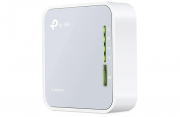
TP-Link AC750
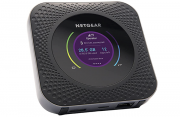
Netgear Nighthawk M1 4G LTE Mobile Router (MR1100)
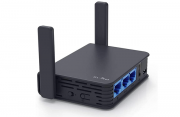
GL.iNet GL-AR750S-Ext Gigabit Travel Router
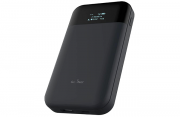
GL.iNet Mudi GL-E750 Portable 4G LTE Router

TP-Link N300 Wireless Nano Travel Router
TechJunkie is supported by our readers. When you make a purchase through our links, we may earn a commission. Read More.
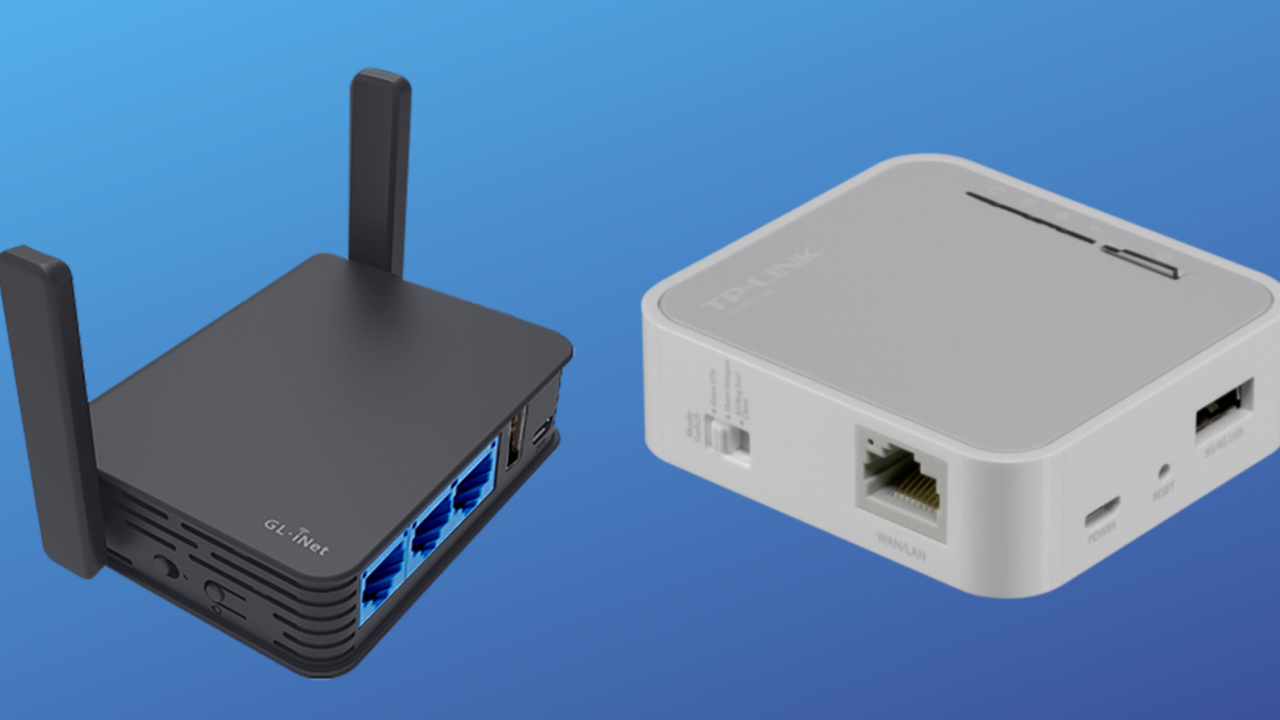
Wi-Fi hotspots seem to be everywhere. It’s practically impossible to wander into a coffee shop, restaurant, or hotel without being offered some type of complementary internet access. However, those of us who are constantly on the go know just how easy it is to be trapped in an unknown location with no Wi-Fi. Whether you frequently travel for work, enjoy going on outdoor adventures, or simply live in an area with too few Starbucks, facing the prospect of a day without Wi-Fi is a real possibility. That’s where wireless travel routers come in. Although you probably didn’t do a ton of traveling in 2020, you might’ve started to plan trips again after more and more restrictions get lifted. Having a travel router on hand is becoming a necessity again, and you can find many excellent options on the market. These handy gadgets allow you to connect your mobile device or laptop to the internet via a secure connection. These devices often have a compact design since their portability is essential for travelers. Some are also battery-powered, so you need to ensure that their battery capacity is large enough to last you an entire work day at least. Wireless travel routers are easy to set up, and others even support VPN support. Here’s a list of the top wireless travel routers on the market in 2022.
01 TP-Link AC750
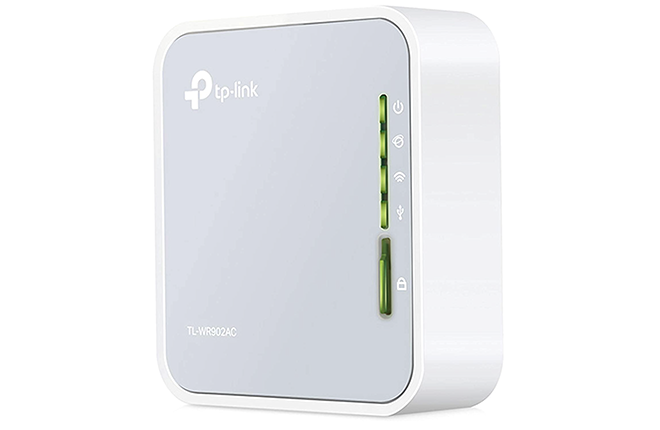
Ah, TP-Link, how we love you. This AC750 unit is quite impressive. It’s small and light and offers a sleek and stylish design. It also offers dual-band AC750 Wi-Fi, which is undeniably strong, efficient, and fast—perfect for streaming on the go between multiple attached systems. Its 2.4 GHz band offers speeds up to 300 Mbps, while its 5 GHz band can reach 433Mbps. This travel router comes with different modes like Router Mode, Hotspot Mode, Range Extender Mode, Client Mode, and Access Point Mode. Its Router Mode allows you to plug the router into an Ethernet port you may have in a hotel room and establish a private Wi-Fi network. Its Hotspot Mode, on the other hand, allows you to create a WISP Access Point for you to share the network with your other devices or peers. Thanks to its Range Extender Mode, the router can also act as an extender, so you can improve coverage wherever you are. The Client Mode allows devices that need a wired connection to connect to an existing Wi-Fi network. Lastly, its Access Point Mode lets you make a custom wireless network for any Wi-Fi-ready device. The router has a single switch that allows you to toggle between multiple modes. The TP-Link AC750 travel router has a USB 2.0 (Type-A) port you can use for either sharing files or charging other devices. The router is a wireless router, but when you’re low on juice and still want to continue using it, you can use its micro USB port to connect to an external adaptor, power bank, etc. Customers can expect TP-Link to give them award-winning access to some of the best customer service around and an industry-leading 2-year warranty with unlimited 24/7 technical support.
Specification
- Price $39.99
- Wireless Type 802.11ac
- Frequency Band Class Dual-Band
- Wi-Fi Speed Up to 5GHz:Up to 433Mbps 2.4GHz:Up to 300Mbps
- Wireless Standards 5GHz: 802.11ac/n/a 2.4GHz: 802.11b/g/n
02 Netgear Nighthawk M1 4G LTE Mobile Router (MR1100)
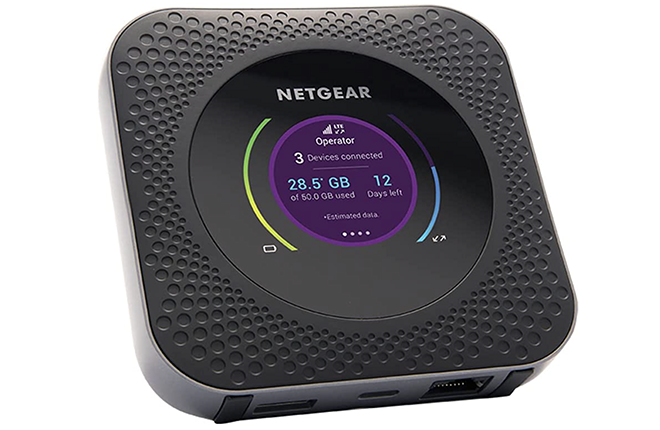
If you have no budget limitations and are willing to splurge on a wireless travel router, you might want to look at the Netgear Nighthawk M1 4G LTE Mobile Router. You simply insert a micro sim card into the router, and you’ll be able to turn its mobile data into a Wi-Fi network. Netgear says that it works best with AT&T and T-Mobile sim cards. It features a 4G LTE band, which might be disappointing for some because of the availability of 5G connectivity these days. Nonetheless, you can rest assured that this device would still be sufficient for you to get work done when you can’t find any reliable Wi-Fi network in the hotel or cafe you’re in. The device supports Wi-Fi 5, and you can get download speeds of up to 1 Gbps and upload speeds of up to 150Mbps. Users can use the router to provide internet for all their devices because it can connect to as many as 20 devices. The router has a 5,040 mAh rechargeable battery, giving you all the juice you need to stay connected for about 13 hours. It even has a Jump Boost feature that allows you to use the router as a power bank for your other mobile devices. You will also love how the router comes with a USB port you can use to share files with other connected devices. The device’s port selection is pretty impressive because, aside from a USB Type-A port, it also has a USB Type-C and Ethernet port.
- Price $378.77
- Wi-Fi Speed Up to up to 150Mbps

03 GL.iNet GL-AR750S-Ext Gigabit Travel Router
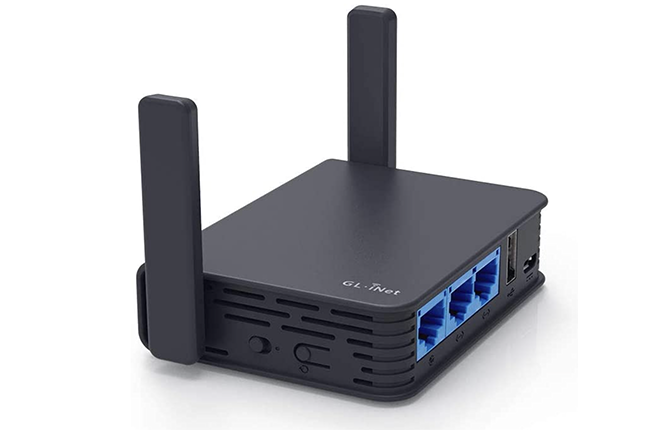
The GL.iNet GL-AR750S-Ext Gigabit Travel Router stands out when you compare it to its rivals because of its various extra features. The router supports dual-band Wi-Fi, so you can access 2.4G or 5G speeds. It comes with foldable antennas, which might make you assume it will help it perform better, but some users have reported that they aren’t that useful. It’s a perfect device to have if you’re fond of connecting to public networks because it can convert such networks into private networks. This guarantees top-notch safety from any potential data breaches. What’s unique about this device is how it has VPN capabilities. It comes with WireGuard and OpenVPN pre-installed, but WireGuard offers faster speeds between the two. You can rest assured that you can hide your IP address from anyone who might be tracking you. The router is open source and programmable since it has OpenWrt/LEDE built-in. The GL.iNet GL-AR750S-Ext comes with 128MB NAND Flash, 16MB NOR Flash, and 128MB RAM, and it has a microSD slot that supports up to a 128GB card. If you feel like connecting directly to the writer, you can use one of its three Ethernet ports. Upon purchase, customers will receive a 1-year limited warranty, USB cable, Ethernet cable, and power adapter.
- Price $74.90
- Wi-Fi Speed Up to 433Mbps(5G) +300Mbps(2.4G)
04 GL.iNet Mudi GL-E750 Portable 4G LTE Router
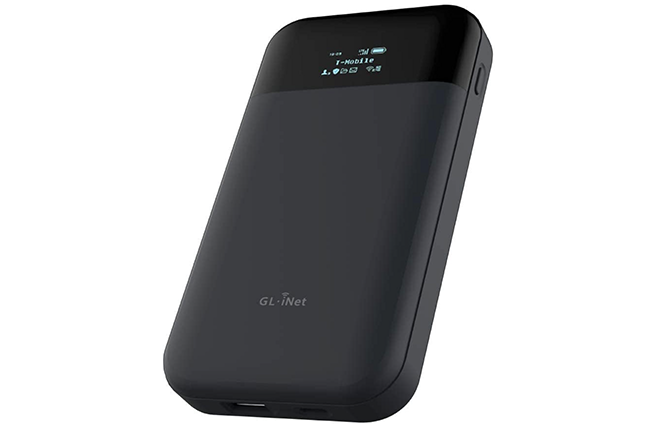
The GL.iNet Mudi GL-E750 Portable 4G LTE Router is another option for those who want a travel router that can create a mobile hotspot. It has a sim card slot for you to convert 4G LTE mobile data into a Wi-Fi network. The device supports dual-band Wi-Fi, so you can enjoy either 2.4G (300Mbps) or 5G (433 Mbps). It comes with two full-frequency antennas, but you can’t see them since it’s hidden inside the device. The router is unique because it comes with WireGuard and OpenVPN built in. It has a dedicated hardware switch button that allows you to turn the VPN on and off. It’s open source like the GL.iNet GL-AR750S-Ext Gigabit Travel Router because it also has OpenWRT pre-installed and has the same microSD slot, 128MB NAND Flash, 16MB NOR Flash, and 128MB RAM. The device has a built-in 7,000mAh battery, giving you enough power you need for an entire work day. Learning how to control or configure the router is easy since you can download the companion Mudi mobile app for free. The freebies included with the device are a USB Type-C to Type-C cable, USB Type-C to Type-A cable, a USB Type-C port replicator with an Ethernet port, an Ethernet cable, a power adaptor, and a 1-year limited warranty.
- Price $159.90
- Wi-Fi Speed Up to 2.4GHz(300Mbps), 5GHz(433Mbps)
- Wireless Standards 700M~2.7GHz
05 TP-Link N300 Wireless Nano Travel Router
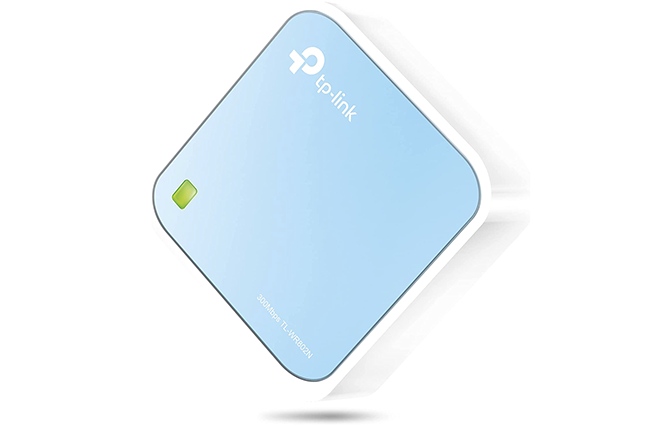
The TP-Link’s N300 is among the most affordable options you can get because it only costs $28.49, but you’ll have to be ready for some compromises. TP-LINK is pretty much a household name (in tech-loving households, that is), and this unit lives up to its expectations. This N300 device is well-priced, pocket-sized, and supremely portable. The only catch is that it only supports a single 2.4GHz band, reaching a maximum Wi-Fi speed of 300 Mbps. You can quickly create a powerful Wi-Fi hotspot to share with family and friends and stream videos, games, and music. It’s also seamlessly compatible with Chromecast (for all of you Chrome lovers) and features a micro-USB power port that allows you to power external devices via an external adapter. A pre-encryption function sets initial SSID and password protection, and you also get an industry-leading 2-year warranty and unlimited 24/7 technical support. The TP-Link N300 has different operating modes like Client, Repeater, Access Point, Bridge, and Router. Its extender capabilities ensure you won’t have any dead spots wherever you may be. Customers will get a 2-year warranty and unlimited 24/7 technical support. This router might not be the fastest on the market, but its affordable price tag and compact size make it an excellent deal.
- Price $28.49
- Wireless Type 802.11a/b/g/n
- Frequency Band Class 2.4 GHz
- Wi-Fi Speed Up to up to 2.4 GHz 300 Mbps
- Wireless Standards 2.4 GHz
Sep 14, 2022
50 Articles Published
Table of Contents
- 1. TP-Link AC750
- 2. Netgear Nighthawk M1 4G LTE Mobile Router (MR1100)
- 3. GL.iNet GL-AR750S-Ext Gigabit Travel Router
- 4. GL.iNet Mudi GL-E750 Portable 4G LTE Router
- 5. TP-Link N300 Wireless Nano Travel Router
Our Process & Method
We're not just tech junkies, but we're also tech experts. Each and every "Best of.." list on TechJunkie is curated by our content-area subject matter experts to provide a well-rounded, unbiased perspective to help and inform you, our reader. Our lists are constantly reviewed and updated, so you can be sure you're reading relevant and up to date information.
The Best Projectors for Gaming
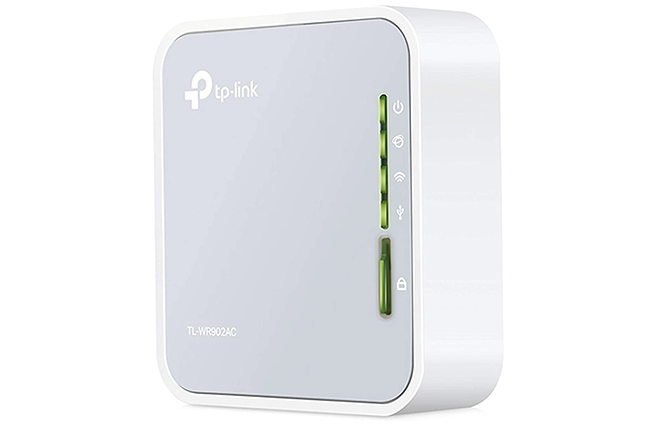
Wireless Type
802.11a/b/g/n, frequency band class, wi-fi speed up to, 5ghz:up to 433mbps 2.4ghz:up to 300mbps, up to 150mbps, 433mbps(5g) +300mbps(2.4g), 2.4ghz(300mbps), 5ghz(433mbps), up to 2.4 ghz 300 mbps, wireless standards, 5ghz: 802.11ac/n/a 2.4ghz: 802.11b/g/n, 700m~2.7ghz.

How to Change Your Name in Zoom
May 31, 2021

How To Filter By Color in Google Sheets
Robert Hayes
Jan 15, 2020
Copyright @2024 TechJunkie
Add Listing
If you don’t see an app that should be here, let us know what it is
What Are Travel Routers? Everything You Need to Know
If you travel often, or if you're soon traveling as a group, then a travel router might be just the thing to make your trip easier and more pleasant.
Most of us don't travel these days without a full arsenal of gadgets. A phone, a tablet, a laptop, a Kindle, a Chromecast, the list goes on. If that's you, you'll also know that setting them all up on hotel Wi-Fi is a bit of a pain.
The solution is to throw another piece of kit into your bag: a travel router. But what exactly is this, and why do you need one? Let's take a look.
What Is a Travel Router?
Put simply, a travel router is a Wi-Fi router just like the one you've got set up at home, and it works the same way. It's just smaller and more portable, making it more suited for travel.
A travel router is designed to simplify the process of connecting and managing devices on public Wi-Fi networks, whether that means in a hotel, at the airport, or anywhere else.
Most major router manufacturers have travel versions in their product range, including Netgear, D-Link, and more. They can be pretty small, too. The TP-Link Nano routers are almost as small as a credit card, while many other models are comparable in size to a portable phone charger.
Benefits of Travel Routers
The most obvious benefit of a travel router is that it means you don't have to keep adding your devices to the new Wi-Fi networks that you want to use. You keep your devices connected to the travel router instead, and then you only have to connect the travel router to different networks.
This also has the effect of hiding all the devices you've connected to the network—technically, you've only connected one: the travel router. It brings potential security benefits, and it helps you to bypass any arbitrary limits the network owner might have placed on the number of devices you're allowed to connect.
But there are even more benefits.
If the router has an Ethernet port, it can turn a wired internet connection into a wireless one. Travel routers can create a shared network between your connected devices, and many have a USB port that you can use with a flash drive full of media content.
They can also work as wireless extenders that can remove any Wi-Fi dead spots wherever you are. You're unlikely to use this function on the road, but it's a good way to improve Wi-Fi coverage at home .
Drawbacks of Travel Routers
There aren't many downsides, but there are a few things to bear in mind.
First, many travel routers need an external power source, which will limit where you can use them. Second, most need an existing Wi-Fi internet connection to get you online, although some models are available with a built-in SIM card slot for mobile internet connections.
Most importantly, even though they offer some improved security to your devices, they won't protect any data you share over open public Wi-Fi networks. It's important to take the same precautions you would take if you'd connected your laptop to a public network directly.
Related: Dongles vs. Portable Hotspots: Mobile Internet Devices Explained
What to Look for in a Travel Router
When you're shopping for a travel router, you should look out for the same kinds of features you'd look for in a standard wireless router. On top of that, you might also find a few extra features that will help when you're on the road.
Wi-Fi Standard and Band
As with any router, check what Wi-Fi standard it works on. Wi-Fi 6 (802.11ax) is the latest and fastest standard, but if not, then 802.11ac (Wi-Fi 5) is absolutely fine, and 802.11n (Wi-Fi 4) is okay at a push. You should avoid anything older—they will be much slower, more prone to interference, and their age may also suggest they have less modern and less robust security protocols.
Whichever you choose, one that supports the 5 GHz band is preferable. 5 GHz has a smaller range than 2.4 GHz, but it's less susceptible to noise, so it gives you stronger and more reliable signals.
All Wi-Fi 6 routers support 5 GHz, as do those with 802.11ac. Some 802.11n routers are restricted to a single band and only offer 2.4 GHz.
Battery Power
If you want a truly portable solution, then get a travel router that runs off battery power. Unfortunately, many of them don't. If you can't find a suitable model that does, look out for one that can be powered via a USB port. That way, you can plug it into your laptop to use when you're on the road. It's far more convenient than having to search for a power outlet.
Ethernet and USB ports are essentials in a travel router. With Ethernet, you can turn a wired connection that can only be used with a single device (that has an Ethernet port of its own, like a laptop) into a wireless connection that you can use with multiple devices, including phones and tablets.
A USB port has several uses. The main use is for power: some travel routers can be used to charge other devices. Some routers enable you to insert flash drives or portable hard drives and share the media contents stored in them, just like a NAS system does.
Or you can insert a 4G dongle and share your 4G data plan across all your devices.
Some travel routers have a SIM card that you use for this as well. It's less essential, though, because you can use tethering on your smartphone to do the same job. Just make sure your data plan allows for it.
Multiple Usage Modes
Travel routers have many usage modes that enable them to work in different ways. Not every model will have all of these modes, and they might not always have the same names, so just be aware of that. The five most common modes are:
- AP mode: Creates a wireless access point from a non-wireless internet connection via an Ethernet cable. For use in locations where there's only access to a wired connection.
- Router mode: The router connects to the network, and your devices connect to the router. They remain hidden on the network.
- Repeater mode: The router extends coverage of the existing wireless network. This is a good use for the router when you're at home.
- Bridge mode: Takes the existing network connection and broadcasts it with a separate network name and password, effectively splitting the network in two.
- Client mode: Gives wireless capability to any non-wireless device by way of a cabled connection.
You need to activate and configure each mode separately when you use them. Check out our guide on how to set up a travel router for more.
Is a Travel Router for You?
If you travel a lot and take many gadgets with you, it might be worth throwing a travel router in your bag.
Travel routers are great for getting lots of devices onto wireless networks without any hassle. They're ideal for hotel rooms that only offer wired internet. And if you pick the right model you can fill up a memory stick with your favorite movies and stream them to your devices as well.
You can also use your travel router at home. You can set one up as a wireless extender to remove any dead spots from the furthest corners of your house when you aren't at home. It's even possible to push Wi-Fi coverage out into your garden. Or you can use the router to turn your old printer into a rather more useful wireless version.
Now you just need to decide which travel router to buy.
- 9 Free Online Earth Day Games for Kids
- The Best Gadgets for The Beach or Pool
TP-Link TL-WR902AC AC750 Travel Router Review
A versatile pocket-sized Wi-Fi router
:max_bytes(150000):strip_icc():format(webp)/AndyZahn-889988aaa3a24074903f74ca8ebd874f.jpg)
- Lower Columbia College
We independently evaluate all recommended products and services. If you click on links we provide, we may receive compensation. Learn more .
TP-Link TL-WR902AC AC750 Travel Router
Lifewire / Andy Zahn
Extremely portable
Fast Connection
Inexpensive
Easy setup process
Range is somewhat limited
Incldued cables are short
The TP-Link TL-WR902AC Travel Router is both versatile and portable. Whether you’re traveling and want more security and privacy than a public Wi-Fi network affords, or you just want to extend your home Wi-Fi network, this humble little gadget can’t be beaten.
- Connectivity
- Competition
- Final Verdict
When you’re on the road, a fast and safe wireless connection can be a tricky thing to come by. An open network is a vulnerable network, and someone could easily be snooping on you when you log in to the guest network in your hotel to which dozens, perhaps hundreds of people are also connected. That’s where the TP-Link TL-WR902AC Travel Router comes in, offering a private network connection wherever the road takes you.
Design: Small and simple
The TP-Link TL-WR902AC is nothing if not simple in its design. You’ve got two Ethernet ports (one to connect the router to the network, one to connect a device to the router), a USB port, and a power adapter port. There’s a reset button, a switch for selecting one of three different modes, and the device comes packaged with just a short ethernet cable and an equally short power cable.
The short length of these cables is somewhat limiting, so you may want to supply your own. Fortunately, they’re easy and inexpensive accessories to buy. Since power is supplied via a micro-USB port, this router could easily be powered via a portable battery pack, which means you don’t necessarily even need a wall outlet to use it.
The small size and light weight of the TP-Link TL-WR902AC is a definite boon to frequent travelers. It’s so small that it easily fits in my pants pocket, making it diminutive enough to go with you wherever you go and however little you’re able to carry. It seems to be made of quite durable plastic, so you needn’t worry about it breaking en route. The design is fairly bland and utilitarian, with a simple row of indicator lights breaking up its monotonous grey and white surface, but then it's not a category that inspires a lot of dramatic design.
Setup: Hassle free
The TP-Link TL-WR902AC works effortlessly as a travel router . It’s basically plug and play, so you just need to plug it into an ethernet port in your hotel room and boom, you’ve got your own private network. It took me less than ten minutes to get it up and running the first time in router mode, and subsequent installations were of truly inconsequential length. It’s only slightly more complex than charging your phone, and the included instructions are straightforward and well laid out.
You just need to plug it into an ethernet port in your hotel room and boom, you’ve got your own private network.
Connectivity: Quick and reliable
In the Ookla speed tests I ran, the TP-Link TL-WR902AC showed similar results to a standard ISP provided router from Centurylink. I never experienced any issues with speed or reliability when using this router. I also appreciated that this router packs in dual-band capability despite its small size.
Range was just OK, but by no means terrible for such a diminutive device. I was able to use it throughout a medium-sized house and around the yard beyond up to about 100 feet. That range dropped off pretty quickly when obstructions hampered the signal. However, this router is intended for private internet browsing in a hotel, convention center, vacation house, or other remote location where portability and ease of use are more important than range and signal strength.
I was able to use it throughout a medium-sized house and around the yard beyond up to about 100 feet.
Beyond its usefulness as a standalone router, the TP-Link TL-WR902AC can also function in a number of other capacities. It can be set up as a range extender for your existing network, or as a transmitter to add wireless capability to a device designed only to connect to a wired network .
Software: Just the essentials
The TP-Link TL-WR902AC doesn’t really have software to speak of beyond the basic backend tools, and that’s just fine. The lack of need for extra software is an indicator of the desirable simplicity of this router.
Price: Budget friendly
At only $45, the TP-Link TL-WR902AC is about as cheap as routers come, and is really quite a bargain considering its portability, ease of use, and remarkable versatility. It offers similar performance compared to a basic ISP-provided router, but for less than half the typical price.
It's really quite a bargain considering its portability, ease of use, and remarkable versatility.
TP-Link TL-WR902AC Travel Router vs Ravpower Filehub AC750 Travel Router
If you’re looking for a step up from the TP-Link TL-WR902AC, the Ravpower Filehub AC750 has a built-in battery bank that allows it to operate for a short period of time without being plugged in. It can also be used as a portable battery bank with which to charge your smartphone or other devices. However, it’s more expensive, heavier, and has a more confusing setup process than the TP-Link.
With its strong signal, diminutive size, and affordable price, the TP-Link TL-WR902AC Travel Router is an easy device to recommend.
People typically don’t even think about packing a router in their suitcase, but the TTP-Link TL-WR902AC Travel Router deserves a place in your bag. It’s fast, quick, and easy to set up, and is small enough to fit in your pocket. Whether you’re traveling the globe or expanding your home Wi-Fi network, the TP-Link TL-WR902AC is a capable companion.
- Product Name TL-WR902AC AC750 Travel Router
- Product Brand TP-Link
- SKU 5844810
- Price $45.00
- Product Dimensions 2.6 x 2.9 x 0.9 in.
- Warranty 2 years
- Ports 2 Ethernet, 1 USB
Get the Latest Tech News Delivered Every Day
- The Best Wireless Travel Routers of 2024
- The Best Mesh Wi-Fi Network Systems of 2024
- The Best Wi-Fi Range Extenders of 2024
- The Best Asus Routers of 2024
- 5 Things to Consider Before Buying a Wireless Router
- The Best Parental Control Routers of 2024
- The Best Long-Range Routers of 2024
- Can Two Routers Be Used on the Same Home Network?
- The Best Cable Modem/Router Combos of 2024
- How to Use a Router as a Wi-Fi Extender
- The Best USB Wi-Fi Adapters of 2024
- What Is a Wi-Fi Adapter?
- The Best Tech to Travel With in 2024
- What Is a Wi-Fi Router?
- The Best Netgear Routers of 2024
- How to Connect Fire Stick to Hotel Wi-Fi
Budget Travel Buff
10 Best Wireless Travel Routers to Carry while Traveling the World
The world is waiting for you! Let’s travel and work with your wireless travel routers inside your pocket.
Jessica: I cannot go out on a trip with you. I have to attend zoom classes, have to take care of my online business, and answer each email. Importantly, I’m launching my online course this Friday. Thus, I cannot go on this trip.
Kevin: We can travel and do all these things in our dream destination itself. Your business is online. You only need a stable internet connection, you will be doing well.
Jessica: Absolutely, I need a stable secure internet connection and while traveling we cannot afford that! I have to be consistent on social media updating everything about this course.
Kevin: Yes, we can. Even, I want to watch “The Walking Dead” on Netflix.
Jessica: Stop being dramatic, this is impossible! I have to carry a tablet, my mobile phone, my laptop, camera, Chromecast, and my Kindle.
Kevin: Yes, so? You can carry whatever you want, even more.
Jessica: Really? You are asking me to carry all of my gadgets and use a weak, insecure, limited, slow, and unreliable internet connection for hotel rooms or public restaurants?
Kevin: Uhh!! No, I never said that. Instead, we can buy a wireless travel router. And all our problems will be solved. We can travel and still be connected with the world.
Jessica: What? How!?
Kevin: Yes, a portable travel router is very compact and you can carry it inside your side bag. We can easily solve this internet issue. It can also be used as a battery bank, VPN server, and data transfer device.
After this, they brought one of the best travel routers from Amazon and went on the trip, happily. Jessica successfully launched her online course on Friday and even dealt with her business swiftly and flawlessly while Kevin too watched his favorite show on Netflix.
Even this can be your story; if you buy one of the best travel routers for yourself; you can travel wherever you want.
This post may contain affiliate links. If you buy something through one of those links, you won’t pay any extra penny, but I’ll get a small commission that encourages me to deliver more helpful content for you.
What is a P ortable T ravel R outer?
The best travel routers are Wi-Fi routers which are handy, lightweight, and wireless. Thus, it is very easy to carry and travel with. You have to set it up and link it to any apartments, public Wi-Fi network, or smartphones, 4G or 5G connections and contribute that signal to your devices.
Nowadays, most router creators create portable versions like Netgear, D-Link, and many other alternatives. These are small and portable, giving you the freedom to carry it without any hesitation. The TP-Link routers are the best nano travel routers which are almost the size of the oldest version of the Nokia mobile phone.
Why Do You Need a Wireless Travel Router?
A 4G connection in your smartphone is enough to open a travel app while visiting a new country. But if you’re a travel blogger/vlogger or someone who needs to work remotely, a wireless travel router is a valuable item for you.
There are different types of Wi-Fi travel routers with diverse characteristics, features, and properties. These Wi-Fi travel routers are wireless and have a strong range of Internet network connections.
Here are the main characteristics of a mini travel router and a good travel router . They are as follows:
- The best travel routers can broaden the extent of the wireless network. It means that without the router you will not be able to connect your devices because the signal there is very weak and slow. But, the router is so powerful that it amplifies the signal and you can connect your devices and work swiftly.
- The top travel routers should have a stable and steady wireless network in public Wi-Fi. Switch on your hotspot and you can browse your mobile and other electronic devices. These wireless routers provide the best secured encrypted data protection and also protect devices from DoS cyber attacks and port scans from the Internet.
- Wireless travel routers allow the linking of multitudinous and collective devices to a network without slowing the speed of the internet connection. You have to log in once and you are free to go anywhere with any devices you want. It supports mobile phones, tablets, laptops, apps, Kindle, and other devices.
- These routers can be used as Wi-Fi bridges too. Wi-Fi travel routers have Ethernet ports that can be connected to Ethernet-enabled devices without a wire to an already available Wi-Fi network. For playing online games, watching television, one can use such routers.
- The best travel routers can turn the wired network into a wireless network, to enable USB charging power for devices like smartphones, and smartwatches. They also can be used as SD Card Reader or media- the focal point.
- Some good travel routers could be converted into a mobile hotspot too.
Read Also :
- 10 Best Laptops for Travelers: The Ultimate Buyer’s Guide
- 14 Best Smartwatches for Teenage Boys and Girls
Buying Tips for the Best H andy F astest T ravel R outer
Sometimes, it is natural for you to not know what to look out for while purchasing a handy fastest travel router. Therefore, I am listing down all the important tips so that you can remember while purchasing the best travel routers. They are as follows:
- The best speed : Irrespective of a place, you can now enjoy the best and high connection network strength with the portable wireless routers.
- Best power back-up : You want to travel out but still want to stay connected with the world? No worries, these routers offer the best battery back-up facilities.
- Network signal : Enjoy high speed network facility and browse as many devices you want.
- USB ports and jacks : Always make sure that the USB cord is adjustable with your mobile phone. It should be a 2.0 USB port along with other port options.
- Size : By the perfect size which you dream of! It is always desirable if you would buy the handiest one which you can carry in your hand bag or in your jeans pocket.
- Network connection strength : Make sure that before purchasing read all the features of the product. Buy a 3G, 4G or 5G connect strength router.
- Variety mode : The best travel routers should contain the AP mode, the Router mode, the Repeater mode, the Bridge mode, and the Client mode.
List of 10 Best Travel Routers
You are here because you are definitely looking to buy the best travel routers. Therefore, I’ve done the research for you. I have listed all the best 10 wireless travel routers which you can buy from Amazon.com. They are as follows:
1. TP-Link TL-WR902AC AC750 Travel Router
TP-Link’s TL-WR902AC is a stunning, beautifully designed lightweight, and is a white, small, popular travel router. Not only it is small and handy, but it is the most versatile router and delivers professional performance without any fault. It is neither bulky nor big. So you have the full freedom to carry it easily in your pocket.
It offers dual-band wireless Wi-Fi speed up to 433 Mbps on the 5GHz 802.11 ac side. You can also use it as a Wi-Fi range extender. Set your ideal password and it is ready to run on unlimited devices of your connecting with the hotel’s Ethernet.
You can work without any stress from cyber attacks, despite your location. Buy this best travel router review with 4 stars at a budget-friendly rate.
- Affordable by all
- Ideal to travel with because of its size
- Offer best speed and network
- The cord size is small
- Few customers have complained about security issues.
2. Alcatel LINKZONE Mobile WiFi Hotspot 4G LTE Router
Alcatel LINKZONE is an MW41TM travel-friendly router . It’s the best battery-powered travel router that allows transmitting signals without a wire. It weighs 3.88 ounces that makes it a little heavier but you can enjoy high-speed internet browsing through Instagram and upload all your memorable pictures with the world. I’m sure you can make your friends jealous with traveling and working at the same time. more desirable among youth. It provides a safe and steady connection to a maximum of 15 devices.
It offers a data transfer rate of up to 150 Megabits Per Second. It also works on the 2.4GHz web depending on your requirements. This device will run with the help of a GSM micro sim card. It comes with a removable 1,800mAh battery that will help you to browse for continuous 6 hours.
Click as many photos you want and share them on social media, despite your location. This travel router provides a single port. It provides up to 150 Mbps download speed making it desirable among youth.
Pros : Only 10 hours to charge it fully
- Overcharge can lead to battery heating
- No Commitments
3. HooToo Tripmate Titan
Do you want to turn a wired or wireless network into your own personal network? Yes? Then connect to the Wi-Fi and share hotspot with the help of a mobile phone and you are free to start a stable connection for a maximum of 5 devices. HooToo Tripmate Titan is a small router with an integral Ethernet port which is just 0.55lb in weight.
It comes with an innate portable battery range of 10400 mAh which allows you to charge your smartphone at least three times per day. It is the best travel router for the Ipad because it comes with numerous USB ports for sharing data. It has one USB –A port, a micro –USB port, and a single Ethernet port.
If you want to watch a movie on television then you can connect a hard drive to the router and exchange large files without any disturbance. You can avail the best router with the best connecting Wi-Fi speed. It’s a light red color router with 3. 3 stars.
- Easily carried inside the pocket
- Light weight
- It supports Chromecast
- A power pack for your Iphone and Ipad
- VPN is not allowed
- Updating is a little tricky
Read Next : 10 Best Water Filters for Traveling and Hiking
4 . GL.iNet GL-AR750S-Ext Travel Router
Are you searching for a lightweight travel router? Then this is the best choice for you. This is expensive but one of the best travel routers for frequent travelers. It has LAN ports and offers the best stable, fast, and secure internet connection. This medium size router weighs up to 3.03 ounces with a 128 GB MicroSD card for storage.
It is one of the best and reliable routers for travel manufactured by GL Technology. Buy this best dual-band wireless travel router with VPN. It has an open VPN and WireGuard pre-loaded and is best suited with 30 + VPN internet services. The eye-catching pre-configured security feature of this router is Cloudflare DNS over TLS.
This ultra-thin best travel router has three Ethernet ports and a USB cord for charging mobile phones and other devices. It offers a great speed up to 733 MB/ second and full 5 GHz 802.11 ac support. I would suggest you to make an excellent choice and purchase this versatile 4.5-star travel router.
Pros : Small size, LED lights
Cons : Before an operating update is necessary.
5. Roam Wifi R10 Router
A small, very expensive travel router weighs only 175 grams which means it is super easy to carry. You can carry inside your tight jeans pocket and can spend days without an uncomfortable journey. You can carry this with you and work outside the hotel or restaurant.
RoamWiFi R10 Mobile Hotspot router gives you an amazing offer of 100GB local data that can be used in the USA, plus 1GB global data that can be used in all 160 supported areas and countries. Where will you get such a great offer? It comes with a maximum up to 50Mbps upload speed and a maximum up to 435Mbps download speed. Hence, no more digital less life while traveling.
You can connect and share the network with up to 5 smart devices. This product has a built-in 5000mAh battery, which runs continuously for over 20 hours. Read your favorite e-books, watch series, attend zoom calls, work, and stay connected with the world!
Pros: Best Wi-Fi that runs both 5GHz and 2.4GHz
Cons : Damn expensive
Read Also : Top 10 Headphones for Teenagers: The Ultimate Buying Guide
6. Securifi Almond Touchscreen Router
Do you want to buy a newly cool tech router? Then you need this Securifi Almond Touchscreen Router in your hotel bedroom. Almond is the fantastic device of technology that first launched a touchscreen wireless travel Wi-Fi router. This special router does not call for PC/MAC setting up. It can be set up by Almond’s touch screen interface.
The New York Times, CNBC, CNET reviewed this as one of the best travel routers. You can use this best travel router for hotels, which more than 11,000 people have used, providing it with 4.2 stars.
You can use this router in four different ways – as a wireless or a range extender or wireless bridge or as an access control point. If you want an easy three-minute setup router with easy functionality then this router is only for you. You will be surprised to know that this router is compatible with Apple router, Cisco router, Belkin, Verizon, Netgear, AT&T routers, and a lot more.
It can run at a speed of 300 Mbps. Attach a DSL and you are all set to start. This set is very secure with a special SSID and a password. It has 2 antennas, 2 LANs, and 1 WAN port.
7. NETGEAR Nighthawk M1 Mobile Hotspot 4G LTE Router
Are you planning to travel to a remote location and need a great internet connection? Then it’s better to invest in NETGEAR Nighthawk M1 Mobile Hotspot . This router is on the expensive side so if you can afford it just purchase it and you can use it for a lifetime. It allows Gigabit LET and a 4G mobile hotspot.
Do you know you can connect all the electronic devices in your group? You can be your group’s favorite, by letting them connect!
NETGEAR Nighthawk M1 is the best portable modem router that can convert Wi-Fi network connection from 3G or 4G SIM Card and switch to Ethernet connection. Well, no matter wherever you are in this world, purchase a local SIM card that has a Wi-Fi connection of either 3G or 4G, and you will be connected to the world.
It offers four-band Carrier Aggregation and LTE that provide speeds up to 1 Gbps. This device is perfect for traveling which also comes with an LCD screen that has an outcast number of users. It is an all-purpose router for a day out. You can use this as a Wi-Fi, and power bank.
- Connect up to 20 electronic devices.
- 19.78 Wh lithium-ion battery – Great Battery longevity
- Stream videos
- Strong configurable
- High speed at jungle, beach or mountain
- Dual-Band Wi-Fi
- Very expensive
- The size of the router is big compared to others.
8. GL.iNET GL-MT300N-V2 Portable Wifi Router
We have got you the best 4.2 stars and cheap travel router at under $30. If you want to feel the home away from home experience then buy this suitable mini GL.iNET GL-MT300N-V2 yellow color router now! It is feather-light weighs only 1.41 ounces and takes care of your privacy offering the best quality speed data and media transfer speed up to 300 Mbps in 2.4GHz.
You have to log in from your mobile phone and connect to the Wi-Fi of the place. It offers great speed without any complex configuration. It has pre-installed OpenWRT more than 4000 combinations and OpenVPN to guarantee safety. It has a dual Ethernet cord and has an IoT (internet of things) which enables IoT communication.
- Bright yellow color
- Featherweight light
Cons : Instruction is clumsy
9. TP-Link N300 Wireless Travel Router
Do you want a small compact yet powerful router to attend to your zoom calls when away from home? This TP-Link N300 Wireless Travel Router is your masterpiece. It offers you the best speed of 300 Mbps with a 2.4GHz band connection. You can use this as a hotspot, router, access point, and power bank through USB cords.
It is little in size and weighs not more than 7 ounces. You can connect your Chromecast and complete your office work and enjoy the vacation. It has got 3.9 stars for impeccable features because of its portability and friendly wireless connection.
No, unstable internet connection from now!
- Easy to carry
- 2 years warranty
- Sometimes it has weak signals
- No USB cables
10. D-Link Systems Wi-Fi AC 750
Get up to 750 Mbps quick-speed Wi-Fi AC connectivity for your laptops, mobile phones, and tablets at the mountain top or beach. It is small and has a Wi-Fi Protected Setup and WPA wireless encryption which secures all your data from hacking. This router for travel has great battery longevity and covers the area for outdoor working. It has received 3.6 stars
Pros : Inexpensive price
Cons: Complex in setting up
Thus, if you want to work freely without stressing out about internet connection then buy the best travel-friendly router for your convenience. Software, electronic devices, and technology are updating every day; technological advancements have made our life easier. And, with these available wireless travel routers, you can enjoy traveling and work at the same time. There are many more options available on Amazon, but these products are the best rated and best portable routers for your seamless experience.
Read Other Buying Guides:
- Best GoPro For Kids Review And Buying Guide
- 10 Best Anti-Theft Travel Backpacks: Buyer’s Guide
- 10 Super Cool Beach Coolers with Wheels
- The Best Hiking Shorts for Men and Women: Buyer’s Guide
- 14 Best Winter Hiking Jackets for Men and Women
Similar Posts
10 best hiking shorts for men and women: buyer’s guide for 2023.
Do you know hiking is not walking casually on mountains but to sport-climb through the rough-difficult landscape and encountering your physical fitness? Hiking is a powerful aerobic cardio workout with long walks and enjoying the freedom of nature. Hiking the mountainous terrain, enjoying the air, and being comfortable is indeed a challenging task. Then how…
12 Best and Cheap Smartwatches of 2023: Review+Buying Guide
Are you looking for the best and cheap smartwatch to surprise your friends and family? That would give you a tech-savvy look? Then this article is for you. At this time everybody loves to wear smartwatches. We can’t disagree on this. If you haven’t bought yet, then this article may guide you through the best…
10 Best Headphones for Teens: The Ultimate Buying Guide
The rave of headphones among teenagers is not uncommon; it has become more of a fashion statement. Whether you are packing for a road trip or camping, headphones are a must-have item. There are many headphones available on the market that cater to teenagers’ preferences. Our article features the best headphones for teens that offer…
10 Best Beach Coolers with Wheels: Efficient & Affordable in 2023
Summer is just around the corner. Certainly, we are all craving to spend some quality time on the beach. And the best companion for your beach day-out is going to be a beach cooler with wheels. They are easy to carry and you can keep all your essentials in one place. You can have stress…
15 Best Waterproof Hiking Boots in 2023 For All Conditions
Hiking boots are definitely pretty important for your comfort and performance while you are on the trail. But that no longer needs to mean a stiff and burly model that will supposedly weigh you down. The trend these days is mainly towards lighter materials that would still ensure decent support. I remember from one of…
11 Best Budget GoPro For Kids – Action Camera Reviews (2023)
Adventurous kids need a camera that can keep up with their wild escapades. And that’s where GoPro comes in! These action cameras are perfect for capturing every jump, dive, and spin. But it can be difficult to decide which model is best for your little explorer when there are so many options. In this post,…
Are these WiFi routers portable?
Hi Lita, yes, these are all portable routers and very helpful for travelers.
Leave a Reply Cancel reply
Your email address will not be published. Required fields are marked *
Save my name, email, and website in this browser for the next time I comment.
How-To Geek
Where to place your router for the best wi-fi speeds.
Wi-Fi slow? Try moving your router. Here's where you should put it.
Quick Links
Yes, router placement matters, place the router in a central position (or not), in a multilevel home, consider the floor or ceiling, separate your router from your modem, check your wi-fi signal strength.
If your home Wi-Fi seems slow in some rooms, your router might not be in the best location. Wi-Fi doesn't travel far---especially through metal and concrete. So, it's important to determine the best place for your router.
It's tempting to stick your Wi-Fi router wherever you have space, without giving it much thought, but that's a mistake. A Wi-Fi signal only travels so far, and the more walls, bookcases, or other materials it encounters, the shorter that distance becomes. If the internet seems slow or spotty on your phone or tablet, check your Wi-Fi signal strength and check for channel interference .
If you find you don't have a stable signal in certain areas of your home---even on clear channels---it's time to consider moving your Wi-Fi router. It might not be in the best place to reach all the corners of your home.
You might have heard or read that the center of your home is the best place to put your Wi-Fi router, but that advice isn't accurate for every home. For instance, if a living room, kitchen, and garage comprise most of your first floor, sticking your router in the center of that floor might provide more coverage in your garage rather than the areas you use most.
If the closest room to the center of your home is the kitchen, following the "center of home" advice could also be detrimental, as some appliances ( like microwaves ) can interfere with Wi-Fi signals.
It's helpful to consider not only what you tend to do in a given room, but also the devices that live there. While Wi-Fi in the garage might not be necessary for some people, if you have a smart bridge for the garage door, a stable connection is something you need. A Wi-Fi garage door opener might not need the fastest speed, but knowing a Wi-Fi device needs a stable signal can influence router positioning.
Ultimately, your router needs to go in or near the center of the most important area of your home. Wherever you want the fastest speeds, aim for the center of that location.
If you have a home with multiple floors, you also want to consider which floors you frequent the most. If you imagine your Wi-Fi coverage as a sphere (like earth), then the router is the core. If you place your router on the ground in the basement, half the sphere of your Wi-Fi coverage sinks into your foundation.
If you have two levels you use the most, the best placement to cover both stories is either the ceiling of the lower floor or the ground of the higher floor.
Most importantly, don't hide your Wi-Fi router behind books or in a drawer. Your Wi-Fi signal already has to work hard enough to penetrate the walls and floors of your home without adding more barriers. The best location in the room is out in the open.
Your router doesn't have to be tied to your modem. Even if you have a combined router and modem unit, you can use a separate Wi-Fi router instead. If your ISP installed your modem (and Wi-Fi router) in an inconvenient location (like the basement), that's all the more reason to use a dedicated Wi-Fi router. You can run a long ethernet cable from your modem to the best location in your home and connect your Wi-Fi router there.
If your ISP supplied Wi-Fi router/modem only broadcasts on the 2.4 GHz spectrum, you should upgrade to a newer router that also offers 5 GHz. While 5 GHz doesn't broadcast as far, you'll run into fewer interference issues from your neighbors. You don't necessarily have to spend a lot. While Netgear's $160 router offers plenty of extra features and great coverage, you can likely get by with TP-Link's $60 router if your home isn't large.
If your home is exceptionally large, and you need coverage everywhere, consider either Wi-Fi range extenders or, for a more seamless experience, a Mesh Wi-Fi system . Most homes probably don't need Mesh, but it does come with benefits, like automatic updates and automated handoff.
With a Mesh system, your Wi-Fi source automatically moves from one router to another as you move through your home. Range extenders often don't handle the transition as gracefully.
After (or even before) going through these tips, check your Wi-Fi signal strength to see how well you did (or what you need to do). Walk around your home and keep an eye on it to see how strong the signal is in different rooms.
If you want to get even better coverage, try building a heatmap . Knowing, on average, how far your current router can broadcast a signal will help you determine where to put it because you'll have a better sense of its out limits.
Related: How to Check Your Wi-Fi Signal Strength
BroadbandNow is supported by commissions from some of the providers listed on our site. Learn More
- How to Choose the Best Router Placement: Do’s and Don’ts
Where you place your router could be the difference between a good and bad Wi-Fi signal.
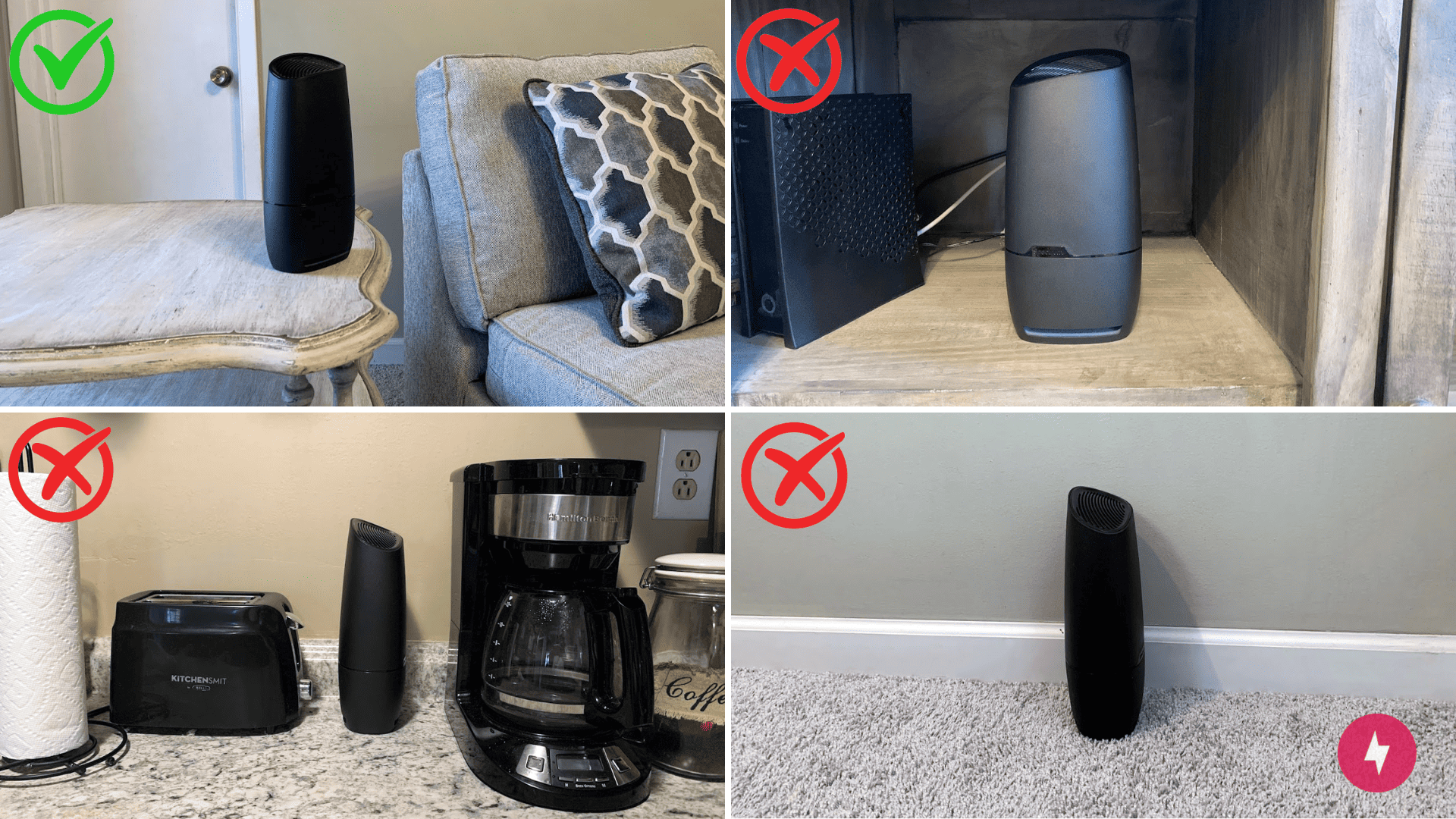
- Putting your router in the right place can ensure a smooth internet experience with quick Wi-Fi speeds, while the wrong place can mean a spotty signal and slower speeds.
- Choosing a central, elevated location with few obstructions will ensure you have the best signal possible on your router.
- Avoid placing your router next to walls, near appliances, on the floor, in cabinets, or around water, mirrors, or metal for the best Wi-Fi connection.
A reliable internet connection is a necessity for all homes. Whether you’re streaming your favorite shows, working from home, or playing online games, the placement of your Wi-Fi router can make all the difference. After all, who hasn’t experienced the frustration of a weak Wi-Fi signal ?
The good news is that there is a simple fix that even tech novices can figure out: router placement. In this comprehensive guide, we’ll explore the do’s and don’ts that will help you achieve the best possible connection because, unfortunately, not all locations will work well. Say goodbye to dead zones and lag, and say hello to seamless connectivity by discovering the secrets to perfect router placement.
Why Does Router Placement Matter?
Router placement is critical in optimizing Wi-Fi signal strength and ensuring a smooth internet experience. The positioning of your Wi-Fi router within your home directly affects the reach and stability of your wireless network. Proper router placement can significantly reduce or even eliminate dead zones where the signal is weak or nonexistent, allowing you to enjoy uninterrupted connectivity throughout your home.
Placing your router in less-ideal locations can lead to signal interference, slower speeds, and frustrating connectivity issues. Even locations that may seem convenient (I want desperately to put mine in my TV cabinet) aren’t ideal. By understanding the do’s and don’ts of router placement, you can harness the full potential of your Wi-Fi network , enhancing your internet experience for all your online activities.
Where Are the Best Places for Your Router?
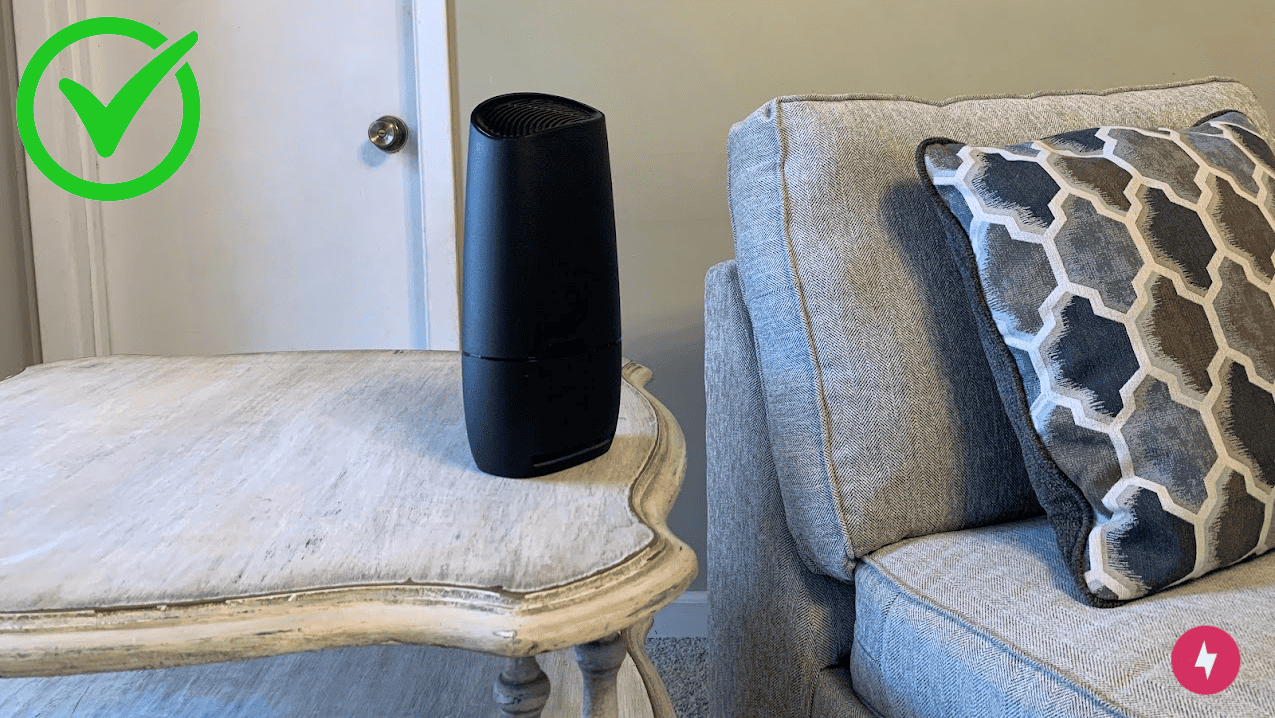
Now that you understand the importance of router placement, let’s delve into the crucial do’s of positioning your router for optimal Wi-Fi performance. In my home, positioning my router in my living room, elevated on an end table with minimal obstructions, garners the best connection and reach throughout my two-story home.
Do: Choose a central location.
Finding a central location in your home ensures the wireless signal can radiate in all directions, minimizing the distance and obstacles the signal must travel to reach various devices. As a result, you can provide equal and reliable coverage throughout your living space, reducing the likelihood of dead zones and ensuring a stronger and more consistent internet connection for all your devices, regardless of where they are in your home.
This location will vary based on your home’s layout. My living room is the perfect center of my house, making it an ideal router location to ensure the most even connection. I also have a split staircase, so that might be another example of an ideal location where I could place it for even coverage across my first and second levels.
Do: Keep it elevated.
Keeping your router elevated (i.e., off the floor) allows it to broadcast its signal more effectively, as fewer obstacles, like walls and furniture, obstruct the signal’s path. Placing it on the floor can lead to signal interference and absorption by the ground, resulting in reduced signal strength and coverage.
Consider placing your router on a shelf or table away from a wall. An end table in your living room is an excellent spot for your router as long as it’s on the top of the table or shelf. If you have a table or shelf with multiple levels, avoid placing it on a lower level, as the ones above could obstruct the signal.
Do: Minimize obstructions.
When your Wi-Fi router has a clear line of sight to your connected devices, it can transmit signals more efficiently, reducing signal degradation and enhancing the overall Wi-Fi experience. Physical barriers like walls, furniture, and appliances can absorb, reflect, and block Wi-Fi signals, leading to weaker connections, slower speeds, and potential dead zones.
If you’re placing your router on a shelf or table, keeping other items off of it is a good idea to give the device the space it needs to transmit signals. Organizing a few small items near your router for aesthetic purposes might be tempting, but it could do more harm than good for your internet experience.
Do: Avoid other electronics.
Electronic devices such as charging ports, televisions, and microwave ovens can emit electromagnetic interference, which can disrupt or weaken your Wi-Fi signal. By maintaining a safe distance from these electronic devices, you can reduce the risk of signal interference and maintain a more stable and reliable internet connection.
While it might make sense to locate your router near your TV or a central charging port, the proximity could negatively impact your connection.
Do: Test out different locations.
Testing out different router locations can help you fully optimize your Wi-Fi network. The best router placement can vary significantly from one home to another due to differences in architectural layouts and potential sources of interference. Troubleshooting your Wi-Fi by experimenting with various positions, you can determine the ideal location that offers the strongest and most consistent signal throughout your living space.
You can easily perform a few speed tests with your router in different locations to determine the best option. I have two locations that could work well for my home. If I wanted to find which one is optimal, I would leave the router in one location for one week and test out the signal strength using a speed test at various times throughout the day. From there, I would compare the numbers and see which location boasted the best speeds.
Where Are the Worst Places for Your Router?
Now that we’ve covered the essential do’s for optimizing your router placement, let’s focus on the critical don’ts you should avoid to prevent common mistakes and ensure the best Wi-Fi performance.
Don’t: Place it next to a wall.

Walls can act as substantial obstacles for Wi-Fi signals, leading to a weather signal and reduced coverage on the other side of the wall. By keeping your router away from walls, you can allow the signal to disperse more evenly throughout your living space, minimizing signal loss and potential dead zones.
Don’t: Put it in the kitchen.
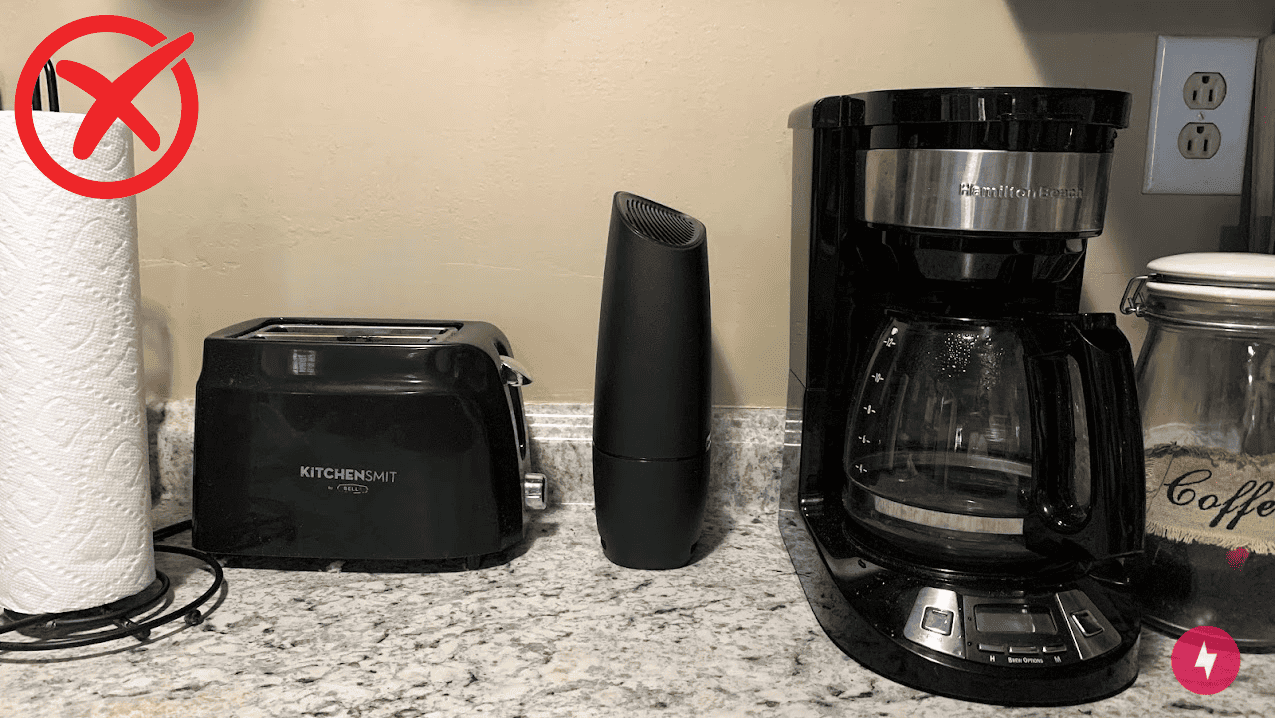
Kitchens are filled with electronic devices, like microwave ovens, refrigerators, and other appliances, that emit electromagnetic interference, which can disrupt Wi-Fi signals. Kitchen layouts often include obstructions such as walls and large appliances that can disrupt the signal’s path, leading to signal degradation and interference issues.
Don’t: Place it on the floor.
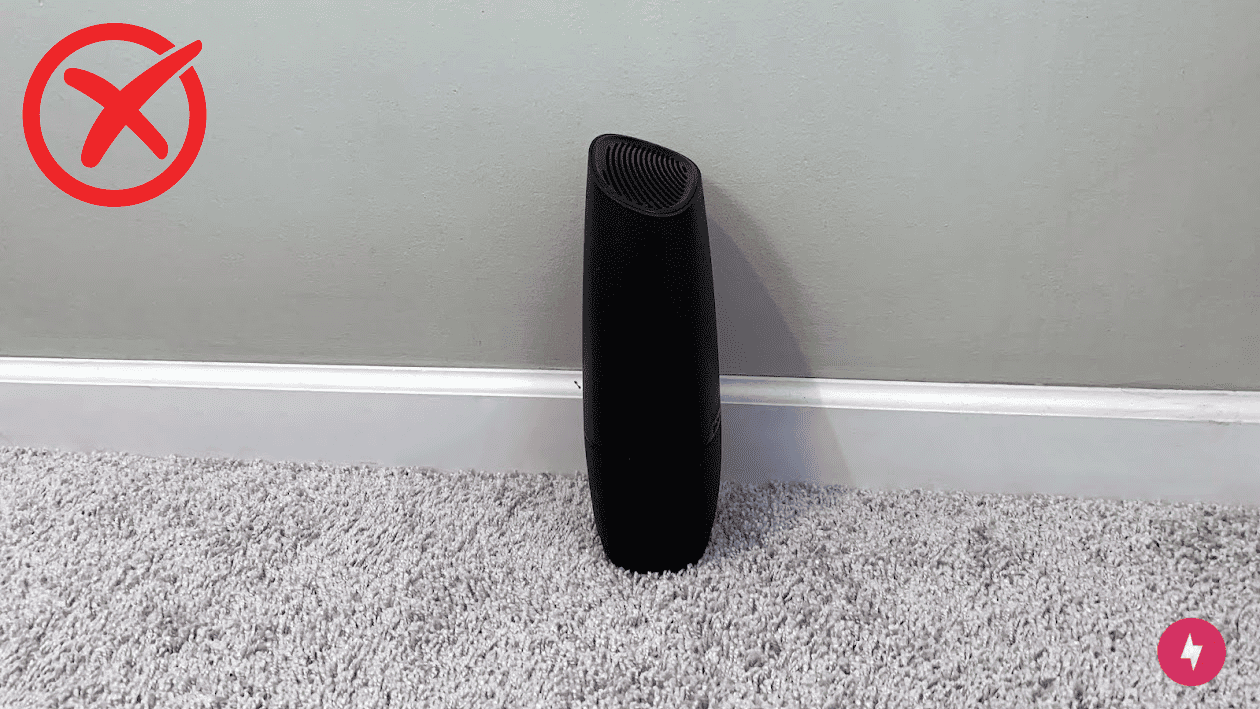
Positioning your router at a low elevation limits its ability to broadcast signals effectively, as the floor can absorb and obstruct the Wi-Fi signal. This can result in a weaker and less consistent connection, particularly on higher floors of your home. Placing the Wi-Fi router on the floor can expose it to dust and potential physical damage as well. To optimize Wi-Fi performance and minimize potential disruptions, it’s best to keep your router elevated and away from the ground.
Don’t: Put it in a cabinet.
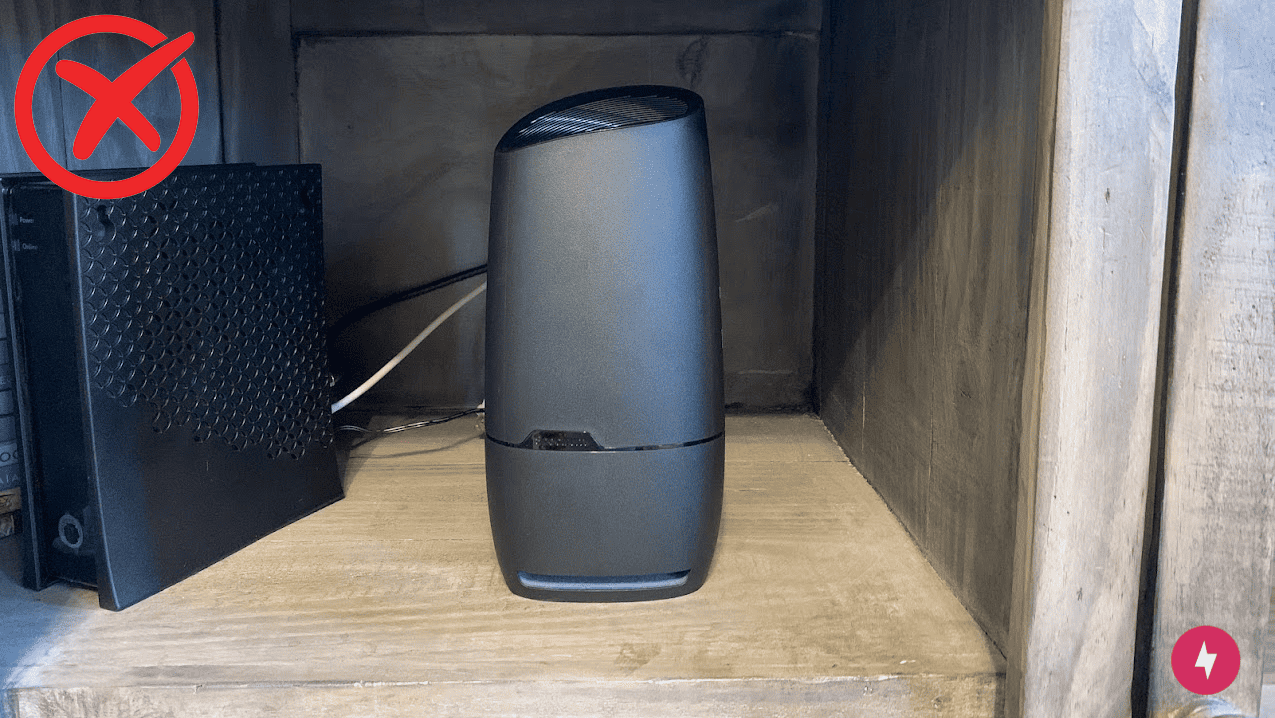
Stowing your router inside a cabinet can severely impede the Wi-Fi signal’s reach and effectiveness. A cabinet, especially one made of wood or metal, acts as a physical barrier that can block and weaken the wireless signal. Placing the router inside a cabinet restricts its ability to transmit signals and traps heat, potentially leading to overheating and reduced router performance.
The most convenient router location to place my router would be the cabinet of my TV stand, but I have to opt for effectiveness over convenience to maintain a strong and reliable Wi-Fi connection. Instead, I keep my router on a table out in the open, free from obstructions and with adequate ventilation, allowing it to function at its best and deliver optimal wireless coverage.
Don’t: Place it near water, mirrors, or metal.
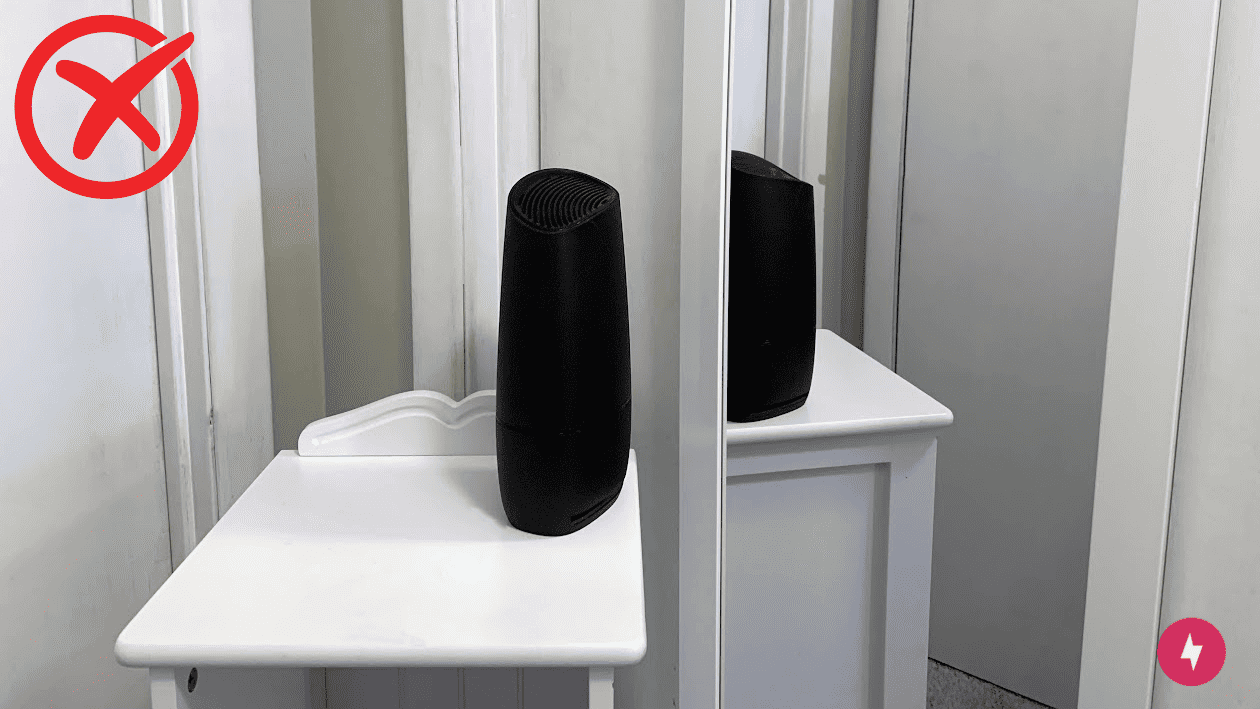
Avoiding the placement of your router near water sources, mirrors, and metal objects is crucial, as these materials can interfere with Wi-Fi signals. Water, due to its high density, can absorb and obstruct wireless signals, causing signal weakening. Mirrors can reflect Wi-Fi signals, leading to signal loss and potential interference. Metal objects, such as appliances or furniture, can also block and reflect Wi-Fi signals, disrupting the movement and causing signal degradation.
If you have a fish tank, a large mirror on the wall, or a metal table in your living room, avoid placing your router too close to these items. If you have many of these items in a room, it may be better to pick a different location for your router if the objects are immovable.
Frequently Asked Questions About Router Placement
Should my router be vertical or horizontal.
Whether your Wi-Fi router should be positioned vertically or horizontally depends on its design and manufacturer recommendations. Many routers are designed to work optimally in a horizontal orientation, while some prefer vertical positioning. The router supplied to me by my internet service provider (Spectrum) features a vertical orientation, while my eero Pro 6 mesh Wi-Fi router is horizontal.
It’s essential to consult your router’s user manual or manufacturer’s guidelines to determine the recommended orientation. In general, a horizontal position is a safe choice for most routers, as it allows for better heat dissipation and can reduce interference from other electronic devices. However, following the manufacturer’s recommendations is crucial, as using the wrong orientation may affect the router’s performance and signal coverage.
How should my router antennas be configured?
Some routers are equipped with antennas to help create a balanced signal. It’s often recommended to have one antenna pointing vertically and another horizontally, which can enhance signal coverage both up and down, as well as side to side. However, it’s best to check the manufacturer’s guidelines for some routers with adjustable antennas to determine the most suitable orientation based on your specific router model. Experimenting with different antenna configurations and monitoring signal strength can also help you find the optimal setup for your home network.
How do Wi-Fi signals work?
Wi-Fi signals operate by transmitting data wirelessly over radio waves. Routers and access points send out these radio signals, which are then picked up by Wi-Fi-enabled devices. such as smartphones, laptops, and tablets, and turned into consumable information. The strength and quality of the Wi-Fi signal depend on factors like signal interference, distance from the router, and obstacles in the signal’s path. The devices and the router communicate by sending and receiving these radio waves, enabling the seamless transfer of data and internet connectivity we rely on for our internet experience.
What blocks your Wi-Fi signal the most?
Materials that are notorious for blocking Wi-Fi signals the most are generally dense and reflective, such as concrete, brick, and metal. These materials absorb and reflect Wi-Fi signals, creating significant signal disruption. Water is also known for weakening Wi-Fi signals. Large appliances and electronics can cause signal interference, while walls, particularly those with metal or concrete reinforcement, can obstruct signal movement.
What do I do if moving my router doesn’t improve my Wi-Fi?
If relocating your router doesn’t result in significant improvements in your Wi-Fi signal, there are several additional steps you can take. Consider upgrading your router to a more powerful or modern model, as newer routers often have enhanced signal strength and features. You can also consider investing in Wi-Fi extenders or mesh Wi-Fi systems to help eliminate dead zones and improve signal coverage throughout your home.
Another step you can take is to reduce signal interference. Working to minimize the use of other electronic devices on the same frequency and positioning your router away from potential sources of interference can further enhance your Wi-Fi performance.
ENTER A ZIP CODE TO FIND PROVIDERS IN YOUR AREA
Broadband shopping guide.
- Determine what Internet speed you need
- Internet Bandwidth Calculator
- Compare Urban Internet Options: DSL vs Cable vs Fiber
- Compare Rural Internet Options: Satellite Internet vs DSL
- Decide Between a Bundle or Internet-Only
- Decide Whether to Buy or Rent Your Modem
- Internet Contracts and Fees 101
- Order and Install Internet Service
INTERNET TROUBLESHOOTING AND GUIDES
- How to Set Up A Home WiFi Network
- How to Extend Home WiFi
- WiFi Security Basics
- How to Optimize a Home Network for Gaming
- How to Fix Home WiFi and Router Issues
- How to Tell if You're Being Throttled
BROADBAND CONSUMER RESOURCES
- How to Switch or Cancel Internet Service
- Low and Fixed Income Internet Options
- FCC and FTC Internet Service Complaints
- How to Negotiate With Your Internet Provider
SATELLITE INTERNET RESOURCES
- What is Satellite Internet?
- Satellite Internet Pros & Cons
- Best Satellite Internet Providers in 2024
- Satellite Internet Data Caps Explained
- The Best Satellite Internet for Gaming
- Satellite Internet for Vans and RVs
- Satellite Internet for Boats
BUSINESS BROADBAND GUIDES
- Service Level Agreements
- How to Choose A Business Internet Service Provider
Offer Detail

IMAGES
VIDEO
COMMENTS
Equipped with a 1.2GHz quad-core processor, as well as all the latest compatible WiFi 6 technologies, the GL iNet Slate tops our list of the best travel routers currently on the market. With MUMIMO, OFDMA, and BSS color, the GL iNet Slate can also connect up to 120 devices simultaneously, which makes it on par with some of the best routers for ...
The only real downside is that the port layout can be awkward since the USB and micro USB power ports are on the opposite side of the Ethernet port. Wireless Spec: 802.11ac | Security: WPA2 | Standard/Speed: AC750 | Bands: Dual-band | MU-MIMO: No | Beamforming: No | Wired Ports: 1. TP-Link TL-WR902AC AC750 Travel Router Review.
1. Best Overall: TP-Link AC750 Wireless Portable Nano Travel Router. 2. RAVPower FileHub (RP-WD009) AC750 Wireless Travel Router. Best Wireless Travel Routers. 3. Best Wireless Travel Router: HooToo Tripmate Titan. Best For Portable Wireless Access Point Use. 4.
Here are the top brands of wireless travel routers that we recommend. GL.iNet. We like GL.iNet because their products perform consistently well. We traveled with the GL.iNet GL-AR750 (Creta) travel WiFi router in the past, as well as an older version of the GL.iNet GL-MT3000 (Beryl) wireless travel router. However, there are plenty of other ...
Here are the best picks for portable routers that will do a little more and keep your trip fuss-free. The TP-Link TL-WR902AC is a compact travel router that can handle a strong connection on the ...
At A Glance: Our Top Travel Routers. The Best Overall. NETGEAR Nighthawk M1 Jump To Review. Lightest. GL.iNet GL-MT300N-V2 (Mango) Portable Travel Router Jump To Review. Best Travel Router for Hotels. TP Link AC750 Travel Wifi Router Jump To Review. Best On A Budget. GL.iNET GL-AR150 Mini Travel Wireless Router Jump To Review.
If you can afford the price tag, this is one of the best portable routers that money can buy, and luckily, you can often find discounts on this product on Amazon. Click here to learn more about the NETGEAR Nighthawk M1. 5. GL.iNet (Beryl) VPN Wireless Little Travel Router. Photo Credit: GL.iNET.
A travel router is a compact little device that solves common Internet issues while traveling and offers a number of features to the on-the-go traveler who wants to stay connected. It can act as a wireless range extender, WiFi access point, and help provide extra security to your Internet connections when traveling. We review the best travel routers to help you decide which is for you!
RoamWiFi Router. 8.40 /10 6. MIGHTYWIFI Router. 8.20 /10 7. GL.iNet GL-AR750S-Ext Router. View All. In this modern world, staying connected to the internet, even when you are on the go is an essential part of life. The best travel routers can enable you to connect several devices while providing you with a secure, fast, and reliable internet ...
1.3 Gbps. No. of Ethernet / USB Ports. 3 / 1 (1x USB 3.0) Dimensions (W x H x D) 5.4 x 5.4 x 3.5 in. The GL.iNet GL-B1300 is one of the best travel routers you can get in 2021, and it offers nearly everything you'd get from a conventional wireless router at a very reasonable price.
05 TP-Link N300 Wireless Nano Travel Router. The TP-Link's N300 is among the most affordable options you can get because it only costs $28.49, but you'll have to be ready for some compromises. TP-LINK is pretty much a household name (in tech-loving households, that is), and this unit lives up to its expectations.
Best Overall Travel Router. 1. GL.iNet GL-AXT1800 (Slate AX) Pocket-Sized Wi-Fi 6 Gigabit Travel Router. Kicking off our list is a top-rated travel Wi-Fi router that we consider to be the best on the market today. Boasting Wi-Fi 6 connectivity, this high-tech dual-band router can connect to up to 120 devices simultaneously and offers a faster ...
If you're in a hurry, here's a list of the eight best travel routers on the market. There's one for every budget and need. Best overall: TP-Link AC1750 (connects up to five devices) Best budget: iNet. Best Range: TP-Link N300. Most specifications: TP-link. Smallest: TP-link. Most multifunctional: RAVPower.
Image Credit: TP-Link. A travel router is designed to simplify the process of connecting and managing devices on public Wi-Fi networks, whether that means in a hotel, at the airport, or anywhere else. Most major router manufacturers have travel versions in their product range, including Netgear, D-Link, and more.
The TP-Link TL-WR902AC Travel Router is both versatile and portable. Whether you're traveling and want more security and privacy than a public Wi-Fi network affords, or you just want to extend your home Wi-Fi network, this humble little gadget can't be beaten. View On Amazon $40 View On Walmart $32 View On B&H Photo Video $40.
It's tiny, inexpensive, and our all-around top pick for best travel router. For most folks, it's the easiest solution. $35 at Amazon. The upgraded model features dual-band Wi-Fi, 802.11AC (Wi-Fi 5), and a really convenient switch on the side that makes it dead simple to change modes without logging into the router.
This medium size router weighs up to 3.03 ounces with a 128 GB MicroSD card for storage. It is one of the best and reliable routers for travel manufactured by GL Technology. Buy this best dual-band wireless travel router with VPN. It has an open VPN and WireGuard pre-loaded and is best suited with 30 + VPN internet services.
Place the Router in a Central Position (or Not) In a Multilevel Home, Consider the Floor or Ceiling. Separate Your Router From Your Modem. Check Your Wi-Fi Signal Strength. If your home Wi-Fi seems slow in some rooms, your router might not be in the best location. Wi-Fi doesn't travel far---especially through metal and concrete.
Choosing a central, elevated location with few obstructions will ensure you have the best signal possible on your router. Avoid placing your router next to walls, near appliances, on the floor, in cabinets, or around water, mirrors, or metal for the best Wi-Fi connection. A reliable internet connection is a necessity for all homes.
The travel router solution makes it so your connection is through your home location and is 100% identical to what it would look like if you were actually working from home. Also because it's through the router, it bypasses any security software on your computer. So if your company doesn't really care, you could use a VPN service, it's way ...
Solution 2: get a travel router. Difficulty: easy/moderate. There may be situations where you want to use a travel router for your VPN instead. For example: If you want to share the same VPN connection across multiple devices (laptop, phone, etc.) If you are traveling with other people who also want to use the VPN
A popular VPN router for traveling is the Slate. You can configure your WireGuard client on this router. I recommend doing this on a non-work computer so you can update router firmware and set up the kill switch on the router in case it fails. The idea is you'll connect your work computer to this router and never use your laptop's wifi or ...
Instructions for how to do this were provided. 4. Schedule a setup time. Using a remote desktop viewing app, the KeepYourHomeIP staff logged into the admin page of my home internet router, and changed a setting or two to allow the private VPN signal to be passed through the router. The session took about 10 minutes.
Because your router is designed to connect multiple devices to your network, it will usually have more ports than your modem. A typical Wi-Fi router usually has one wide area network (WAN) ethernet port that connects to a modem and four or more additional ethernet ports for hard-wired computers and devices. If you plan on connecting a device ...